Inbox and environment news: Issue 579
April 16 - 22 2023: Issue 579
Protect Mona Vale's Bongin Bongin Bay - Establish An Aquatic Reserve
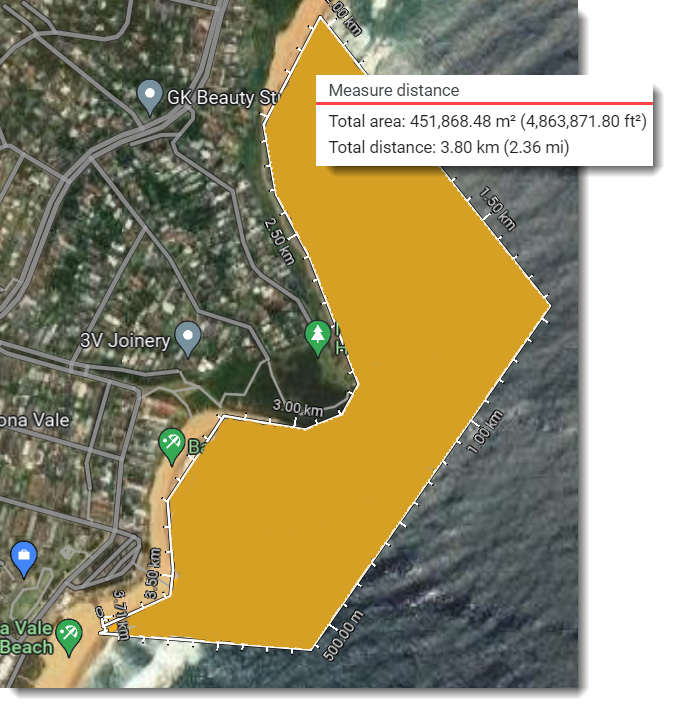
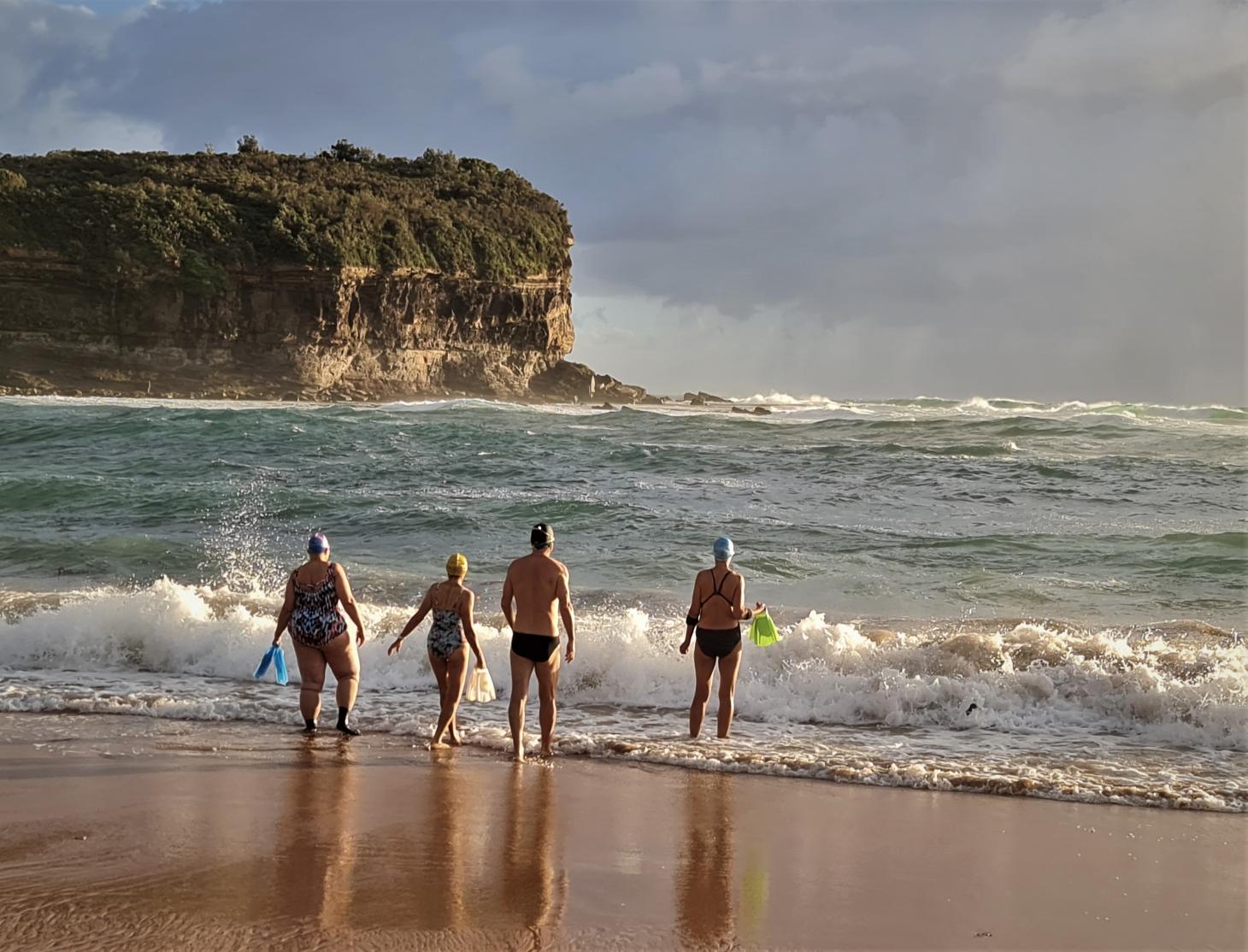
Autumn: Gum Blossom - Fungi Time
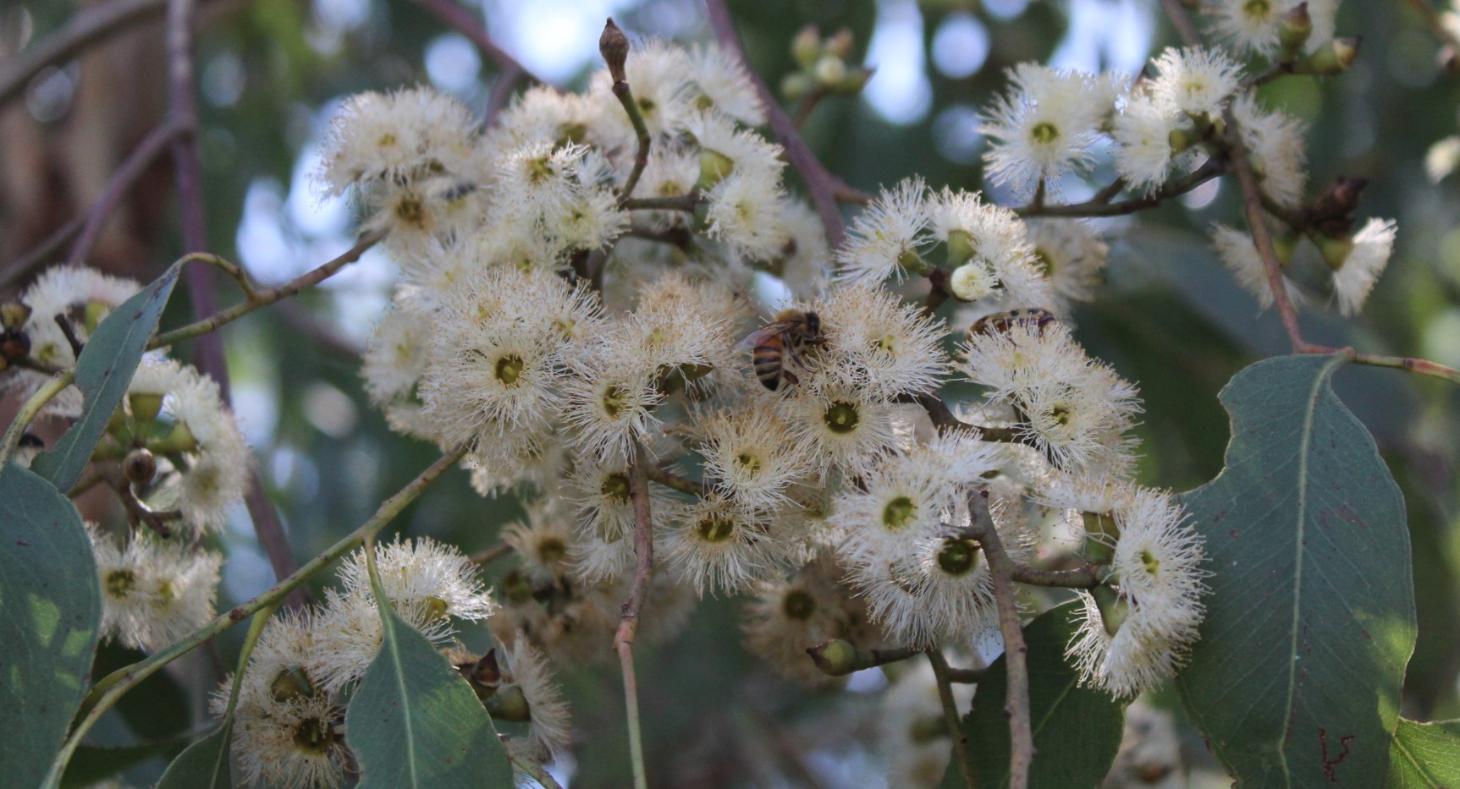
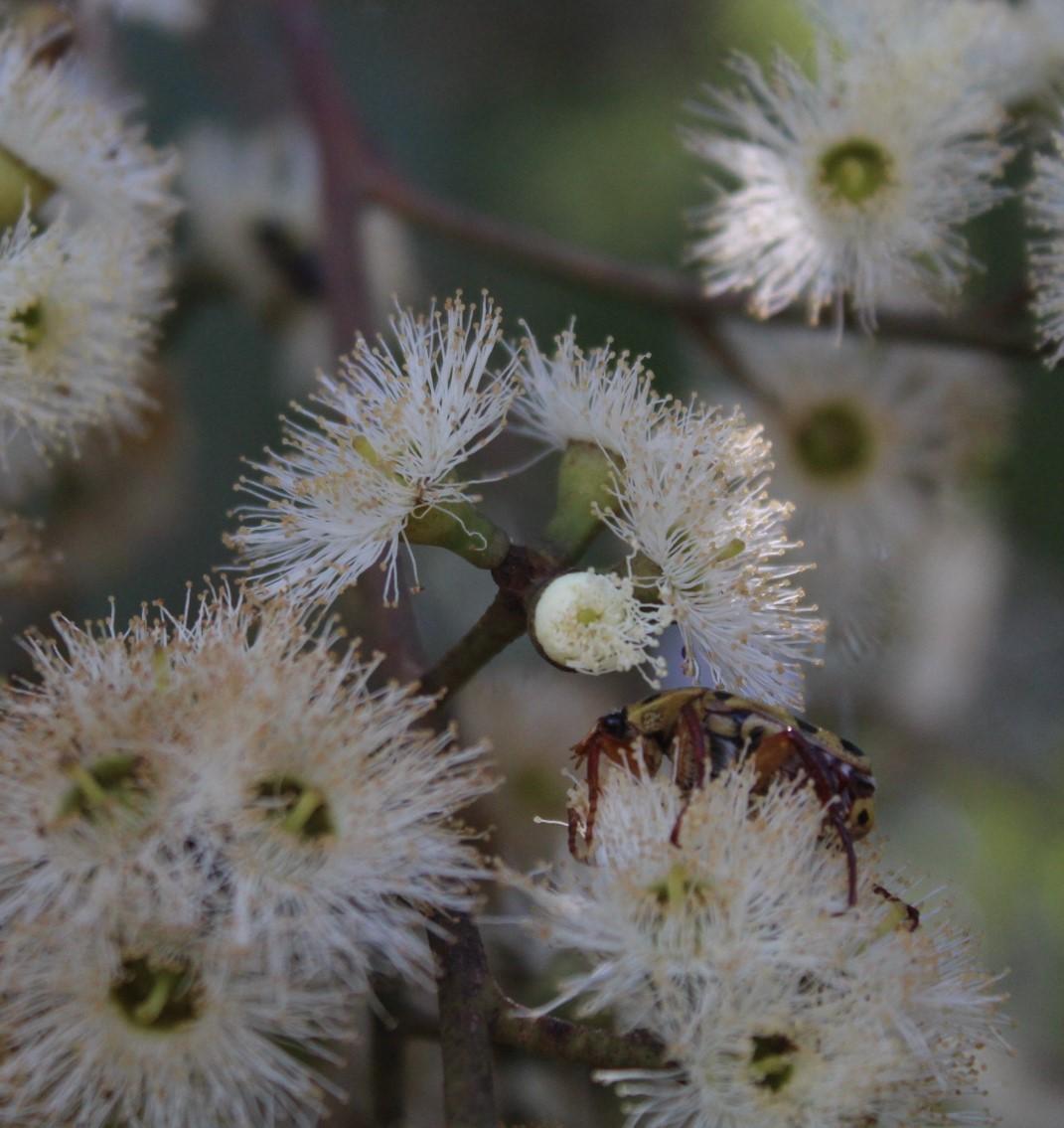
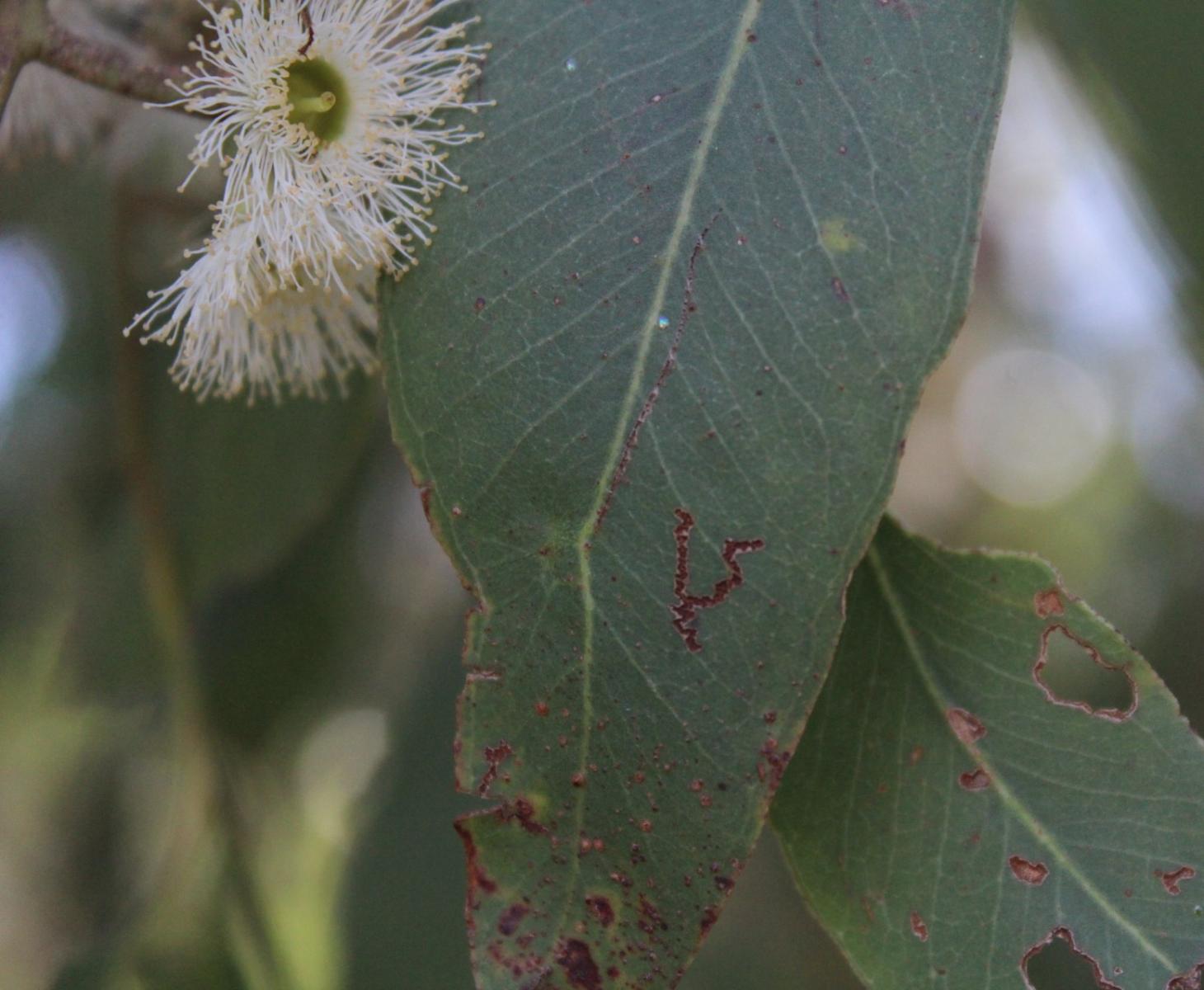
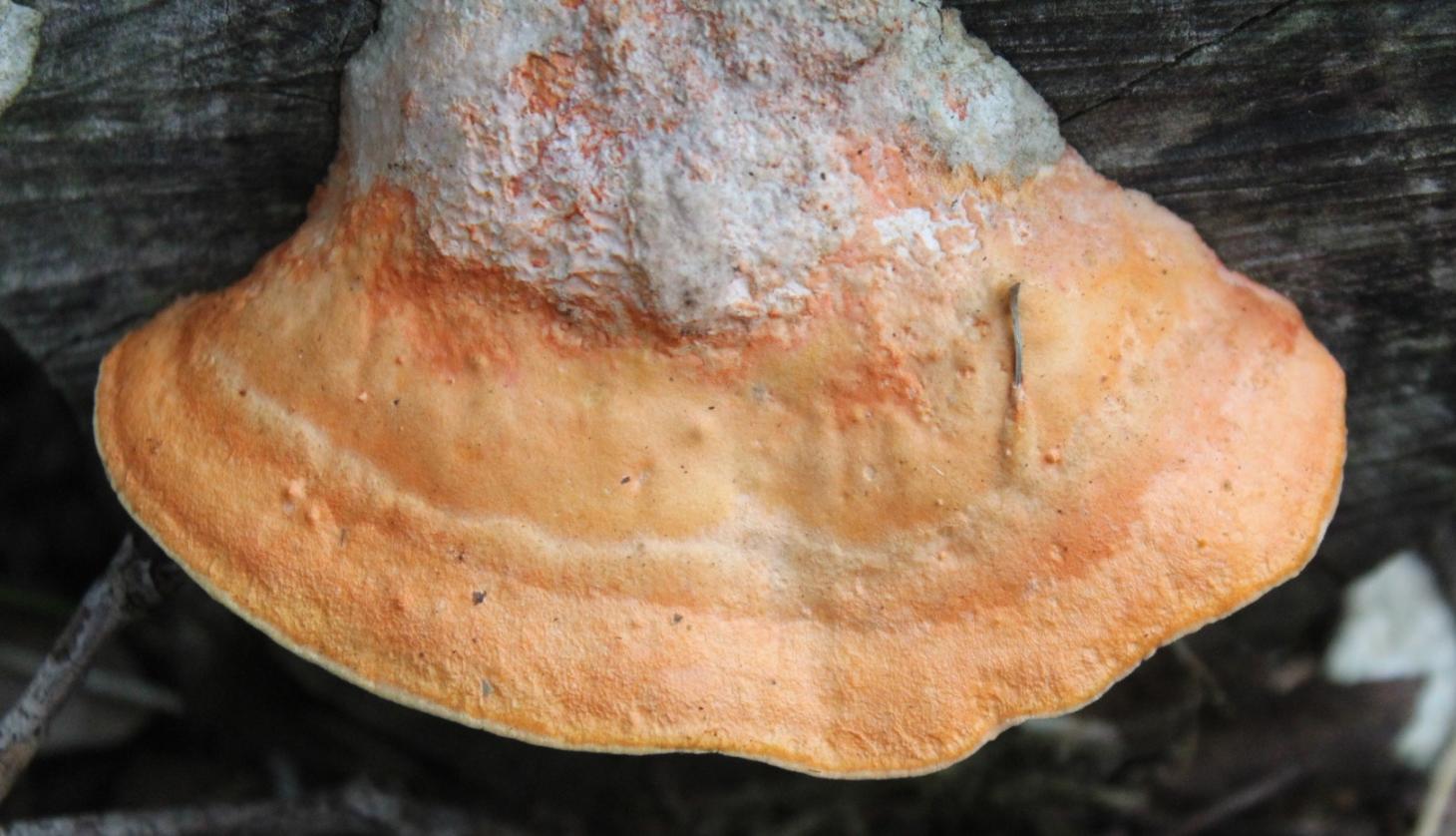
'Nature Prescriptions' Can Improve Physical And Mental Health: Study
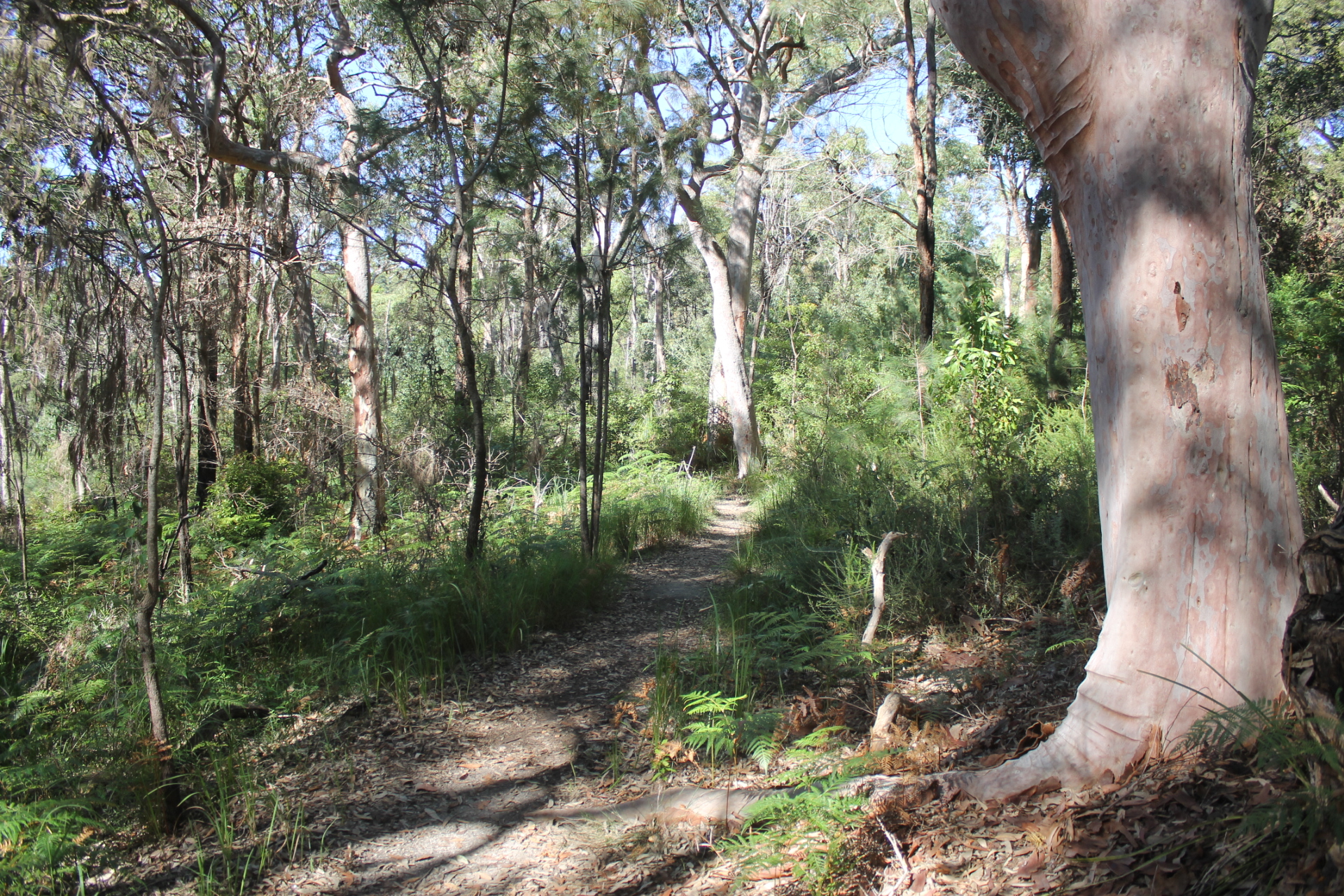
Environmental Impact Reports Hugely Underestimate Consequences For Wildlife
April 2023
Research shows that environmental impact reports hugely underestimate the consequences of new developments for wildlife. This is because they don't take into account how birds and other animals move around between different sites. The research shows how a planned airport development in Portugal could affect more than 10 times the number of Black-tailed Godwits estimated in a previous Environmental Impact Assessment. The team have been studying these Godwits across Europe for over 30 years but they say that any species that moves around is likely to be under-represented by such reports.
Environmental Impact Assessments may hugely underestimate the effect that new developments have on wildlife, according to new research from the University of East Anglia.
This is because they don't take into account how birds and other animals move around between different sites.
A study published today, April 6th 2023, shows how a new airport development planned in Portugal could affect more than 10 times the number of Black-tailed Godwits estimated in a previous Environmental Impact Assessment.
The research team have been studying these Godwits across Europe for over 30 years but they say that any species that moves around is likely to be under-represented by such reports.
Here in the UK, the environmental impact of a planned tidal barrage across the Wash estuary could similarly be much worse than predicted for wild birds and England's largest common seal colony.
Prof Jenny Gill from UEA's School of Biological Sciences said: "Environmental Impact Assessments are carried out when developments are planned for sites where wildlife is protected.
"But the methods used to produce these reports seldom consider how species move around between different sites. This can drastically underestimate the number of animals impacted and this is particularly relevant for species that are very mobile, like birds."
Josh Nightingale, a PhD researcher in UEA's School of Biological Sciences and from the University of Aveiro in Portugal, said: "We studied the Tagus Estuary in Portugal, an enormous coastal wetland where a new airport is currently planned and has already been issued an environmental license.
"This area is Portugal's most important wetland for waterbirds, and contains areas legally protected for conservation.
"But it faces the threat of having a new international airport operating at its heart, with low-altitude flightpaths overlapping the protected area.
"Black-tailed Godwits are one of several wading birds that we see in large numbers on the Tagus.
"The new airport's Environmental Impact Assessment estimated that under six per cent of the Godwit population will be affected by the plans.
"However, by tracking movements of individual Godwits to and from the affected area, we found that the more than 68 per cent of Godwits in the Tagus estuary would in fact be exposed to disturbance from aeroplanes."
The research team have been studying individual Black-tailed Godwits for three decades, by fitting them with uniquely identifiable combinations of coloured leg-rings.
With the help of a network of birdwatchers across Europe, they have recorded the whereabouts of individual Godwits throughout the birds' lives.
"Many of these Godwits spend the winter on the Tagus Estuary," said Dr José Alves, a researcher at the University of Aveiro and visiting academic at UEA's School of Biological Sciences.
"So we used local sightings of colour-ringed birds to calculate how many of them use sites that are projected to be affected by airplanes. We were then able to predict the airport's impact on future Godwit movements across the whole estuary.
"This method of calculating the footprint of environmental impact could be applied to assess many other proposed developments in the UK, particularly those affecting waterbirds and coastal habitats where tracking data is available.
"Eight environmental NGOs together with Client Earth have already taken the Portuguese government to court to contest the approval of this airport development. We hope our findings will help strengthen the case by showing the magnitude of the impacts, which substantially surpass those quantified in the developer's Environmental Impact Assessment," he added.
Conservation beyond Boundaries: Using animal movement networks in Protected Area assessment' Is published in the journal Animal Conservation.
Nightingale, Josh, Gill, Jennifer A., Þórisson, Böðvar, Potts, Peter M., Gunnarsson, Tomas and Alves, Jose. Conservation beyond Boundaries: Using animal movement networks in Protected Area assessment. Animal Conservation (in press), 2023 DOI: 10.1111/acv.12868
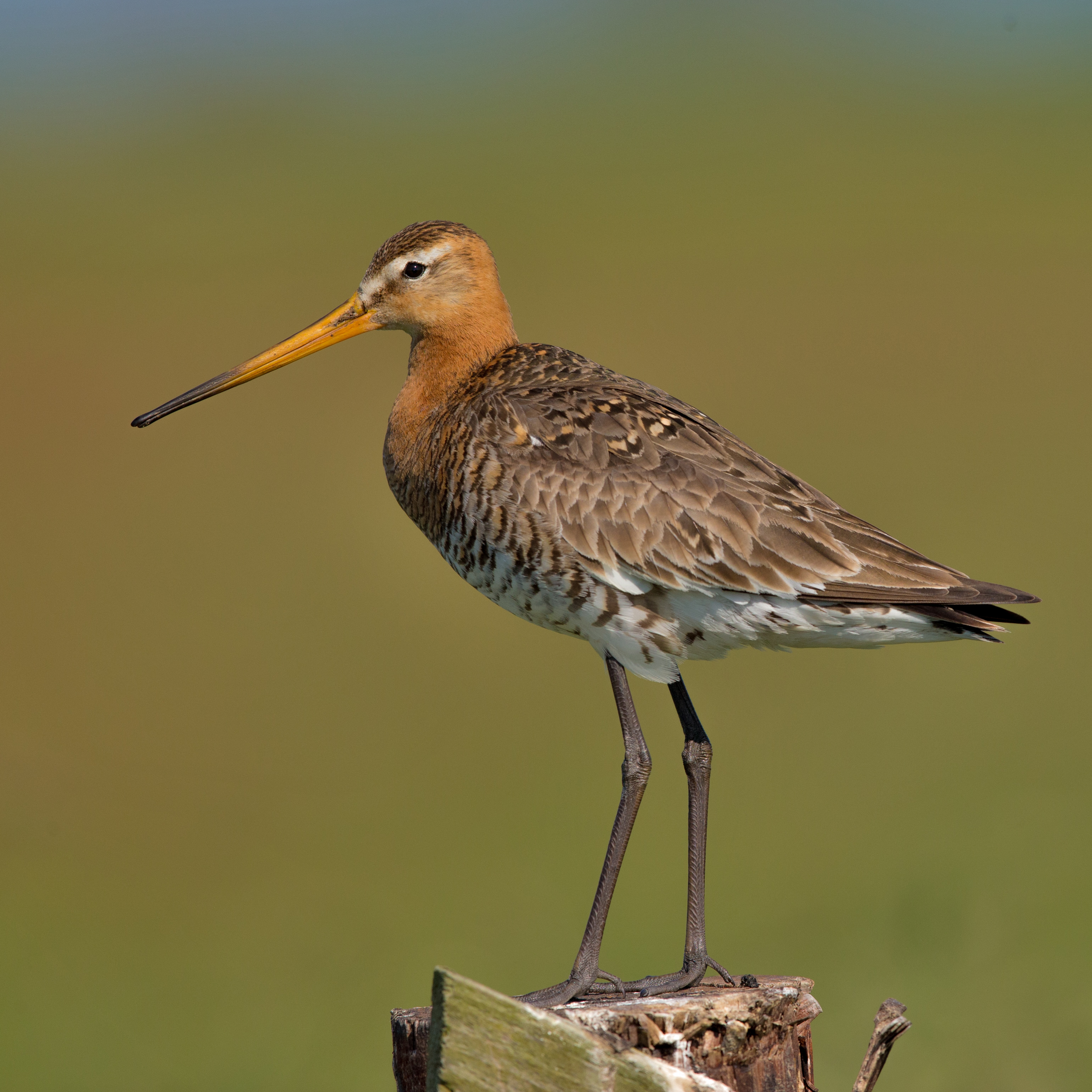
Black-tailed Godwit. Photo: Andreas Trepte
The Black-tailed Godwit is a migratory wading bird that breeds in Mongolia and Eastern Siberia and flies to Australia for the southern Summer. In NSW, it is most frequently recorded at Kooragang Island (Hunter River estuary), with occasional records elsewhere along the coast, including the Sydney basin, and inland. Records in western NSW indicate that a regular inland passage is used by the species, as it may occur around any of the large lakes in the western areas during Summer, when the muddy shores are exposed. The species has been recorded within the Murray-Darling Basin, on the western slopes of the Northern Tablelands and in the far north-western corner of the state.
The black-tailed godwit (Limosa limosa) is a large, long-legged, long-billed shorebird first described by Carl Linnaeus in 1758. It is a member of the godwit genus, Limosa. There are four subspecies, all with orange head, neck and chest in breeding plumage and dull grey-brown winter coloration, and distinctive black and white wingbar at all times.
A large sandpiper reaching 44 cm long, with a wingspan of 63 - 75 cm. It has a distinctive long, straight bill that is pink with a black tip. The wing has a white wing-bar across the dark flight feathers, and white underwing coverts. There is a sharp demarcation between the white rump and the black tail. Legs are greenish-black, long and trailing. The non-breeding plumage, observed in Australia, is greyish-brown above and white below, and a grey breast. There is a broad white stripe on the underwing. The iris is brown. Most readily mistaken for the similar and more common Bar-tailed Godwits Limosa lapponica. Distinguishing features of the Black-tailed Godwit include the black tail in flight; longer, more pink, non-upturned bill; and non-streaked breast. Grey to rufous-chestnut coloured breeding plumage may be visible in some Australian birds just after arrival in spring, or prior to departure in autumn, and in some over-wintering birds.
It is listed as Vulnerable in NSW and Threatened throughout the world. It comes to Australia to feed and rest prior to the northern breeding season.
Activities to assist this species
- Raise visitor awareness about the presence of this and other threatened shorebird species; provide information on how visitors' actions will affect the species' survival.
- Searches for the species should be conducted in suitable habitat in proposed development areas in appropriate time of the year.
- Manage estuaries and inland waterbodies and the surrounding landscape, to ensure the natural hydrological regimes are maintained.
- Protect and maintain known or potential habitats; implement protection zones around known habitat sites and recent records.
- Assess the importance of sites to the species' survival; include the linkages the site provides for the species between ecological resources across the landscape.
We rely on expert predictions to guide conservation. But even experts have biases and blind spots

When faced with uncertainty, we often look for predictions by experts: from election result forecasts, to the likely outcomes of medical treatment. In nature conservation, we turn to expert opinion to assess extinction risk, or predict the long-term responses of plant species to fire management.
But how reliable are these predictions? There’s a well known saying, “Prediction is difficult, particularly when it involves the future”.
In our new research, we put this to the test. We asked eight experienced ornithologists to predict how bird species respond when farmland is revegetated – a common conservation practice.
The result? There was a surprising amount of variation among experts. And there were consistent biases, such as favouring birds commonly seen on farms while underestimating small woodland species. However, when we combined their responses, we got better outcomes.
Does this mean we shouldn’t use such expertise? No. Expert knowledge has a vital role in conservation decisions.
But like anything, it has limitations we should recognise. We should treat expert knowledge as a guide, rather than a source of truth.

How Do You Put Experts To The Test?
Expert knowledge is commonly used for making decisions in conservation, yet it is seldom tested.
We asked our expert ornithologists to predict which bird species would be found at 20 revegetation sites on farms in western Victoria, which were spread across an area of more than 1,400 square kilometres.
We gave each expert detailed information about the sites, including a map, the size of the revegetation plot and when it was planted, the number of tree species planted, and management at the site.
Our experts then had to make judgements about how likely specific bird species were to be detected there. This was based on a list of more than 100 species for each site, which had been recorded in the surrounding district.
Then we compared their predictions with data from bird surveys of the sites – undertaken by different experienced ornithologists – as well as a random selection of bird species.
What did we find? A lot of variation between our experts.
Across the eight ornithologists, the average number of species they considered likely to be detected at sites ranged from 15 to 45. The average recorded from bird surveys was 19.
The predicted composition of the bird community at each site also varied between experts. Some were closer in their predictions than others, but all differed significantly from the community of bird species actually observed.
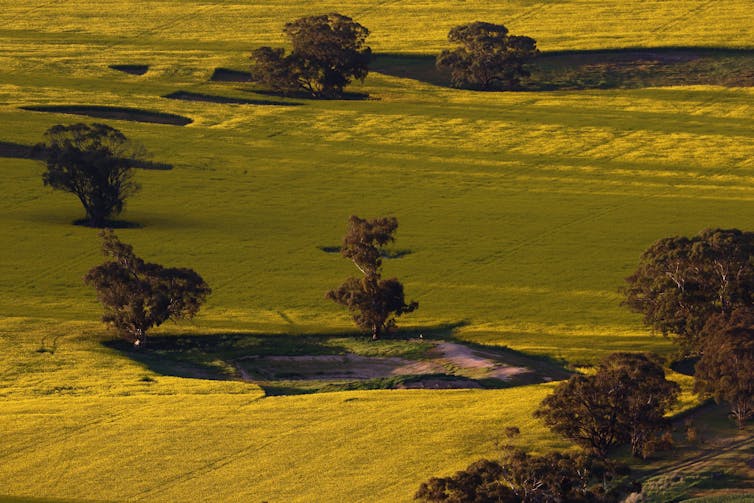
We All Have Biases – And Experts Are Not Immune
You might wonder if there were similarities in what the experts got wrong. There were.
By and large, our experts overestimated how likely common farmland species – like the galah, eastern rosella, willie wagtail and magpie-lark – would be. They also overestimated the likelihood of larger species that can occur in open country with scattered trees, such as the laughing kookaburra and black-faced cuckoo-shrike.
Why might this be? These species are very visible and common in farm landscapes, but they also range widely and are hence less likely to occur at a particular site while it was being surveyed.
By contrast, our experts tended to underestimate the presence of small woodland birds, such as the brown thornbill, superb fairy-wren, silvereye and grey fantail.
When we combined the expertise of our eight ornithologists, we saw less variability. When grouped, our experts performed much better than a random selection of bird species. Even so, their predictions still differed strongly from those actually observed.
Why does this matter? The loss of woodland birds in farmland areas of southern Australia is a major conservation concern. Revegetation helps restore wooded habitats for such species. These biases could lead to conservation managers discounting the benefits of revegetation for conservation.
The task we gave our experts was not easy. To make reliable predictions is complex. For each species, they had to make multiple judgements. How common is the species in this region? Was the revegetated area likely to provide suitable habitat? How might this species be influenced by the age of the planting and the diversity of tree species? Would it be a resident species, or a visitor? Regular or irregular?
Some of the variation we found is likely due to differing levels of familiarity with the birds of western Victoria. Our experts also had different levels of experience in carrying out surveys and studying birds in revegetated habitats.

What Does This Mean For Our Reliance On Expertise?
Expert knowledge may be the best – or only – source of information for decision making when we need to rely on predictions, where knowledge has to be applied in novel circumstances, or where management involves complex interacting factors.
So how can we improve the accuracy and reliability of expert predictions, given we all have biases and gaps in our knowledge?
Carefully selecting experts based on relevant experience, using a structured protocol to draw out information, and combining knowledge from multiple experts can help.
Where possible, we should seize the opportunity to test expert predictions and identify potential biases. At present, this kind of testing is rare.
Good conservation management benefits from the wealth of knowledge held by experts, but it also depends on evidence from well-designed empirical studies.
Expert predictions are only as good as the data – and the experience – on which their judgements are based. ![]()
Andrew Bennett, Adjunct Professor in Ecology, La Trobe University; Angie Haslem, Research Fellow, La Trobe University; Jim Thomson, Senior Scientist, Arthur Rylah Institute for Environmental Research, and Tracey Hollings, Associate Research Scientist, Ecological Modelling, Arthur Rylah Institute for Environmental Research
This article is republished from The Conversation under a Creative Commons license. Read the original article.
Nature is in crisis. Here are 10 easy ways you can make a difference
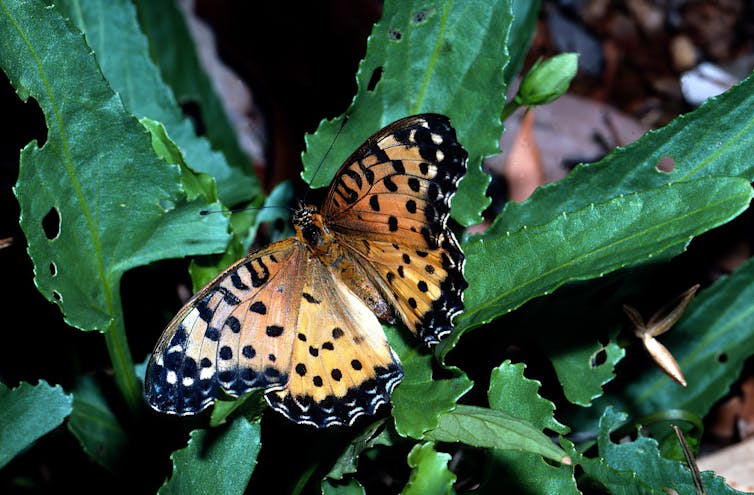
Last month, Sir David Attenborough called on United Kingdom residents to “go wild once per week”. By this, he meant taking actions which help rather than harm the natural world, such as planting wildflowers for bees and eating more plant-based foods.
Australia should follow suit. We love our natural environment. But we have almost 10 times more species threatened with extinction than the UK. How we act can accelerate these declines – or help stop them.
We worked with 22 conservation experts to identify 10 actions which actually do help nature.
Why Do We Need To Act For Nature?
If you go for a bushwalk, you might wonder what the problem is. Gums, wattles, cockatoos, honeyeaters, possums – everything is normal, right? Alas, we don’t notice what’s no longer there. Many areas have only a few of the native species once present in large numbers.
We are losing nature, nation-wide. Our threatened birds are declining very rapidly. On average, there are now less than half (48%) as many of each threatened bird species than in 1985. Threatened plants have fared even worse, with average declines of over three quarters (77%).
Biodiversity loss will have far-reaching consequences and is one of the greatest risks to human societies, according to the OECD.
The small choices we all make accumulate to either help or harm nature.
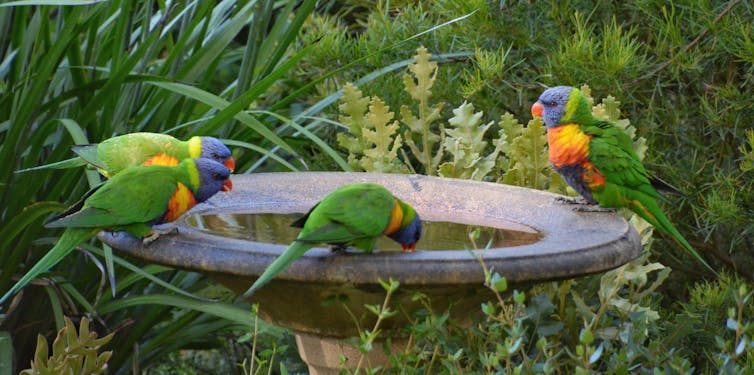
Our Top Ten Actions To Help Biodiversity
1. Choose marine stewardship council certified seafood products

Why? Overfishing is devastating for fish species. By-catch means even non-food species can die in the process.
Where to start: Look for the blue tick of the Marine Stewardship Council (MSC) or the green tick of the Aquaculture Stewardship Council (ASC) approval on seafood products where you shop, or use the Australia’s Sustainable Seafood Guide. Certified products are caught or farmed sustainably.
2. Keep your dog on a leash in natural areas – including beaches
Why? Off-leash dogs scare and can attack native wildlife. When animals and birds have to spend time and energy fleeing, they miss out on time to eat, rest and feed their young.
Where to start: Look for local off-leash areas and keep your dog leashed everywhere else.

3. Cut back on beef and lamb
Why? Producing beef and lamb often involves destroying or overgrazing natural habitat, as well as culling native predators like dingoes.
Where to start: Eat red meat less often and eat smaller portions when you do. Switch to poultry, sustainable seafood and more plant-based foods like beans and nuts. Suggest a meatless Monday campaign in your friend and family group chat to help wildlife – and your own health.

4. Donate to land protection organisations.
Why? These organisations protect land in perpetuity. Donations help them expand and do important on-ground biodiversity management.
Where to start: Check out organisations such as the Australian Wildlife Conservancy, Bush Heritage Australia, Trust for Nature, and Tasmanian Land Conservancy.
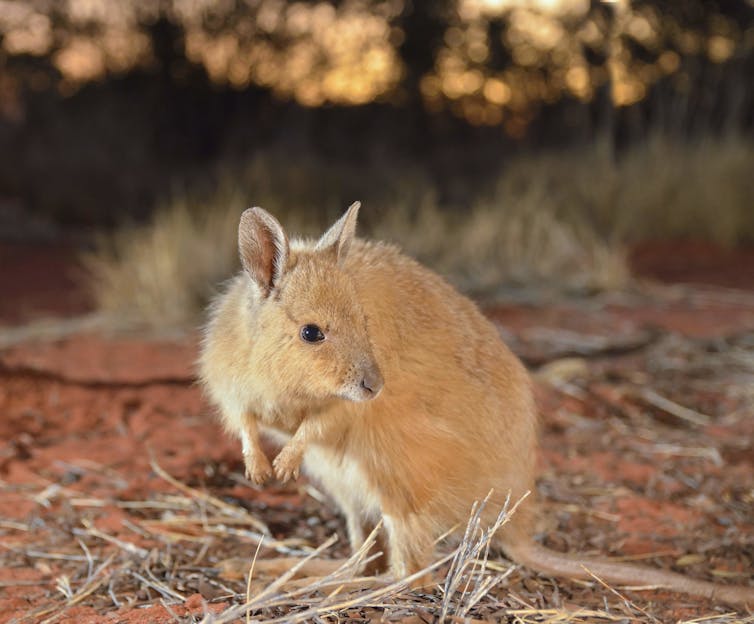
5. Make your investments biodiversity-friendly
Why? Many funds include companies whose business model relies on exploiting the natural environment. Your money could be contributing. Looking for biodiversity-positive investments can nudge funds and companies to do better.
Where to start: Look at the approach your superannuation fund takes to sustainability and consider switching if you aren’t impressed. You could also explore the growing range of biodiversity-friendly investment funds.
6. Donate to threatened species and ecosystem advocacy organisations
Why? These groups rely on donations to fund biodiversity advocacy, helping to create better planning and policy outcomes for our species.
Where to start: Look into advocacy groups like WWF Australia, Birdlife Australia, Biodiversity Council, Environment Centre NT, and the Environmental Defenders Office.
7. Plant and maintain a wildlife garden wherever you have space
Why? Our cities aren’t just concrete jungles – they’re important habitat for many threatened species. Gardening with wildlife in mind increases habitat and connections between green space in suburbs.
Where to start: Your council or native nursery is often a great source of resources and advice. Find out if you have a threatened local species such as a butterfly or possum you could help by growing plants, but remember that non-threatened species also need help.

8. Vote for political candidates with strong environmental policies
Why? Electing pro-environment candidates changes the game. Once inside the tent, environmental candidates can shape public investment, planning, policy and programs.
Where to start: Look into local candidate and party policies at every election. Consider talking to your current MP about environmental issues.
9. Desex your cat and keep it inside or in a cat run
Why? Research shows every pet cat kept inside saves the lives of 110 native animals every year, on average. Desexing cats avoids unexpected litters and helps to keep the feral cat population down.
Where to start: Keep your cat inside, or set up a secure cat run to protect wildlife from your cute but lethal pet. It’s entirely possible to have happy and healthy indoor cats. Indoor cats also live longer and healthier lives.
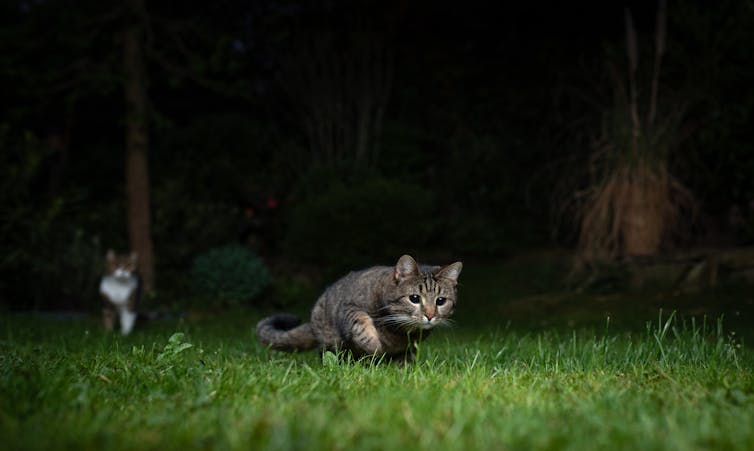
10. Push for better control of pest animals
Why? Pest species like feral horses, pigs, cats, foxes and rabbits are hugely destructive. Even native species can become destructive, such as when wallaby populations balloon when dingoes are killed off.
Where to start: Look into the damage these species do and tell your friends. Public support for better control is essential, as these issues often fly under the radar.
Making A Difference
Conservation efforts may seem far away. In fact, our daily choices and actions have a considerable effect.
Talking openly about issues and actions can help these behaviours and habits spread. If we all do a small part of the work and support others to do the same, we will see an enormous effect.![]()
Matthew Selinske, Senior Research Fellow, RMIT University; Georgia Garrard, Senior Lecturer, School of Ecosystem and Forest Sciences, The University of Melbourne; Jaana Dielenberg, University Fellow, Charles Darwin University, and Sarah Bekessy, Professor in Sustainability and Urban Planning, Leader, Interdisciplinary Conservation Science Research Group (ICON Science), RMIT University
This article is republished from The Conversation under a Creative Commons license. Read the original article.
Scientists Show How We Can Anticipate Rather Than React To Extinction In Mammals
April 10, 2023
Most conservation efforts are reactive. Typically, a species must reach threatened status before action is taken to prevent extinction, such as establishing protected areas. A new study published in the journal Current Biology on April 10 shows that we can use existing conservation data to predict which currently unthreatened species could become threatened and take proactive action to prevent their decline before it is too late.
"Conservation funding is really limited," says lead author Marcel Cardillo of Australian National University. "Ideally, what we need is some way of anticipating species that may not be threatened at the moment but have a high chance of becoming threatened in the future. Prevention is better than cure."
To predict "over-the-horizon" extinction risk, Cardillo and colleagues looked at three aspects of global change -- climate change, human population growth, and the rate of change in land use -- together with intrinsic biological features that could make some species more vulnerable. The team predicts that up to 20% of land mammals will have a combination of two or more of these risk factors by the year 2100.
"Globally, the percentage of terrestrial mammal species that our models predict will have at least one of the four future risk factors by 2100 ranges from 40% under a middle-of-the-road emissions scenario with broad species dispersal to 58% under a fossil-fueled development scenario with no dispersal," say the authors.
"There's a congruence of multiple future risk factors in Sub-Saharan African and southeastern Australia: climate change (which is expected to be particularly severe in Africa), human population growth, and changes in land use," says Cardillo. "And there are a lot of large mammal species that are likely to be more sensitive to these things. It's pretty much the perfect storm."
Larger mammals in particular, like elephants, rhinos, giraffes, and kangaroos, are often more susceptible to population decline since their reproductive patterns influence how quickly their populations can bounce back from disturbances. Compared to smaller mammals, such as rodents, which reproduce quickly and in larger numbers, bigger mammals, such as elephants, have long gestational periods and produce fewer offspring at a time.
"Traditionally, conservation has relied heavily on declaring protected areas," says Cardillo. "The basic idea is that you remove or mitigate what is causing the species to become threatened."
"But increasingly, it's being recognized that that's very much a Western view of conservation because it dictates separating people from nature," says Cardillo. "It's a sort of view of nature where humans don't play a role, and that's something that doesn't sit well with a lot of cultures in many parts of the world."
In preventing animal extinction, the researchers say we must also be aware of how conservation impacts Indigenous communities. Sub-Saharan Africa is home to many Indigenous populations, and Western ideas of conservation, although well-intended, may have negative impacts.
Australia has already begun tackling this issue by establishing Indigenous Protected Areas (IPAs), which are owned by Indigenous peoples and operate with the help of rangers from local communities. In these regions, humans and animals can coexist, as established through collaboration between governments and private landowners outside of these protected areas.
"There's an important part to play for broad-scale modeling studies because they can provide a broad framework and context for planning," says Cardillo. "But science is only a very small part of the mix. We hope our model acts as a catalyst for bringing about some kind of change in the outlook for conservation."
Marcel Cardillo, Alexander Skeels, Russell Dinnage. Priorities for conserving the world’s terrestrial mammals based on over-the-horizon extinction risk. Current Biology, 2023; 33 (7): 1381 DOI: 10.1016/j.cub.2023.02.063
Swamp Wallaby At Palm Beach
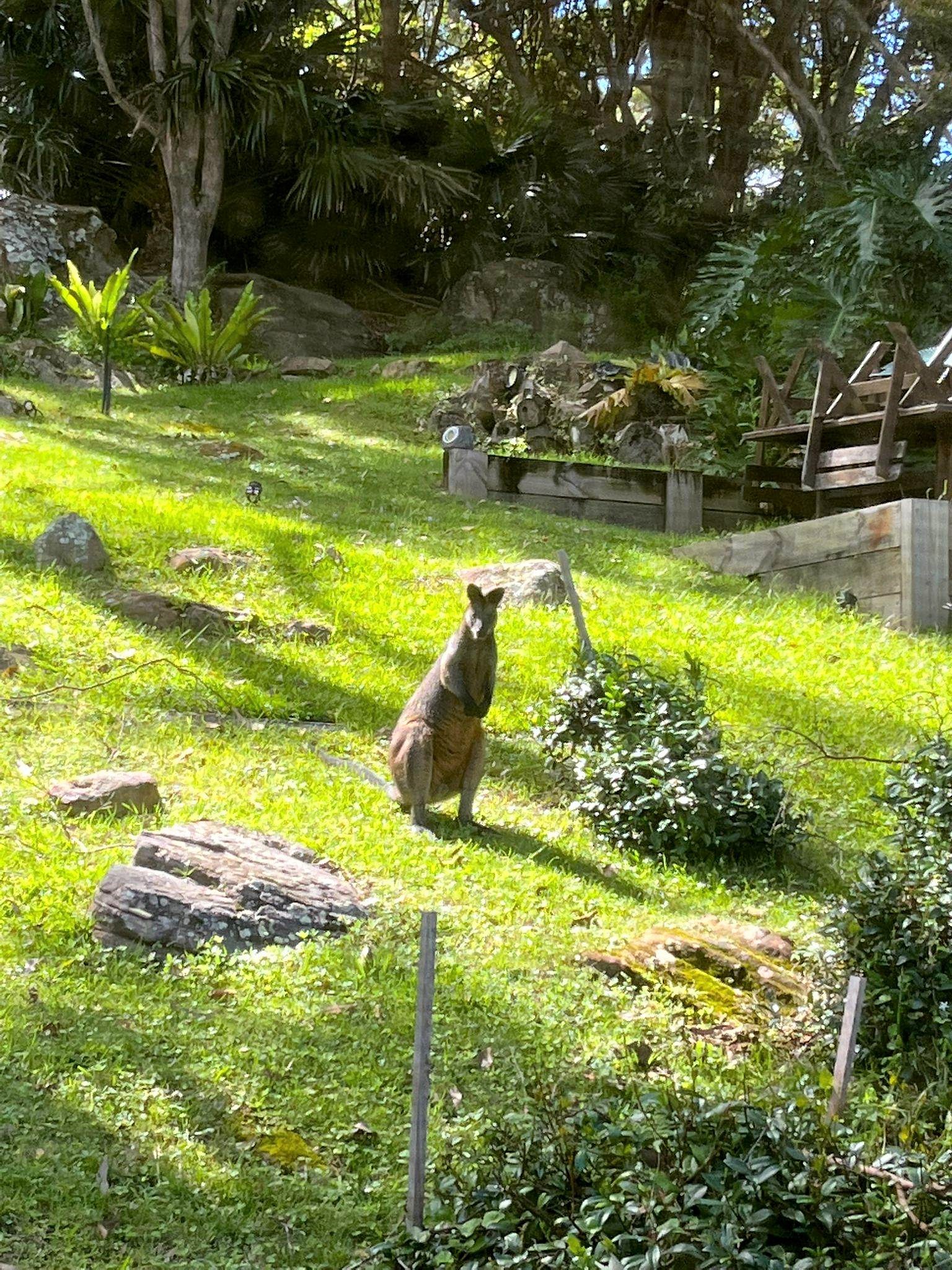
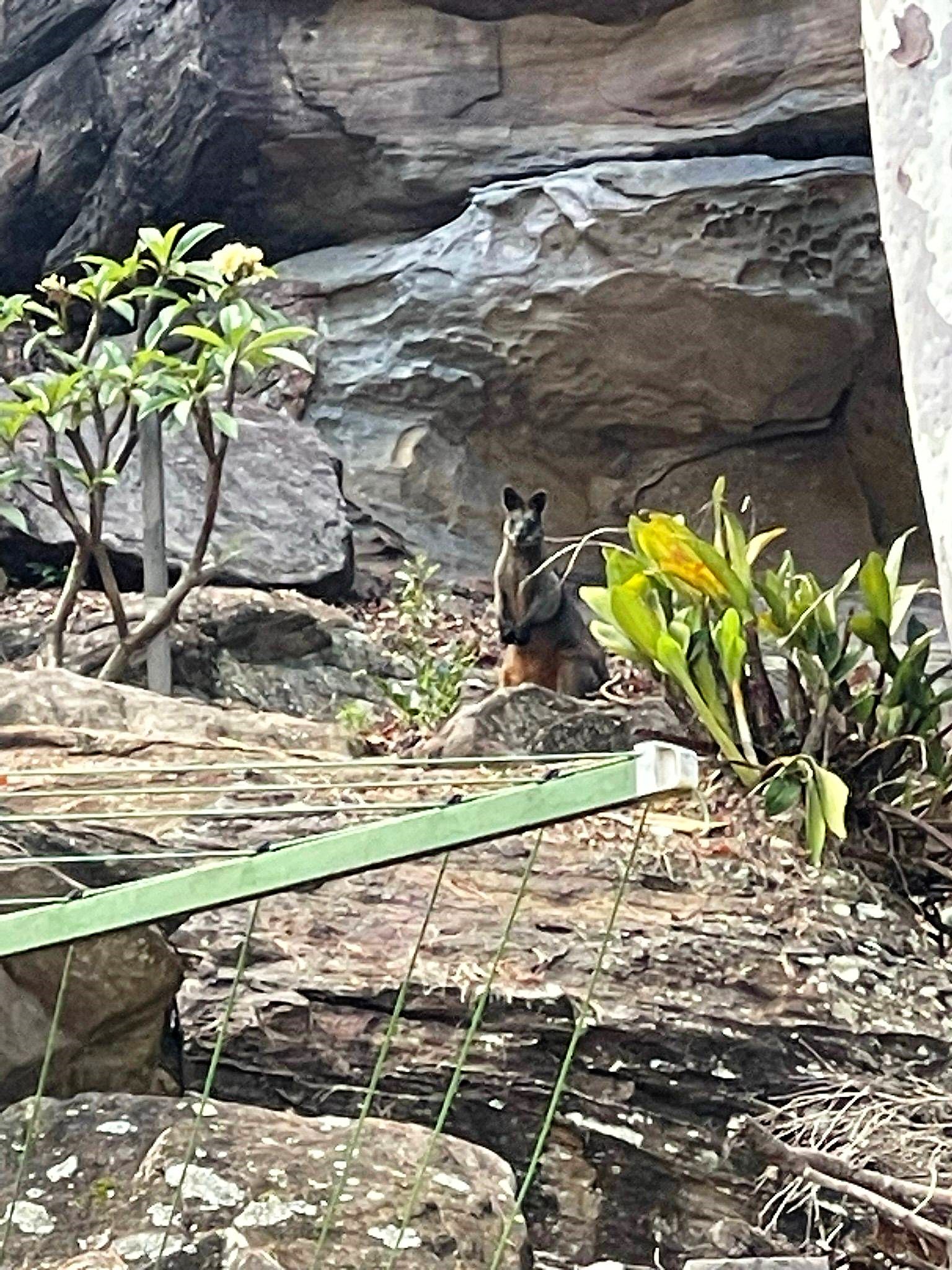
Northern Beaches Clean Up Crew: Avalon Beach April 30
Come and join us for our family friendly April clean up, close to Avalon Surf Lifesaving Club (558 Barrenjoey road, Avalon) on the 30th at 10am.
We have gloves, bags, and buckets, and grabbers. We're trying to remove as much plastic and rubbish as possible before it enters the ocean. Some of us can focus on the bush area and sandy/rocky areas, and others can walk along the beach and even clean up in the water (at own risk). We will clean up until around 11.20, and after that, we will sort and count the rubbish so we can contribute to research by entering it into a marine debris database. The sorting and counting is normally finished around noon, and we'll often go for lunch together at our own expense. We understand if you cannot stay for this part, but are grateful if you can. We appreciate any help we can get, no matter how small or big.
No booking required - just show up on the day. We're a friendly group of people, and everyone is welcome to this family friendly event. It's a nice community - make some new friends and do a good deed for the planet at the same time. For everyone to feel welcome, please leave political and religious messages at home - this includes t-shirts with political campaign messages. There is a council carpark, but it is often busy on Sundays, so check streets close by as well if it's full or please consider using public transport.
Message us on our social media or send us an email if you are lost. All welcome - the more the merrier. Please invite your friends too!
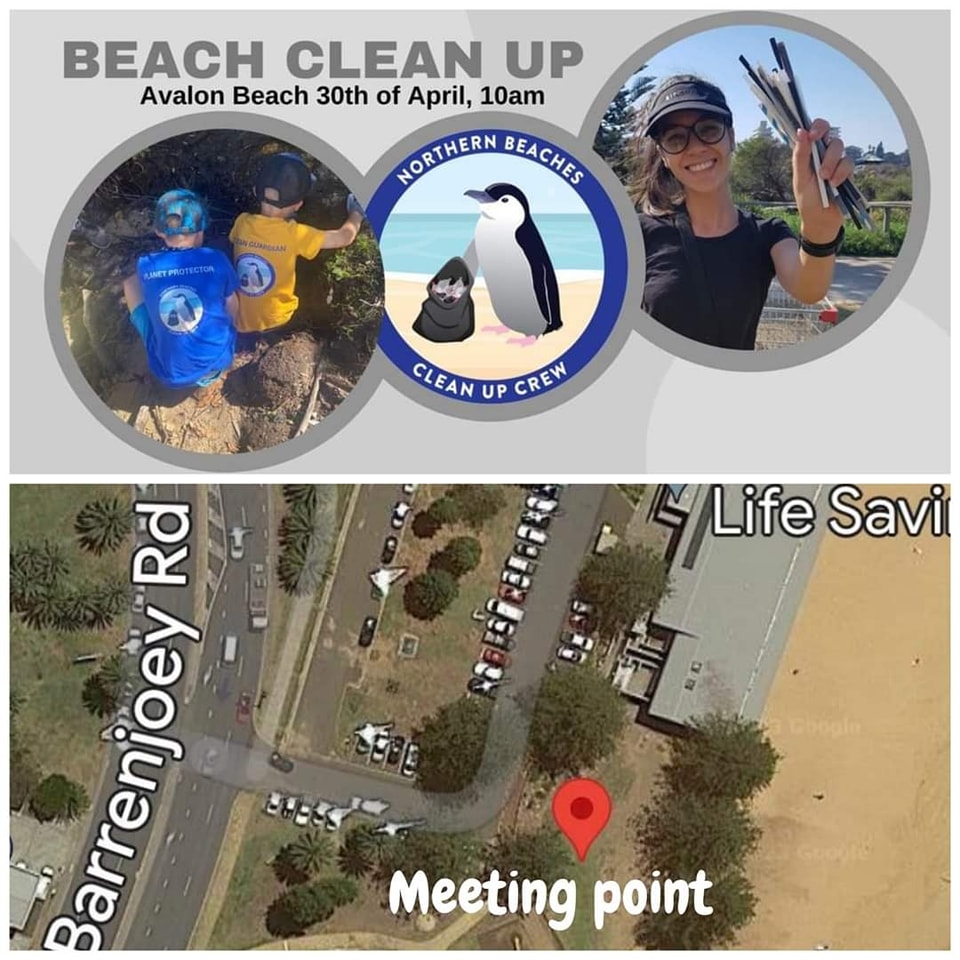
Permaculture Northern Beaches - Upcoming Events
- Learn about Permaculture design
- Caring for and raising chickens
- Native bees and bee hotels
- Living Skills - soap making
- AND Live Music!
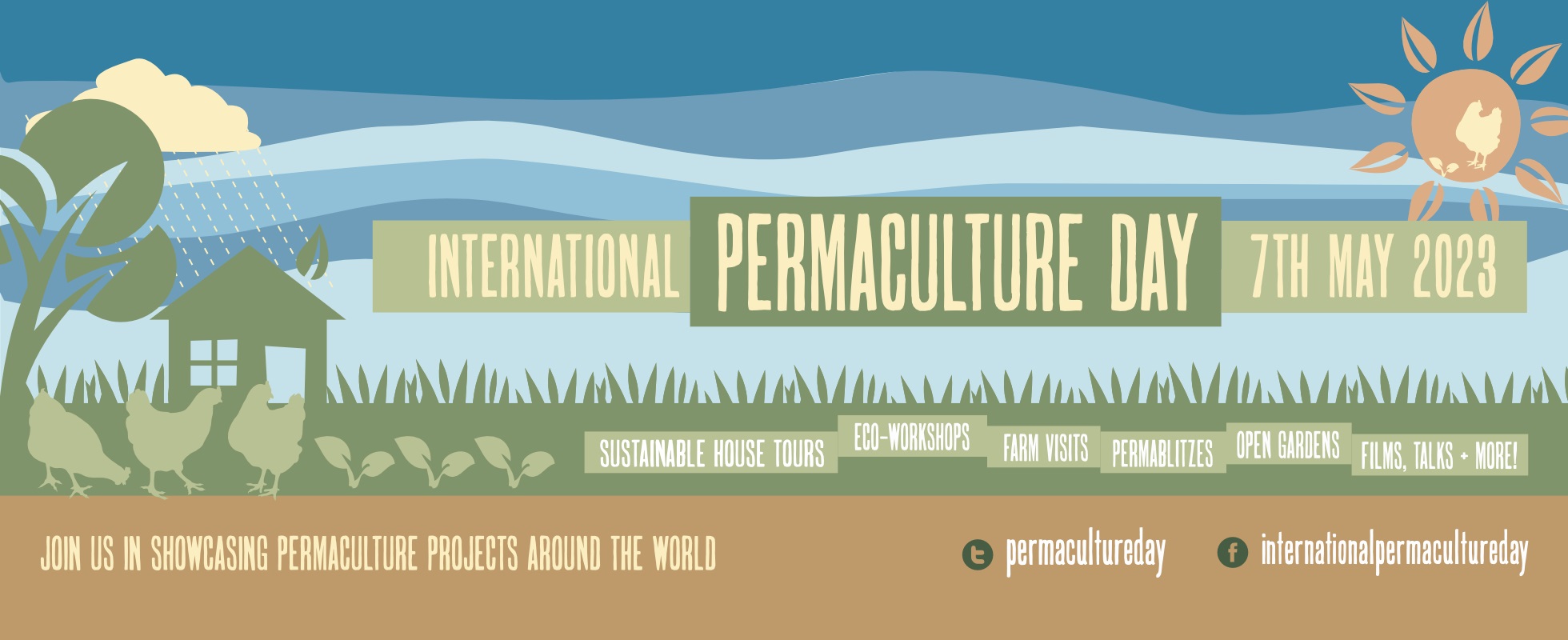
Report Fox Sightings
%20(1).jpg?timestamp=1675893929686)
Weed Of The Season: Cassia - Please Pull Out And Save Our Bush
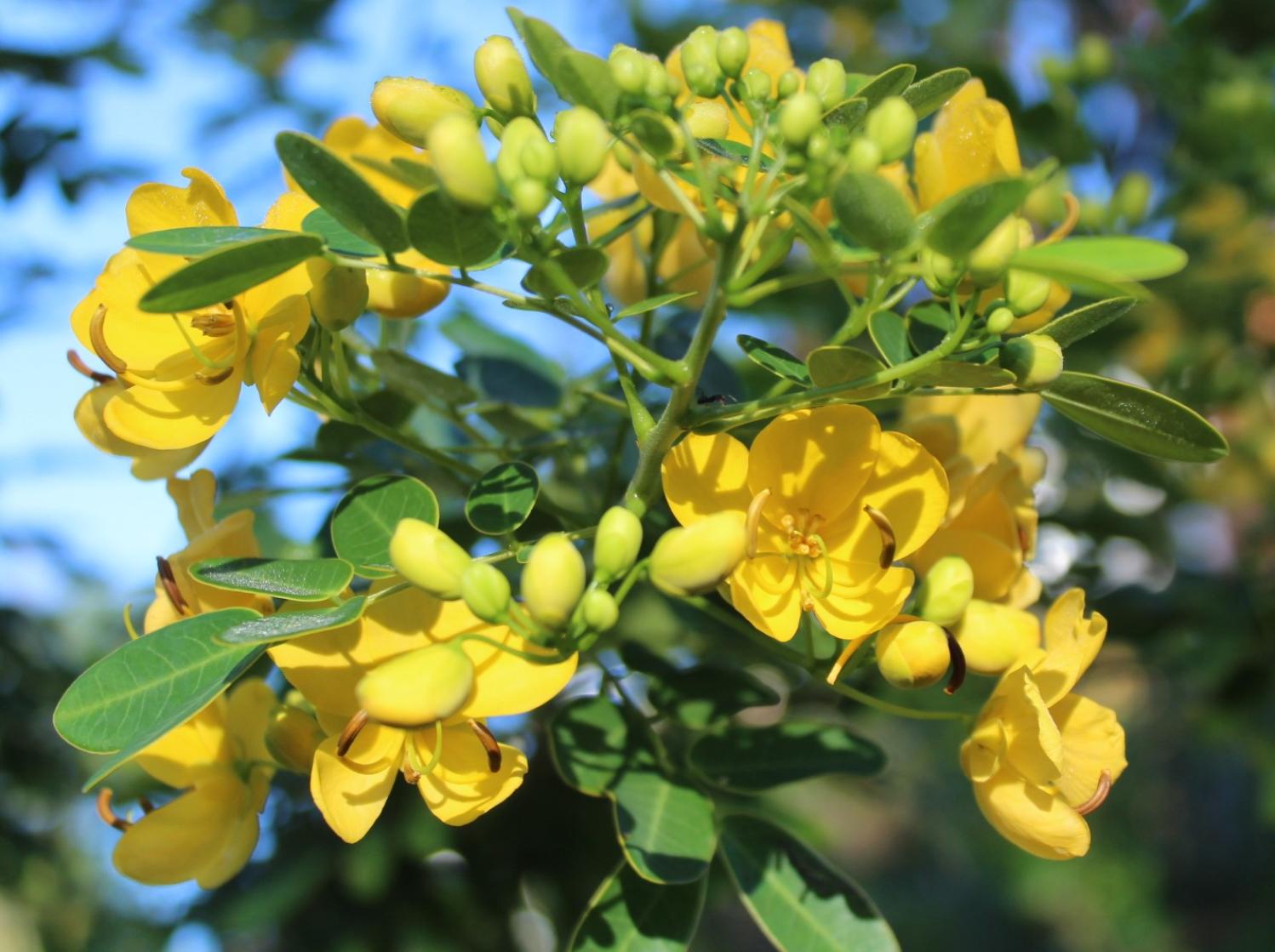
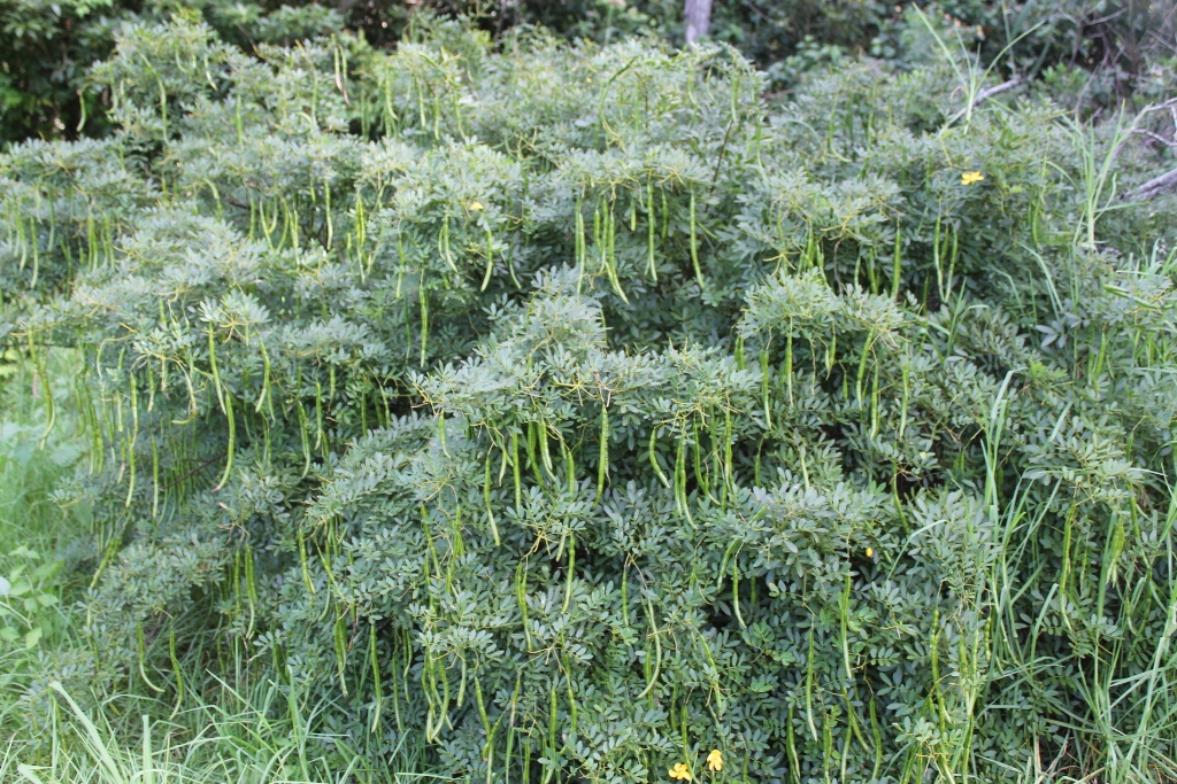
New Marine Wildlife Rescue Group On The Central Coast
A new wildlife group was launched on the Central Coast on Saturday, December 10, 2022.
Marine Wildlife Rescue Central Coast (MWRCC) had its official launch at The Entrance Boat Shed at 10am.
The group comprises current and former members of ASTR, ORRCA, Sea Shepherd, Greenpeace, WIRES and Wildlife ARC, as well as vets, academics, and people from all walks of life.
Well known marine wildlife advocate and activist Cathy Gilmore is spearheading the organisation.
“We believe that it is time the Central Coast looked after its own marine wildlife, and not be under the control or directed by groups that aren’t based locally,” Gilmore said.
“We have the local knowledge and are set up to respond and help injured animals more quickly.
“This also means that donations and money fundraised will go directly into helping our local marine creatures, and not get tied up elsewhere in the state.”
The organisation plans to have rehabilitation facilities and rescue kits placed in strategic locations around the region.
MWRCC will also be in touch with Indigenous groups to learn the traditional importance of the local marine environment and its inhabitants.
“We want to work with these groups and share knowledge between us,” Gilmore said.
“This is an opportunity to help save and protect our local marine wildlife, so if you have passion and commitment, then you are more than welcome to join us.”
Marine Wildlife Rescue Central Coast has a Facebook page where you may contact members. Visit: https://www.facebook.com/profile.php?id=100076317431064
- Ph: 0478 439 965
- Email: marinewildlifecc@gmail.com
- Instagram: marinewildliferescuecc

Watch Out - Shorebirds About
.JPG.opt1460x973o0,0s1460x973.jpg?timestamp=1663629195339)
Possums In Your Roof?: Do The Right Thing

Aviaries + Possum Release Sites Needed

Bushcare In Pittwater
Where we work Which day What time
Avalon
Angophora Reserve 3rd Sunday 8:30 - 11:30am
Avalon Dunes 1st Sunday 8:30 - 11:30am
Avalon Golf Course 2nd Wednesday 3 - 5:30pm
Careel Creek 4th Saturday 8:30 - 11:30am
Toongari Reserve 3rd Saturday 9 - 12noon (8 - 11am in summer)
Bangalley Headland 2nd Sunday 9 to 12noon
Bayview
Winnererremy Bay 4th Sunday 9 to 12noon
Bilgola
North Bilgola Beach 3rd Monday 9 - 12noon
Algona Reserve 1st Saturday 9 - 12noon
Plateau Park 1st Friday 8:30 - 11:30am
Church Point
Browns Bay Reserve 1st Tuesday 9 - 12noon
McCarrs Creek Reserve Contact Bushcare Officer To be confirmed
Clareville
Old Wharf Reserve 3rd Saturday 8 - 11am
Elanora
Kundibah Reserve 4th Sunday 8:30 - 11:30am
Mona Vale
Mona Vale Beach Basin 1st Saturday 8 - 11am
Mona Vale Dunes 2nd Saturday +3rd Thursday 8:30 - 11:30am
Newport
Bungan Beach 4th Sunday 9 - 12noon
Crescent Reserve 3rd Sunday 9 - 12noon
North Newport Beach 4th Saturday 8:30 - 11:30am
Porter Reserve 2nd Saturday 8 - 11am
North Narrabeen
Irrawong Reserve 2nd Saturday 2 - 5pm
Palm Beach
North Palm Beach Dunes 3rd Saturday 9 - 12noon
Scotland Island
Catherine Park 2nd Sunday 10 - 12:30pm
Elizabeth Park 1st Saturday 9 - 12noon
Pathilda Reserve 3rd Saturday 9 - 12noon
Warriewood
Warriewood Wetlands 1st Sunday 8:30 - 11:30am
Whale Beach
Norma Park 1st Friday 9 - 12noon
Western Foreshores
Coopers Point, Elvina Bay 2nd Sunday 10 - 1pm
Rocky Point, Elvina Bay 1st Monday 9 - 12noon
Friends Of Narrabeen Lagoon Catchment Activities

Gardens And Environment Groups And Organisations In Pittwater
Can a ‘nature repair market’ really save Australia’s environment? It’s not perfect, but it’s worth a shot

Australia has embarked on an experiment to create a market for biodiversity. No, we’re not talking about buying and selling wildlife, although, sadly, there is a black market for that. This is about repairing and restoring landscapes, providing habitat for threatened species and getting business and philanthropy to help pay for it.
When Environment and Water Minister Tanya Plibersek introduced the Nature Repair Market Bill to parliament last week, she said:
Just because something is difficult, doesn’t mean we shouldn’t do it. It means we should do it properly.
I agree. We have been publishing research on this topic for decades, discussing the issue with scientists, social scientists and economists. Now as chief scientist at the not for profit environmental accounting organisation Accounting for Nature and chief councillor at the Biodiversity Council, we are working hard to help turn the theory into reality.
There is, rightfully, a lot of concern about the integrity of biodiversity markets. However, with appropriate processes in place from governments, including independent authorities that verify biodiversity outcomes, and vigilance from the community, there is potential to create a well-behaved, net-positive biodiversity market in Australia.
What Does A Biodiversity Market Look Like?
Australia has signed up to the United Nations’ Convention on Biological Diversity, which commits us to protecting and restoring 30% of the land for nature. This means 30% of every kind of habitat – it can’t just be deserts and salt lakes, for example.
That’s a big task, and governments can’t do it alone. It’s going to have to be the entire community, every single individual. This isn’t just about protection, a lot will be habitat restoration which needs serious investment.
The general public is increasingly concerned about the decline of nature in their local parks and backyards. One example is a nationwide concern about the disappearance of willie wagtails, a bird many Australians have grown up with. The loss of nature affects everyone, and can harm our mental health. It is not just about threatened species.
Concern for the cassowarry in the wet tropics region of far north Queensland prompted environmental management organisation Terrain NRM (natural resource management) to create a new biodiversity market scheme called Cassowary Credits. Terrain NRM says this is:
a mechanism that enables investors such as governments, philanthropists or corporates to pay landholders and land managers to undertake habitat restoration activities.
Australia has well over half a million different species, and about a third of them have a name. You can’t run a market for that many species – so the challenge will be to develop ways of quantifying biodiversity that are credible and simple.
Trial And Error
A credible market needs a credible biodiversity currency (let’s call it a token). Such a token requires many attributes to make it work. The token should be awarded for measurable outcomes, like an increase in the abundance of hooded robins (a recently listed threatened woodland bird and one of my favourites) on your property, or an improvement in the extent and quality of native vegetation.
These outcomes need to be “additional”, outcomes that would not have otherwise happened without the investment. Ideally outcomes are permanent, and above and beyond what would have happened if we did nothing.
And finally, someone has to want to buy them – there is no point in creating a product when there is no demand. Making a trusted and valuable biodiversity currency is going to take time.
Almost 3,000 years ago the Lydians invented a currency based on metal coins with a ruler’s face stamped on it. That’s still roughly how it works, even with most of our money now being digital, rather than physical in coins and notes. However, even after 3,000 years, money is not yet perfect. Its value constantly changes, and it can collapse, too. There’s still fraud and scams – despite a global army of accountants, financial advisors, mathematicians and lawyers paid to assure integrity.
By comparison, creating a biodiversity market is more complex than stamping a face on a coin. Turning a million-dimensional object – the biodiversity of Australia – into a market will require biodiversity accountants, and biodiversity auditors, and strong laws to govern the new biodiversity markets. However, too much is at stake, and too many species will continue to disappear if we don’t try.
Rivers Of Gold
The government points to a 2022 PricewaterhouseCoopers report that found a biodiversity market could unlock A$137 billion to repair and protect Australia’s environment by 2050.
It sounds fanciful but it could be even bigger than that. The demand is there, internationally, and it’s growing. Can we bring this investment to Australia?
The idea is companies who want to prove they’re “nature positive” will pay for the privilege; some investment could also come from philanthropy. (Notably this is not about “biodiversity offsetting” where people are forced to compensate for the damage they cause.)
The most important issue is integrity – it is transparent proof that actions have delivered additional permanent outcomes – much like biting a coin in 500 BCE to check it is really gold. And that’s the system we’re still struggling to create.
We’re getting there. A lot of smart people in the finance sector and the ecology sector are coming together to resolve some of these issues. I find it both exciting and uncertain.
Time To Be Bold
The federal government’s nature repair bill is not perfect. Many submissions have pointed out problems. But it’s a bold effort. And we need bold efforts like this to start taking off.
When you get down to it, everybody really does care a lot - about huge trees, cassowaries and coral reefs, the nature that inspires them, every single day. We all love willie wagtails and want to make a contribution. While governments still need to massively increase investments to repair landscapes and restore habitat for Australian native species, biodiversity markets could be a big part of a zero extinction Australia. So there’s every reason to give biodiversity markets a go.
Editor’s Note: This article has been adapted from an interview with the author published today on the Eco Futurists podcast.![]()
Hugh Possingham, Professor, The University of Queensland
This article is republished from The Conversation under a Creative Commons license. Read the original article.
Australia’s main iron ore exports may not work with green steelmaking. Here’s what we must do to prepare
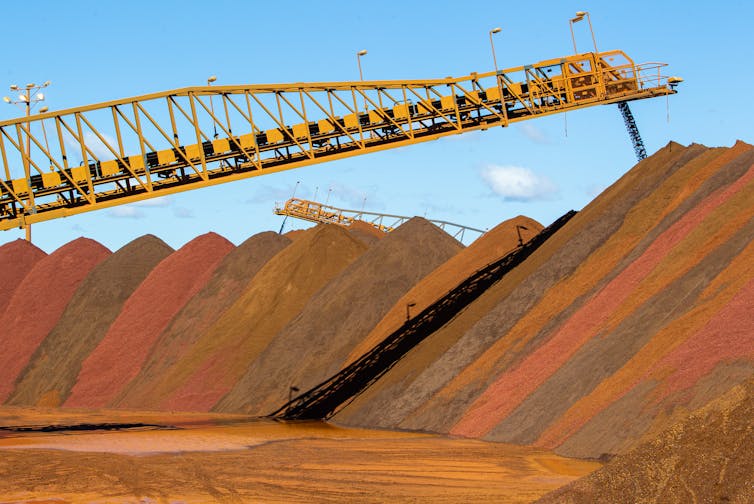
Making steel was responsible for about 7% of global greenhouse gas emissions in 2020. That’s because steelmakers in countries like China, Japan and South Korea have long relied on fossil fuels like coal to make steel in blast furnaces.
But change is coming, as the world works to decarbonise. Researchers and steelmakers are exploring new ways of making steel without using coal.
If the move to green steel gathers speed, Australia could be left behind. That’s because even though we’re the world’s largest exporter of iron ore, some of the new techniques rely on ore with a higher purity than we currently export. Coal exporters could also lose income, as we’re the largest exporter of the coking coal burnt in furnaces using current technology.
To avoid this, we should plan for a green steel future. Our recent report on opportunities for Australian industry to decarbonise suggests this is possible. Australia can make the transition to green steel and remain a major global player.

Why Would Australia Be Affected By A Shift To Green Steel?
Emerging steelmaking technologies are well along the path to development. Sweden produced the first batch of steel made without coal in 2021.
This steel was made using a direct reduced iron-electric arc furnace process, which can be powered with renewable energy and green hydrogen. While the pilot schemes are promising, this technology could take until the late 2030s to be available at scale.

The problem for Australia is this approach needs high purity ore. At present, the bulk of our iron ore exports would simply not be compatible, as there are too many impurities.
Australia exports two main types of iron ore: hematite and magnetite.
Hematite is mined in Western Australia’s Pilbara. It’s a naturally higher-grade ore (56–62% iron) and makes up almost all (96%) of our exports.
Magnetite is a lower grade ore (25-40% iron) which needs extra processing. This processing, however, produces ore with more iron content, fewer impurities and less waste rock (known as gangue) than hematite.
It’s also, as the name suggests, magnetic. That makes it possible to efficiently separate iron from waste rock using magnets.
Why does this matter? Because this processing converts lower grade iron ore into a product compatible with direct reduced iron-electric arc furnace technology.
You might wonder why it’s important to get rid of waste rock. Doesn’t it slough off in the furnace? In a traditional blast furnace, this is true. But in the direct reduction process, the iron ore doesn’t actually melt. And the next step – the electric arc furnace – can’t handle too many contaminants.
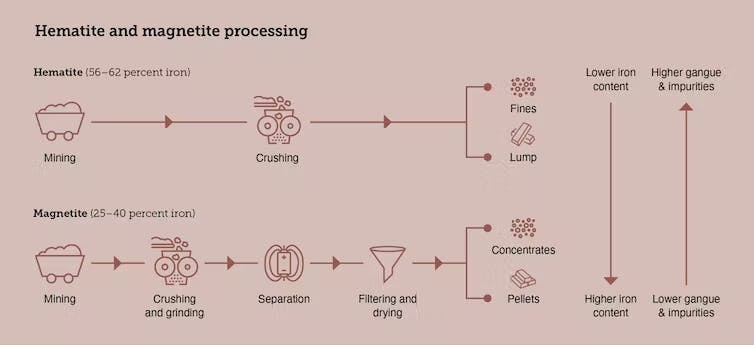
Hematite Or Magnetite?
This leaves us with a predicament.
Our major iron ore export, hematite, won’t be able to supply green steelmakers using one of the leading technologies. But our much smaller ore type, magnetite, could.
If we develop new methods of processing hematite to allow it to be used in green steelmaking, we could keep current mines open and preserve existing markets. But it would mean significant research and development to make possible commercially viable methods.
The other option is to accelerate mining of magnetite, because processing this kind of ore is well understood.
Some Australian miners are already heading down this path. Fortescue’s Iron Bridge magnetite project in the Pilbara is scheduled to begin production this quarter.
Magnetite is also recognised as an opportunity in South Australia, given it makes up 90% of the state’s ore body. The state government has set a target of 50 million tonnes per year by 2030.
To ensure expanded mining of magnetite is sustainable, we need strong benchmarks to limit emissions and broader environmental impacts from new mine facilities.
That’s because the actual mining of iron ore is an emissions-intensive industry, given it relies on heavy machinery. But our modelling shows there are pathways to progress here too, with electrification and fuel switching.
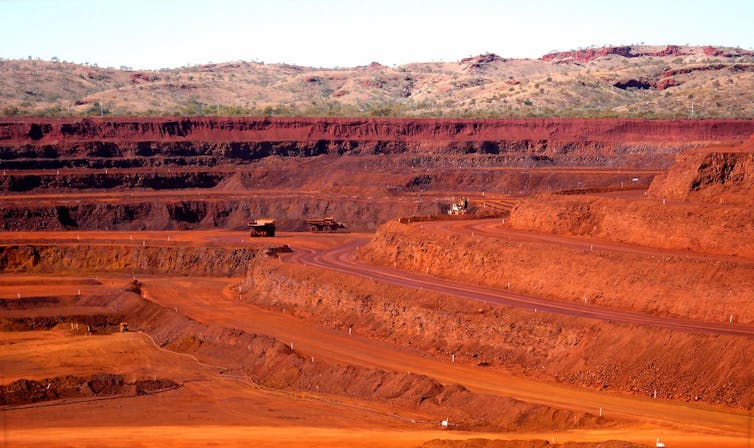
Are Other Green Steel Techniques Better Suited To Pilbara Ore?
The direct reduction method being pioneered in Sweden isn’t the only way to clean up steelmaking.
We looked at a range of potential low-emissions steelmaking techniques, some of which could make use of Australia’s existing hematite exports.
Australian steelmaker Bluescope and multinational miner Rio Tinto are exploring another method, using direct reduction to get rid of oxygen, melting the ore to remove impurities, and then using a basic oxygen furnace to make steel. This, they hope, will let them keep using Pilbara hematite ore.
Other emerging steelmaking techniques, such as electrolytic steelmaking, should also be developed to ensure there are plenty of options for the use of hematite in zero emissions steelmaking in the future.
Fortescue Future Industries recently announced they have succeeded in producing zero carbon iron using an electrolyser and a membrane, but so far have not provided details of the process.
It’s hard to give concrete timelines for these changes, as a transformation at this scale will require coordinated effort. Each of these technologies requires significant investment and a massive build-up of reliable, cost-competitive renewable energy and green hydrogen production.
Planning And Action Is Needed Now
As you would imagine, steelmaking companies plan for their plants to last decades. This timeframe means decisions being made now will affect emissions in the future.
It’s vital Australia is prepared for the shift to green steel. We’ll need a national strategy to futureproof iron ore production, and iron and steel supply chain roadmaps to get suppliers, finance, consumers and decision-makers on the same page in working to take the fossil fuels out of industries.![]()
Tessa Leach, Senior Analyst at Climateworks, Monash University and Tyra Horngren, Senior Analyst (Industry System), Climateworks Centre
This article is republished from The Conversation under a Creative Commons license. Read the original article.
Dingo attacks are rare – but here’s what you need to know about dingo safety
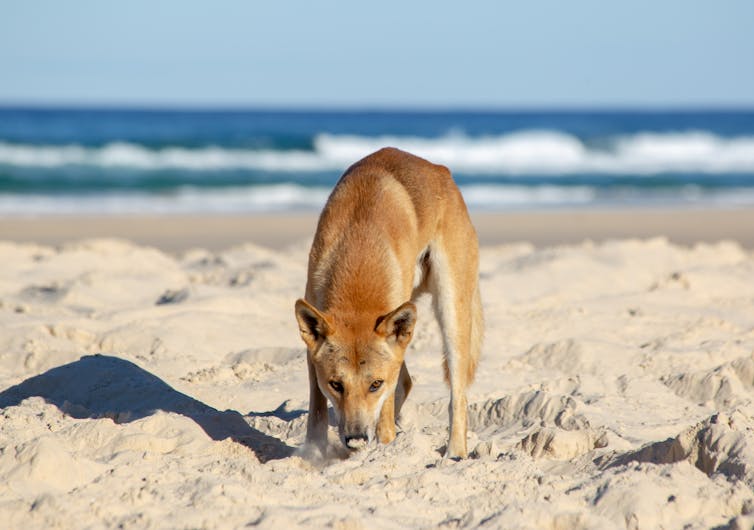
Australia has an ambivalent relationship with dingoes – to some they are almost magical representations of our arid landscapes, responsible for holding back a tide of foxes and feral cats, as found in some studies.
To others they are pests, dangerous marauders of our cattle and sheep. We even argue about what to call them. They also loom large in our national conscience as potential killers of children, as shown by a recent dingo attack on a child on K'gari (Fraser Island).
Why Do Dingoes Attack?
Dingo attacks on humans are very rare, and in most cases where humans have been attacked, the dingoes have become habituated to humans and have perhaps lost some fear of them.
This is usually because they have come to associate people with food, though not necessarily as food. This kind of habituation is seen in many animals across the world, including large carnivores such as bears and coyotes in North America, and even spotted hyaenas in Ethiopia.
The recent attack on K’gari has another facet, though. The child was attacked while sitting in shallow water at the beach, and the event highlights that dingoes can be predators. There is no indication the dingo was trying to take food from the child; it’s possible it was tentatively seeing if the child was suitable as prey.
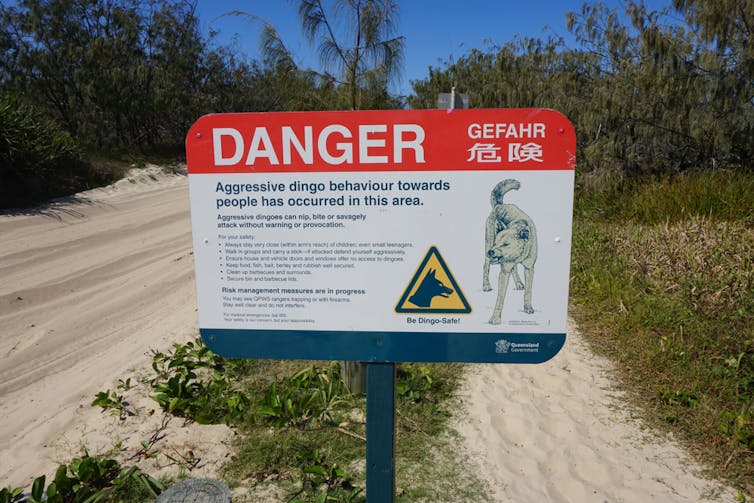
Children As Prey
A 2017 study of dingo attacks on K’gari showed most of the dingoes involved were young ones, and children who were some distance from an adult were often the recipients of attacks.
In 2001, a nine-year-old boy was tragically killed by two dingoes on K’gari when he was standing some distance away from the rest of his family and tripped and fell over. A five-year-old boy who was badly bitten by dingoes on K’gari in 2022 was attacked when his elder brother walked away from him.
In all these cases, although there were other people nearby, the dingoes selected the smallest and most separated person. This suggests that a hunting response was triggered – a child is not much bigger than normal dingo prey (such as wallabies). The dingoes involved were perhaps young and exploratory.
In fact, you can often see such reactions in zoo animals – lions, tigers and other big cats often ignore adult humans looking at them, but become excited when they see a child; the smaller size seems to trigger a predatory response.
How Can You Stay Safe From Dingoes?
The bottom line is dingoes are wild animals and can sometimes act as predators towards us, especially the smallest humans.
Dingoes are found across Australia, though they are less common in pastoral areas where lethal control occurs. They tend to avoid people wherever possible. K'gari dingoes are protected for their high conservation value, because they show little evidence of inbreeding with domestic dogs. As a result, these island dingoes are much bolder. Visitors need to treat them with respect.
So how do we stay safe? We should always be on high alert around such animals, especially in places where dingoes are more common and bolder. As with any wildlife, we should leave dingoes alone as much as possible, and keep a respectful distance. We also should avoid leaving food around, which could attract attention in the first place.
But if you do encounter a dingo (or several), here’s what to do:
- stay alert and keep a safe distance
- avoid being alone or, if in a group, don’t spread too far out
- stay close to any children in your group
- don’t run or turn your back on the dingo, as this may trigger an attack.
People often feel they should not act aggressively if approached by a carnivore, but studies on wolves and pumas suggest that shouting and throwing things is actually more likely to prevent an attack – don’t be afraid to resort to this if you feel threatened.
Anything that makes you, or the people with you, seem less like prey – less enticing – is good. Stay safe, but most importantly, respect these animals for the wild creatures they are.![]()
Bill Bateman, Associate professor, Curtin University
This article is republished from The Conversation under a Creative Commons license. Read the original article.
Pragmatism versus idealism? Behind the split between environmental groups and the Greens on the safeguard mechanism
Rebecca Pearse, Australian National UniversityOld tensions emerged between green groups en route to the hard-fought Labor-Greens deal over the safeguard mechanism industrial emissions policy.
At the height of negotiations, the Australian Conservation Foundation (ACF) started lobbying the Greens to accept a deal. Greens Senator Nick McKim accused the ACF of undermining the Greens’ negotiating strategy and ultimately the legislative outcome, saying:
The environment and climate movement needs to collectively get its shit together. There is a desperate need for a new model of change and the clock is ticking loudly.
These splits are not uncommon, especially when there’s a rare opportunity to actually improve environmental protection.
But why do Australia’s environmental groups disagree over reform?
Who’s Part Of Australia’s Environment Movement, Anyway?
In the late nineteenth century, the nascent green movement was led by naturalists, bushwalkers, adventurers, and government-appointed botanists. They led the first campaigns for national parks and wise use of resources, particularly forestry.
As urban pollution problems escalated into the next century, other reformers led campaigns for better living conditions. We forget now, but it wasn’t that long ago our major rivers were filled with run-off from tanneries and abattoirs and dangerous chemical waste. Epidemics of diptheria, scarlet fever and typhoid spread through growing cities like Melbourne and Sydney.
As development intensified after the second world war, popular environmental campaigns focused on unsustainable resource extraction or destructive forms of development, such as sand mining on Stradbroke Island/Minjerribah and proposed uranium mining in Kakadu. The Greens emerged as a political force from Tasmanian battles such as the plan to dam the pristine Franklin River.
Historically, environmentalists have been members of the professional class. The “social base” of the movement is made up of people with a lot of formal education and jobs such as lawyers, doctors, scientists, public servants and teachers. And today, environmental campaigning is itself a profession.
Many people in the environmental movement are conservative in both senses, wanting to conserve nature as well as maintain current patterns of wealth and privilege. Other environmentalists are progressive, coupling environmental concern with a commitment to social justice and reconciliation. There have also been attempts at green trade unionism like the Green Bans used in conflicts over Sydney’s development in the 1970s.
Pricing Carbon, Dividing Green Groups
The green movement has now split twice over carbon pricing.
In 2009, a group of Australia’s largest environment groups including the ACF and World Wildlife Fund for Nature formed a coalition to try and influence the Rudd government’s carbon pollution reduction scheme.
Ahead of parliamentary debate, these groups came out in support of the scheme. They saw the issue as a trade-off. The movement would agree to lower targets and weaker carbon market rules in return for gaining a framework for carbon regulation. Something was better than nothing, they argued.
But this led to a difficult split. While the largest environmental groups backed the government’s reforms, mid-sized organisations such as Greenpeace disagreed, as did groups like GetUp!, the Australian Youth Climate Coalition, Friends of the Earth and more. They did not want to settle for what they saw as a weak carbon target and flimsy rules for the carbon market.
At the time, the Greens declared the scheme was “worse than doing nothing”.
Sound familiar? We’ve seen a version of this play out in the debate over the safeguard mechanism in 2023. A Labor government, a proposal to cut emissions, environmental group criticism over the weakness of the plan, a push by the Greens party for much more, and a split in the movement.
Just as in 2009, bigger environmental groups such as ACF took the pragmatic view: take what you can get. This is what the Greens have seen as betrayal – and worse, undercutting their ability to negotiate a better deal. But there’s more to it. The groups who backed the carbon market reforms in 2009 have historically been close to Labor or to both major parties.
For their part, the Greens point to their best-ever democratic mandate as evidence of their right to negotiate for a stronger deal on behalf of the movement.
Disputes Are More About Strategy Than Ideology
In their excellent history of Australia’s environment movement, Greens activists Drew Hutton and Libby Connors show the most heated fights are over short- and long-term strategy rather than ideology or political affiliation.
We can see this in the carbon price debate. Since 2011, green groups have been drawn into debate over the design of carbon market instruments. But the economic ideology of solving climate change with market mechanisms is not the main point of debate between groups.
Though ideology and political affiliations certainly shape the situation, most green campaigners identify as pragmatists who simply want the best climate outcome possible.
Today, the broader movement is less torn by the carbon price debates. But the strategic tensions between groups like the ACF and the Greens remain.
Are These Tensions Constructive Or Not?
The environment movement’s current model is pluralist, meaning conservative and progressive campaigners can work alongside one another most of the time. They avoid tensions by focusing on different areas. On climate change, the environment movement works across three distinct arenas: negotiating expansion of renewable energy markets, resisting fossil fuel expansion, and climate policy.
But when a rare chance for large-scale reform emerges, these differences can no longer be avoided.
Bigger groups like ACF and their associated experts are clearly pinning their hopes on winning slow, steady improvements to carbon market regulations over time. By contrast, the Greens and their younger, action-focused supporters have been trying to push hard for tough rules laid down in law rather than regulations, which are easier to change.
So What’s The Solution?
While these groups at times form or disband coalitions around specific debates, it’s fairly ad hoc. By contrast, the longer-established trade union movement deals with frequent ideological, factional and personal differences through caucusing (forming alliances and committees among like-minded people) in order to influence open debate about movement policy.
If green groups negotiate more formally and openly over strategy, it may open up space to become more ambitious.
After all, green groups have much in common. But too often, each group is fighting on its own when they may well be stronger together.![]()
Rebecca Pearse, Lecturer, Australian National University
This article is republished from The Conversation under a Creative Commons license. Read the original article.
Seven ways to recycle heat and reduce carbon emissions
Amin Al-Habaibeh, Nottingham Trent UniversityHeating of space and water in buildings accounts for about 44% of all energy consumed globally according to the International Energy Agency. This heat is still overwhelmingly generated by burning fossil fuels, making it an enormous source of the carbon emissions driving climate change. But you might be surprised to learn just how much heat is wasted each day. Finding ways to recover and recycle it could drastically reduce emissions.
Consider a standard petrol or diesel car. The engine provides the momentum and produces excess heat that a radiator removes. This heat is largely wasted, except in winter when it warms the windscreen and passengers. Generators that supply electricity to the grid work in a similar way – their excess heat could be diverted to heat buildings instead. In the UK, there are many gas engines on standby to supply the power grid when needed. I was part of the team that linked the heat from a gas power generator to a building central heating system.
The idea of combined heat and power is nothing new. In Nottingham, the energy for the city’s district heating network and some electricity comes from a waste incinerator. This also reduces the amount of rubbish sent to landfill. But once you realise just how much heat is out there, waiting to be reused, the problem of decarbonising heating doesn’t seem so mighty. Here are seven examples.
1. Data Centres
Computers processing data get hot – just feel the bottom of a laptop. Data centres are rooms filled with computers that may house the IT servers for an entire office building. The heat they generate is extracted and dumped, usually by energy-hungry air conditioners.
Elsewhere, data centres have been used as “digital boilers” to heat swimming pools. In many cases, cold water runs through pipes between the two buildings where it helps to cool the data centre servers. The heated water is then pumped back to warm the pool.
2. Ice Rinks
Believe it or not, any artificially cooled ice rink produces lots of heat. This is because of the refrigeration cycle that keeps the water you skate on frozen. Think about this process as you would your freezer at home. When you put something at room temperature in the freezer, like a water tray for making ice cubes, the heat is extracted to freeze the water and pumped outside of the fridge. You can feel the side or the back of the freezer getting warmer as this happens.

Similar to data centres, this heat can be captured by circulating water and distributing it via pipes to other parts of the building or buildings nearby.
3. Kitchens And Bathrooms
In most homes, extraction fans and windows remove steam from kitchens and bathrooms. Certain types of ventilation systems can recover the heat from this humid air instead, reducing how much energy is needed for heating. It’s estimated that this could save between 23 and 56% of the cost of an energy bill when combined with other energy-saving measures, such as wall and loft insulation.
4. Wastewater Treatment Plants
Sewage and water treatment plants produce a lot of heat, which is generated from the composting of organic material in sludge (temperatures can reach 70°C). This excess heat can be reused directly or via heat pumps.
5. River And Sea Water
A heat pump works in a similar way to a kitchen fridge, in which the heat is extracted from the food and drink inside and released outside. The temperature of river and sea water changes less between days and seasons than the air, and heat pumps can use these stable water temperatures as a source of heating in winter and cooling during summer. Think about the water bottle inside the fridge as the river water, and the heat pumped outside the fridge as the source of heating for a house.
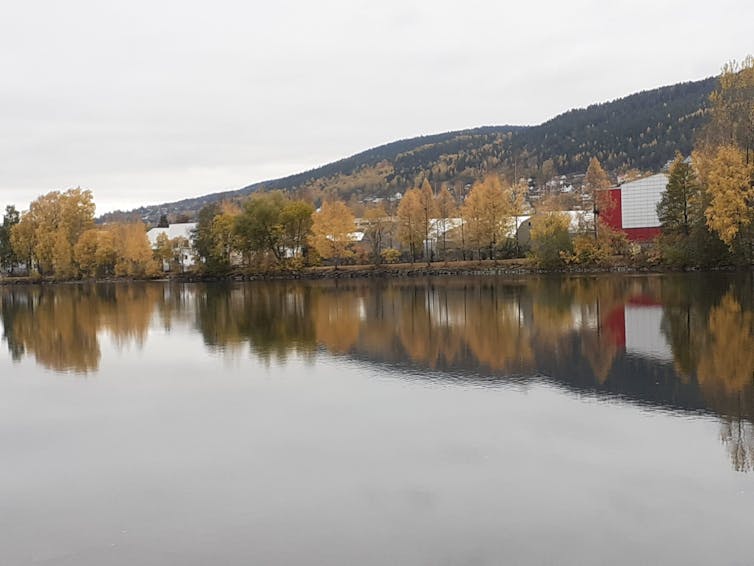
6. Flooded Coal Mines
The water in coal mines offers an even more efficient solution. Ground temperatures do not change much deeper than 1 metre. At much lower depths, temperatures actually increase. Abandoned coal mines tend to fill with lukewarm water from rain and the water table, and the UK has the equivalent of 400,000 Olympic swimming pools stored in these mines, all at a fairly stable temperature. In winter, when the weather is very cold, this warm water is a suitable source of heat that can be transferred to buildings via heat pumps.
7. You
The average human body emits around 100 watts of heat at rest. When exercising, that heat can reach 1,000 watts: enough to boil one litre of water in six minutes.
When people gather indoors, the heat they emit starts to accumulate. Crowded public places can be used to heat other parts of the same building or adjacent buildings.

Infrared imaging reveals how much heat is typically lost from the buildings we spend much of our lives in. Combined with insulation and some of the technologies discussed here, humanity could meet much of its heating needs without additional sources – and cut one of the biggest sources of climate-warming emissions.![]()
Amin Al-Habaibeh, Professor of Intelligent Engineering Systems, Nottingham Trent University
This article is republished from The Conversation under a Creative Commons license. Read the original article.
Monsters or masters of the deep sea? Why the deepest of deep-sea fish aren’t as scary as you might think
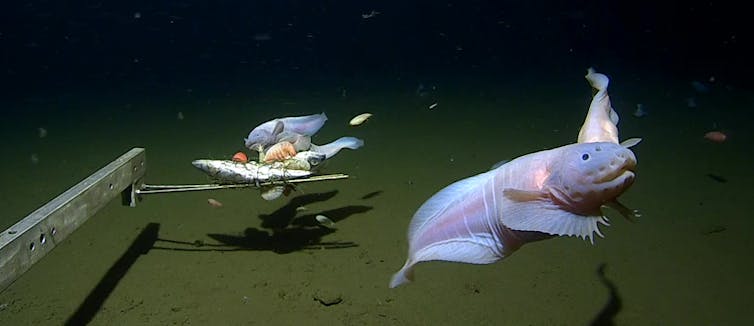
How deep can fish live in the ocean? That question has captivated me for more than a decade. But my research team’s discovery of the deepest sea fish, announced this week, might not be the final answer. There may be more. How deep – and how strange – remains open for debate.
Last year, my colleagues and I went on an expedition to the deep trenches around Japan. Having already found the Mariana snailfish in 2014 – thought to be the deepest ever – we had a hunch that with more exploration and a better understanding of things like temperature, the Japanese trenches would host a fish at even greater depths.
After another 63 deployments of our deep-sea cameras, bringing our total to about 250 across the globe, we hit the jackpot.
We found what is likely a new species of fish in the Izu-Ogasawara Trench and filmed it many times at depths between 6,500 and 8,000 metres. Then, at a staggering 8,336m, a rather unassuming little juvenile slowly swam past the camera, oblivious to the fact it had just become the deepest fish on record.
Much More Than Monsters
If you ask someone what the deepest fish in the world looks like, they will probably conjure up an image of a scaly, black, stealthy creature with bioluminescent lures, large fangs, spiny fins and demonic eyes lurking in the depths waiting to strike at unsuspecting victims. It would be nothing like the shallow-water fish we eat, keep as pets, or pay to see in aquariums. It would be more the stuff of nightmares.
While these sorts of visually striking creatures do exist, they are often not that deep, or that big. Hatchet fish, fangtooth, lanternfish, dragonfish, viperfish and angler fish inhabit the mid-waters of the twilight zone (less than 1,000m deep). Many of these classically spooky monsters are actually very small and are simply enlarged in our imagination, in the absence of any sense of physical scale.
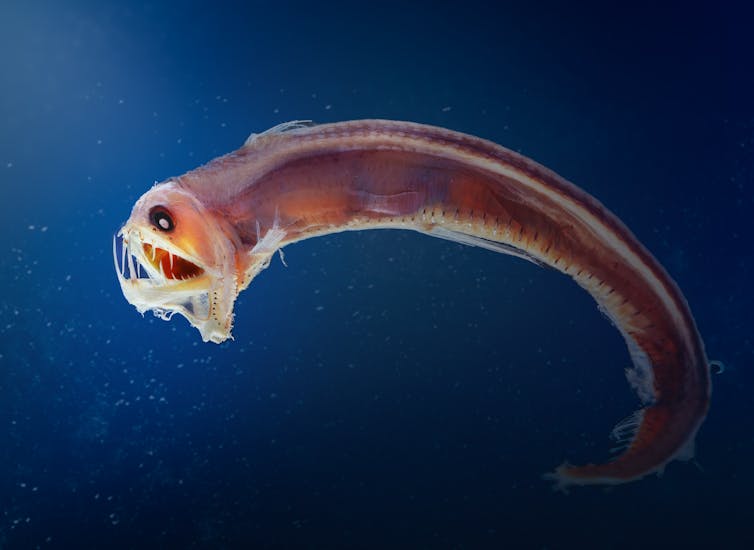
The black body, big eyes, bioluminescent lures and unfamiliar fins and textures are all adaptations to stealthy but efficient living in low-light conditions.
At deeper levels, where low-light adaptations are no longer required (because there’s a total absence of light), marine life takes on different, less dramatic forms. Adaptations to depth, or rather high pressure, are not usually things we can see, but rather changes at the level of cells or body tissues, to enable life at depth.
If we take, for example, the deepest fish, the deepest prawn, the deepest jellyfish, the deepest anemone and the deepest octopus, we find them at depths of 8,336m, 7,703m, 10,000m, 10,900m and 7,000m, respectively (between 4.3 and 6.8 miles deep).
The Deepest Of The Deep
The deepest fish in the world isn’t really a deep-sea fish. They are snailfish in the family of ray-finned fishes called Liparidae. There are more than 400 species of snailfish, and most are found in shallow waters, or even estuaries in some cases. This family of fish has adapted to an array of different environmental settings and habitats, including the deepest.
We found the deepest of all in the Izu-Ogasawara Trench at 8,336m, but this fish does not conform to any preconceived visual impression of what the deepest dweller should look like. They are in fact small, translucent pink, quirky little fish that swim like tadpoles and would not look out of place in a sunlit lagoon.
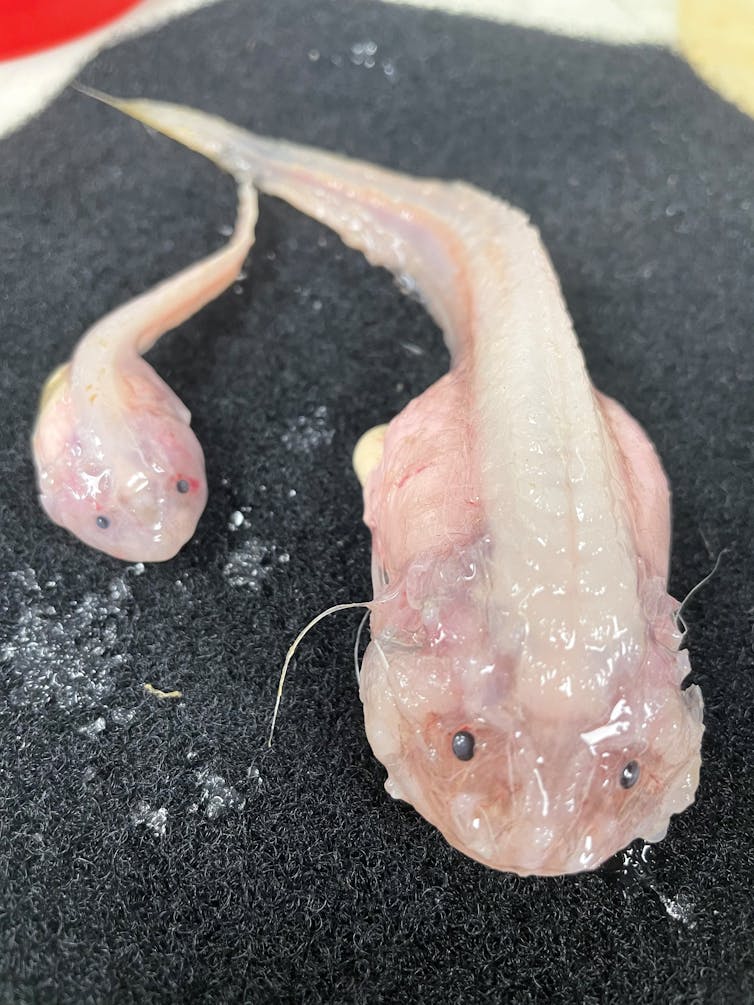
Similarly, if we look at the deepest of the big crustaceans, which happen to be penaeid prawns (Benthesicymus), there is nothing all that unfamiliar about them. The can be up to a foot long, strikingly red in colour, and swim and behave in exactly the way one would expect a prawn to swim and behave in our coastal regions. It would not look out of place at the local fish market.
The deepest jellyfish looks like a normal jellyfish. The deepest anemones can be found attached to rocks at the very bottom of the Challenger Deep, the deepest place on Earth. These as yet unknown species are attached to rocks that filter food out of the water. They appear more plant-like, resembling delicate and beautiful flowers swaying in the wind.
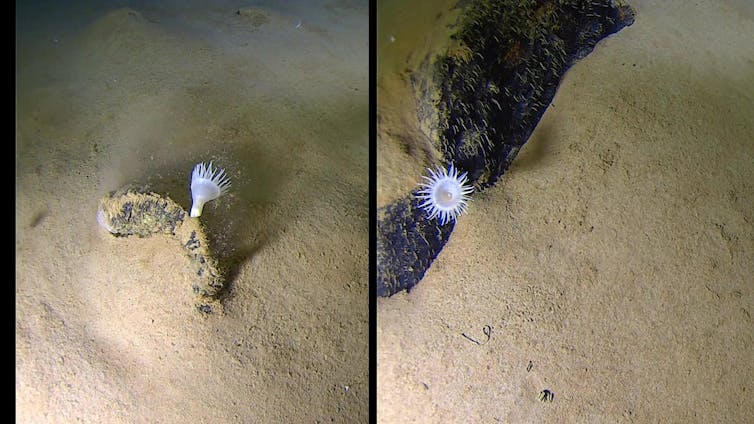
And then there is the octopus, an animal that has haunted sailors for centuries. In contrast, the newly discovered species of Dumbo octopus (Grimpoteuthis) is a small and cute little cephalopod with fins that resemble big ears (as in Dumbo the elephant). The species was filmed nearly 2,000 metres deeper than any other octopus or squid at a depth of nearly 7,000m.
The True Masters
Essentially, dark-sea creatures in the upper ocean detract from the real deep-sea creatures, giving us a false impression of the natural aesthetic of this community.
While the dark-sea animals have adapted to low light in a way that jars our imagination, the true deep-sea animals represent more of a case of where the wild things aren’t.
The snailfish are the true masters of the deep, not monsters of the deep. If we are to ever truly understand the ocean, and appreciate it as the largest habitat on Earth, we should retrain our brains and realise that even thousands of metres underwater, there are populations of little fish just going about their daily business.![]()
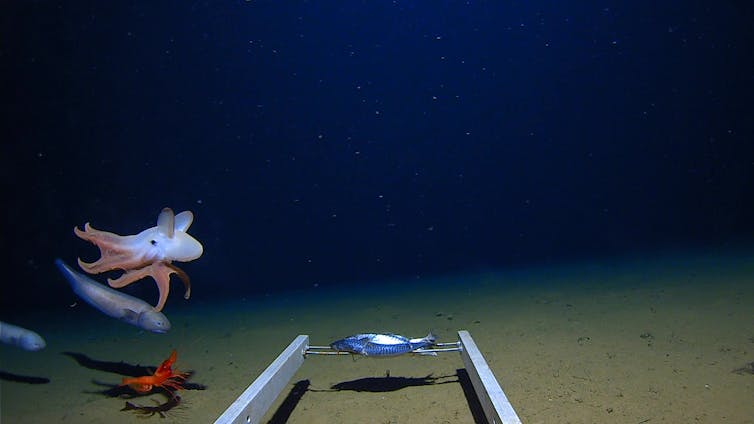
Alan Jamieson, Founding Professor of the Minderoo-UWA Deep-Sea Research centre, The University of Western Australia
This article is republished from The Conversation under a Creative Commons license. Read the original article.
Ice Sheets Can Collapse Faster Than Previously Thought Possible
April 2023
Ice sheets can retreat up to 600 metres a day during periods of climate warming, 20 times faster than the highest rate of retreat previously measured.
An international team of researchers, led by Dr Christine Batchelor of Newcastle University, UK, used high-resolution imagery of the seafloor to reveal just how quickly a former ice sheet that extended from Norway retreated at the end of the last Ice Age, about 20,000 years ago.
The team, which also included researchers from the universities of Cambridge and Loughborough in the UK and the Geological Survey of Norway, mapped more than 7,600 small-scale landforms called 'corrugation ridges' across the seafloor. The ridges are less than 2.5 m high and are spaced between about 25 and 300 metres apart.
These landforms are understood to have formed when the ice sheet's retreating margin moved up and down with the tides, pushing seafloor sediments into a ridge every low tide. Given that two ridges would have been produced each day (under two tidal cycles per day), the researchers were able to calculate how quickly the ice sheet retreated.
Their results, reported in the journal Nature, show the former ice sheet underwent pulses of rapid retreat at a speed of 50 to 600 metres per day.
This is much faster than any ice sheet retreat rate that has been observed from satellites or inferred from similar landforms in Antarctica.
"Our research provides a warning from the past about the speeds that ice sheets are physically capable of retreating at," said Dr Batchelor. "Our results show that pulses of rapid retreat can be far quicker than anything we've seen so far."
Information about how ice sheets behaved during past periods of climate warming is important to inform computer simulations that predict future ice-sheet and sea-level change.
"This study shows the value of acquiring high-resolution imagery about the glaciated landscapes that are preserved on the seafloor," said study co-author Dr. Dag Ottesen from the Geological Survey of Norway, who is involved in the MAREANO seafloor mapping programme that collected the data.
The new research suggests that periods of such rapid ice-sheet retreat may only last for short periods of time (days to months).
"This shows how rates of ice-sheet retreat averaged over several years or longer can conceal shorter episodes of more rapid retreat," said study co-author Professor Julian Dowdeswell of the Scott Polar Research Institute, University of Cambridge. "It is important that computer simulations are able to reproduce this 'pulsed' ice-sheet behaviour."
The seafloor landforms also shed light into the mechanism by which such rapid retreat can occur. Dr Batchelor and colleagues noted that the former ice sheet had retreated fastest across the flattest parts of its bed.
"An ice margin can unground from the seafloor and retreat near-instantly when it becomes buoyant," explained co-author Dr Frazer Christie, also of the Scott Polar Research Institute. "This style of retreat only occurs across relatively flat beds, where less melting is required to thin the overlying ice to the point where it starts to float."
The researchers conclude that pulses of similarly rapid retreat could soon be observed in parts of Antarctica. This includes at West Antarctica's vast Thwaites Glacier, which is the subject of considerable international research due to its potential susceptibility to unstable retreat. The authors of this new study suggest that Thwaites Glacier could undergo a pulse of rapid retreat because it has recently retreated close to a flat area of its bed.
"Our findings suggest that present-day rates of melting are sufficient to cause short pulses of rapid retreat across flat-bedded areas of the Antarctic Ice Sheet, including at Thwaites," said Dr. Batchelor. "Satellites may well detect this style of ice-sheet retreat in the near-future, especially if we continue our current trend of climate warming."
Other co-authors are Dr. Aleksandr Montelli and Evelyn Dowdeswell at the Scott Polar Research Institute of the University of Cambridge, Dr. Jeffrey Evans at Loughborough University, and Dr. Lilja Bjarnadóttir at the Geological Survey of Norway. The study was supported by the Faculty of Humanities and Social Sciences at Newcastle University, Peterhouse College at the University of Cambridge, the Prince Albert II of Monaco Foundation, and the Geological Survey of Norway.
Christine L. Batchelor, Frazer D. W. Christie, Dag Ottesen, Aleksandr Montelli, Jeffrey Evans, Evelyn K. Dowdeswell, Lilja R. Bjarnadóttir, Julian A. Dowdeswell. Rapid, buoyancy-driven ice-sheet retreat of hundreds of metres per day. Nature, 2023; DOI: 10.1038/s41586-023-05876-1
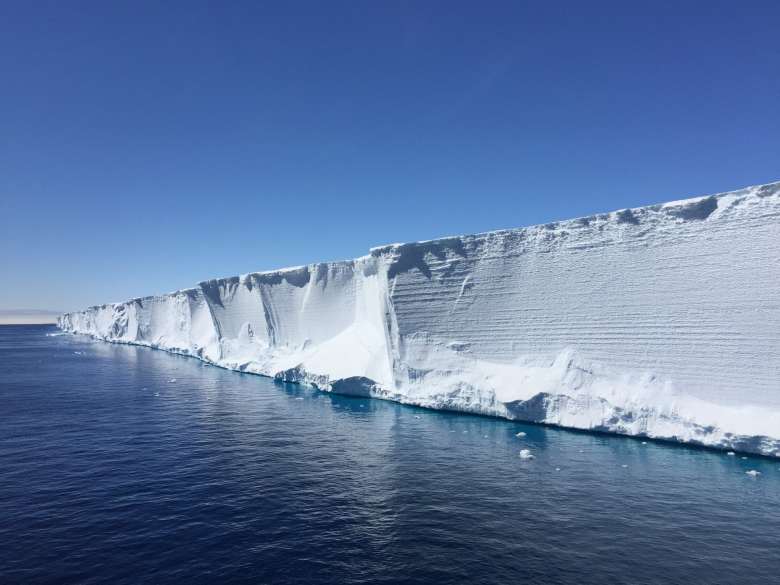
The Fimbul Ice Shelf in East Antarctica. Christine Batchelor, Author provided
New research shows how rapidly ice sheets can retreat – and what it could mean for Antarctic melting
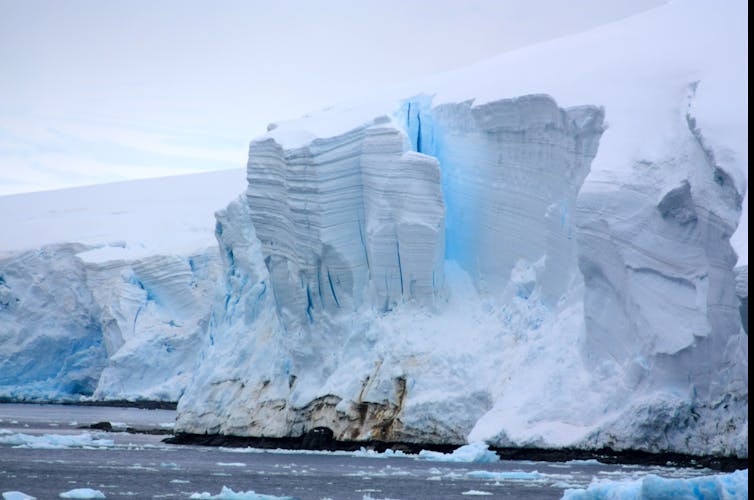
The Antarctic Ice Sheet, which covers an area greater than the US and Mexico combined, holds enough water to raise global sea level by more than 57 metres if melted completely. This would flood hundreds of cities worldwide. And evidence suggests it is melting fast. Satellite observations have revealed that grounded ice (ice that is in contact with the bed beneath it) in coastal areas of West Antarctica has been lost at a rate of up to 30 metres per day in recent years.
But the satellite record of ice sheet change is relatively short as there are only 50 years’ worth of observations. This limits our understanding of how ice sheets have evolved over longer periods of time, including the maximum speed at which they can retreat and the parts that are most vulnerable to melting.
So, we set out to investigate how ice sheets responded during a previous period of climatic warming – the last “deglaciation”. This climate shift occurred between roughly 20,000 and 11,000 years ago and spanned Earth’s transition from a glacial period, when ice sheets covered large parts of Europe and North America, to the period in which we currently live (called the Holocene interglacial period).
During the last deglaciation, rates of temperature and sea-level rise were broadly comparable to today. So, studying the changes to ice sheets in this period has allowed us to estimate how Earth’s two remaining ice sheets (Greenland and Antarctica) might respond to an even warmer climate in the future.
Our recently published results show that ice sheets are capable of retreating in bursts of up to 600 metres per day. This is much faster than has been observed so far from space.
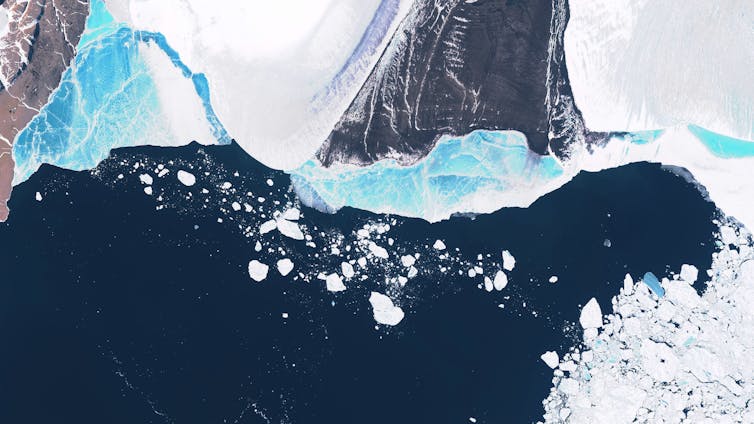
Pulses Of Rapid Retreat
Our research used high-resolution maps of the Norwegian seafloor to identify small landforms called “corrugation ridges”. These 1–2 metre high ridges were produced when a former ice sheet retreated during the last deglaciation.
Tides lifted the ice sheet up and down. At low tide, the ice sheet rested on the seafloor, which pushed the sediment at the edge of the ice sheet upwards into ridges. Given that there are two low tides each day off Norway, two separate ridges were produced daily. Measuring the space between these ridges enabled us to calculate the pace of the ice sheet’s retreat.
During the last deglaciation, the Scandinavian Ice Sheet that we studied underwent pulses of extremely rapid retreat – at rates between 50 and 600 metres per day. These rates are up to 20 times faster than the highest rate of ice sheet retreat that has so far been measured in Antarctica from satellites.
The highest rates of ice sheet retreat occurred across the flattest areas of the ice sheet’s bed. In flat-bedded areas, only a relatively small amount of melting, of around half a metre per day, is required to instigate a pulse of rapid retreat. Ice sheets in these regions are very lightly attached to their beds and therefore require only minimal amounts of melting to become fully buoyant, which can result in almost instantaneous retreat.
However, rapid “buoyancy-driven” retreat such as this is probably only sustained over short periods of time – from days to months – before a change in the ice sheet bed or ice surface slope farther inland puts the brakes on retreat. This demonstrates how nonlinear, or “pulsed”, the nature of ice sheet retreat was in the past.
This will likely also be the case in the future.
A Warning From The Past
Our findings reveal how quickly ice sheets are capable of retreating during periods of climate warming. We suggest that pulses of very rapid retreat, from tens to hundreds of metres per day, could take place across flat-bedded parts of the Antarctic Ice Sheet even under current rates of melting.
This has implications for the vast and potentially unstable Thwaites Glacier of West Antarctica. Since scientists began observing ice sheet changes via satellites, Thwaites Glacier has experienced considerable retreat and is now only 4km away from a flat area of its bed. Thwaites Glacier could therefore suffer pulses of rapid retreat in the near future.
Ice losses resulting from retreat across this flat region could accelerate the rate at which ice in the rest of the Thwaites drainage basin collapses into the ocean. The Thwaites drainage basin contains enough ice to raise global sea levels by approximately 65cm.

Our results shed new light on how ice sheets interact with their beds over different timescales. High rates of retreat can occur over decades to centuries where the bed of an ice sheet deepens inland. But we found that ice sheets on flat regions are most vulnerable to extremely rapid retreat over much shorter timescales.
Together with data about the shape of ice sheet beds, incorporating this short-term mechanism of retreat into computer simulations will be critical for accurately predicting rates of ice sheet change and sea-level rise in the future.![]()
Christine Batchelor, Lecturer in Physical Geography, Newcastle University and Frazer Christie, Postdoctoral Research Associate, University of Cambridge
This article is republished from The Conversation under a Creative Commons license. Read the original article.
The UN is asking the International Court of Justice for its opinion on states’ climate obligations. What does this mean?

The United Nations has just backed a landmark resolution on climate justice.
Last week, the UN General Assembly supported a Pacific-led resolution asking the International Court of Justice (ICJ) to provide an advisory opinion on a country’s climate obligations.
This has been hailed as a “turning point in climate justice” and a victory for the Pacific youth who spearheaded the campaign.
But what does this UN decision actually mean? Does an advisory opinion from the ICJ have any teeth? And what might be the legal consequences for rich countries, like Australia, that have contributed the most to the climate problem?
What Is An ICJ Advisory Opinion?
The ICJ is the world court and the leading global authority on international law. It generally hears disputes between countries known as “contentious cases” such as the 2010 case brought by Australia against Japan over whaling in the Southern Ocean. In that case, the court ruled in Australia’s favour.
However, the ICJ can also issue advisory opinions. This is a kind of general advice on the status of international law on a particular topic. Opinions must be requested by one of the organs or specialised agencies of the UN, such as the General Assembly.
On March 29 2023, the UN General Assembly resolved to seek an ICJ advisory opinion on the obligations of states with respect to climate change. That was based on draft text put forward by the tiny Pacific nation of Vanuatu.
Significantly, this resolution was co-sponsored by 105 states, including Australia. It’s the first time the General Assembly has requested an advisory opinion from the ICJ with unanimous state support.
The question put to the ICJ asks whether countries have an obligation to protect the global climate system. It also seeks advice on the “legal consequences” when countries’ actions or omissions cause significant climate harm to small island states and future generations in particular.
The UN will communicate the resolution to the ICJ in coming weeks and the court will then organise hearings over the next few months. It’s expected an advisory opinion will be issued six to 12 months later.
A Win For The Pacific
The adoption of the advisory opinion resolution represents an important milestone in a long-running fight by Pacific small island nations and youth activists to secure climate justice.
For these communities, climate change is already causing or exacerbating harm to natural and human systems. Indeed, only a few weeks before the UN General Assembly decision, a rare double cyclone event ripped through Vanuatu.
Faced with these threats, Pacific nations like Tuvalu and Palau have previously publicly discussed options for seeking a ruling from the ICJ. These efforts met with stiff resistance from major emitting countries, which eventually saw the proposals shelved.
Renewed efforts began in 2019 with 27 law students from The University of the South Pacific forming Pacific Islands Students Fighting Climate Change.
The students worked with the Vanuatu government to launch a new campaign for a General Assembly resolution on climate change and human rights. Introducing the resolution, Vanuatu’s prime minister Ishmael Kalsakau stated:
This is not a silver bullet, but it can make an important contribution to climate action, including by catalysing much higher ambition under the Paris Agreement.
For student campaigners like Cynthia Houniuhi, it means
an opportunity to do something bigger than ourselves, bigger than our fears.
What Might The ICJ Advisory Opinion Deliver?
Advisory opinions issued by the ICJ are – as the name suggests – advisory. They are not legally binding on any country or on the General Assembly. So this climate advisory opinion will not establish the accountability of particular countries for climate harms, nor deliver compensation to vulnerable nations like Vanuatu.
Nonetheless, the authority of the world court means its advisory opinions do matter in shaping how countries understand their international obligations.
There is an opportunity with this opinion to cement emerging links between climate harms and human rights, which could open up new avenues for litigation either domestically or internationally. Already there are several new climate rights cases underway, with the European Court of Human Rights hearing its first two climate cases (against Switzerland and France) on the same day the advisory opinion resolution was adopted.
The ICJ opinion could also provide an extra incentive for countries to reexamine and strengthen their national emissions reduction targets, to make sure they are compliant with the Paris Agreement. As the new fund for climate-related loss and damage takes shape at this year’s international climate meeting (COP28 in Dubai), negotiators may be thinking about how the rules they are crafting could complement the ICJ opinion.
Australia’s support signals our government understands the need to strengthen cooperation and solidarity in the region. Such efforts – including increasing the ambition of Australia’s emissions reduction target and contributing funds to the emerging loss and damage fund – would be tangible indications Australia is striving to meet its international obligations. It’s about being a good neighbour while also avoiding future lawsuits.
A Turning Point For Climate Justice?
For many advocates the success of the ICJ advisory opinion campaign heralds the beginning of a new era in the quest for climate justice. By asking the world court to bring its authoritative voice to this issue, campaigners like the Pacific students’ group seek to make a difference. They hope to ease the path to holding polluting countries accountable for climate harms and help ensure vulnerable communities receive the resources they need to realise a better climate future.
Other voices urge a more cautious approach. The ICJ, for example, does not have much expertise in human rights – with the notable exception of recently appointed Australian judge Hilary Charlesworth. With judges drawn from several major emitting states, the court may be reluctant to intervene decisively on such a highly charged political question. Courts are generally followers, not leaders, of social movements.
Nonetheless, the confluence of dire warnings from climate scientists in the latest report of the Intergovernmental Panel on Climate Change, proliferating climate protests and litigation around the world, and the accelerating occurrence of climate harms like last year’s massive floods in Pakistan may just yield a moment in history - one where the world court steps forward to put its thumb on the scales in favour of the cause of climate justice.![]()
Jacqueline Peel, Director, Melbourne Climate Futures, The University of Melbourne and Zoe Nay, PhD candidate, The University of Melbourne
This article is republished from The Conversation under a Creative Commons license. Read the original article.
In the turbulent Drake Passage, scientists find a rare window where carbon sinks quickly into the deep ocean
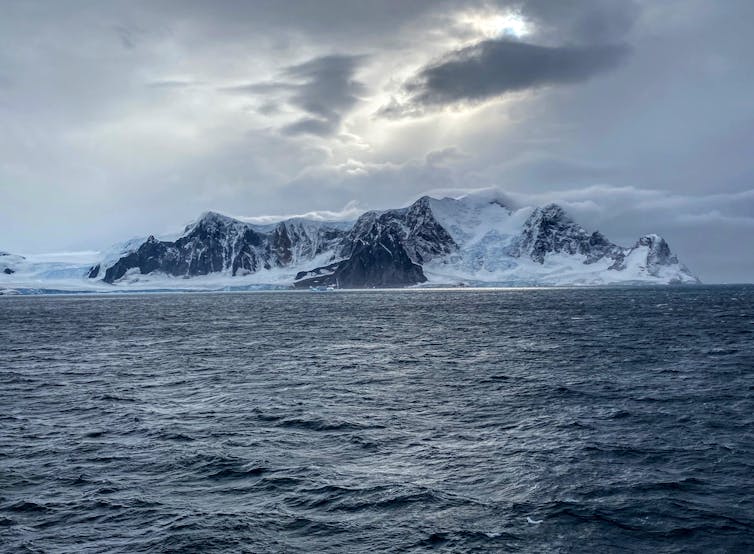
Looking out across the Southern Ocean near Antarctica, I can see whales and seabirds diving in and out of the water as they feed on sea life in the lower levels of the food web. At the base of this food web are tiny phytoplankton – algae that grow at the ocean surface, taking up carbon from the atmosphere through photosynthesis, just as plants on land do.
Because of their small size, phytoplankton are at the mercy of the ocean’s swirling motions. They are also so abundant that the green swirls are often visible from space.
Typically, phytoplankton remain near the surface of the ocean. Some may slowly sink to depth because of gravity. But in the turbulent Drake Passage, a 520-mile-wide (850 km) bottleneck between Antarctica and South America, something unusual is happening, and it has an impact on how the ocean takes carbon dioxide – the main driver of global warming – out of the atmosphere.
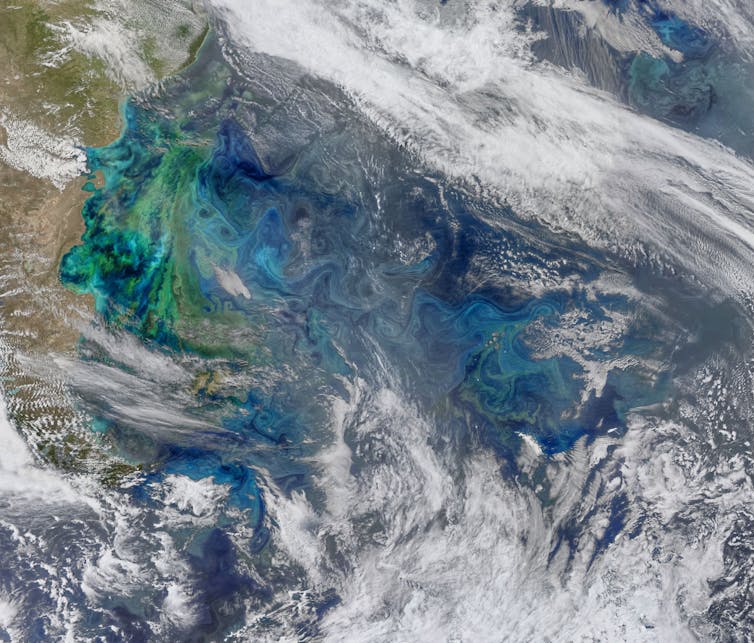
The Drake Passage
The Drake Passage is notorious for its violent seas, with waves that can top 40 feet (12 meters) and powerful converging currents, some flowing as fast as 150 million cubic meters per second. Cold water from the Southern Ocean and warmer water from the north collide here, spinning off powerful and energetic eddies.
New scientific research I am involved in as an oceanographer now shows how the Drake Passage and a few other specific areas of the Southern Ocean play an outsize role in how the oceans lock up carbon from the atmosphere.
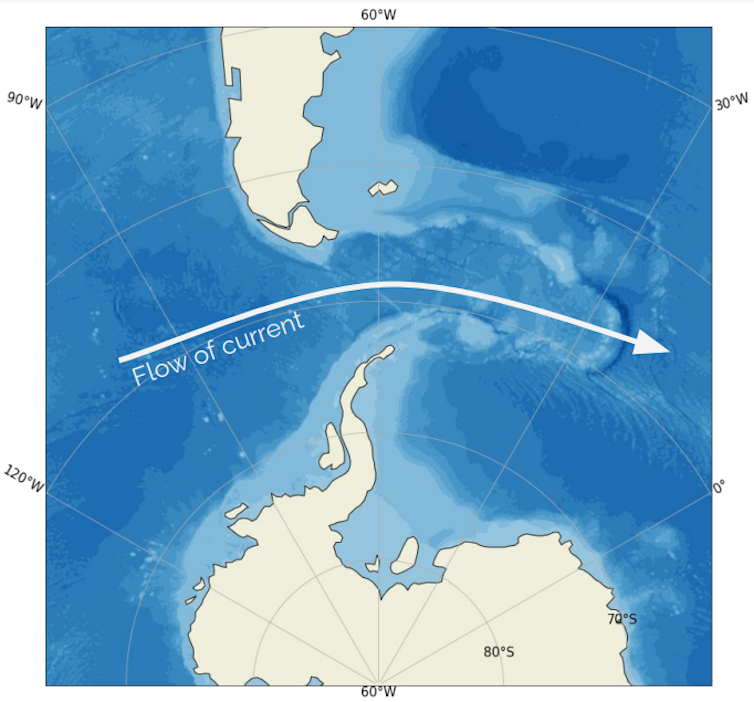
That process is crucial for our understanding of the climate. The global ocean is a massive reservoir of carbon, holding over 50 times as much carbon as the atmosphere. However, it is only when water carrying carbon gets to the deep ocean that carbon can be stored for long periods – up to centuries or millennia.
Photosynthetic phytoplankton are at the heart of that exchange. And in the Drake Passage, my colleagues and I have found that undersea mountains are stirring things up.
The Role Of Ocean Layers
The ocean can be visualized as having layers. With constant surface waves and winds, the upper layer is always stirring around, mixing waters. It’s like mixing milk into your morning coffee. This stirring mixes in solar heat and gases, such as carbon dioxide, taken up from the atmosphere.
Water density generally increases as the waters get deeper and colder and saltier. That forms density layers that are typically flat. Since water prefers to keep its density constant, it mostly moves horizontally and doesn’t easily move between the surface and deep ocean.
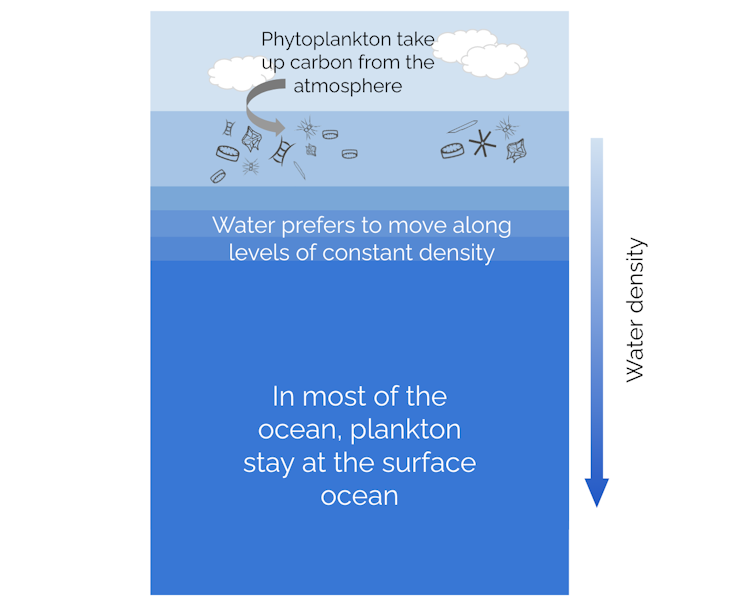
Yet despite this physical barrier, water testing shows that carbon dioxide produced by human activities is making its way into the deep ocean. One way is through chemistry: Carbon dioxide dissolves in water, creating carbonic acid. Living creatures in the ocean are another.
A View Into The Drake Passage
Oceanographers have long pointed to the north Atlantic Ocean and the Southern Ocean as places where surface waters are moved to depth, taking large volumes of carbon with them. However, recent work has shown that this process may actually be dominated by only a few areas – including the Drake Passage.
Despite its being one of the most famous stretches of the ocean, scientists have only recently been able to observe this window in action.
The main flow of the Drake Passage is created by the effect of strong westerly winds across the Southern Ocean. Scientists have found that the westerly winds create a slope in the water density, with dense waters shallower closer to Antarctica, where colder melt water caps the surface, but sloping deeper into the ocean farther north toward South America.
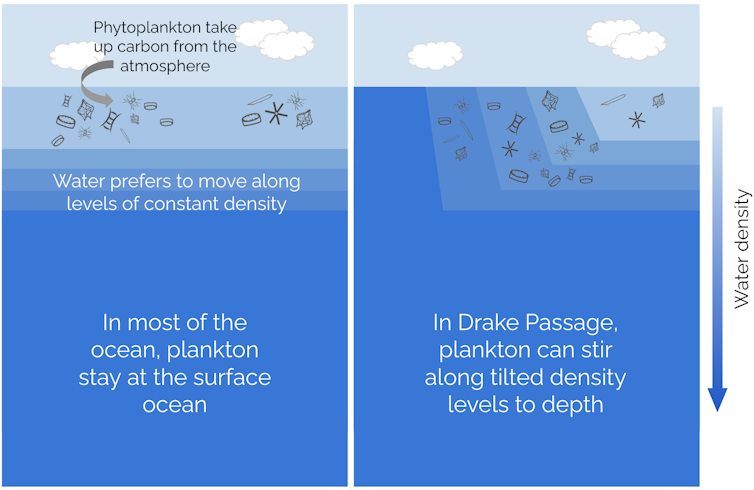
With advances in autonomous underwater robots and computer modeling, we have been able to show how the flow of the Southern Ocean interacts with an underwater mountain in the Drake Passage. This underwater interaction mixes up the ocean, enhancing that coffeelike stirring process.
The stirring along the sloped density levels provides a pathway for water from the upper layer of the ocean to move into the depths. And phytoplankton at the surface ocean are carried along with this stirring, moving to depth much faster than they would by gravitational sinking alone.
In a less energetic region, these phytoplankton would die and respire their carbon back to the atmosphere or slowly sink. However, at the Drake Passage, phytoplankton can be swept to depth before this happens, meaning the carbon they’ve taken up from the atmosphere is sequestered in the deep ocean. Carbon dissolved and stored in the deep ocean may also vent out in these locations.
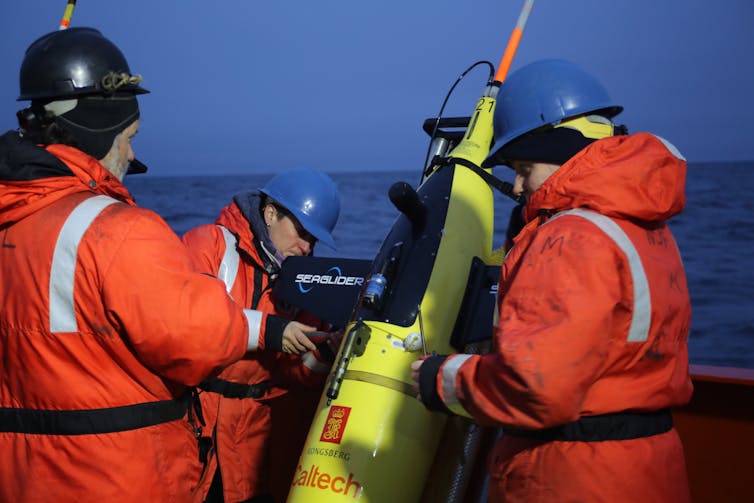
Scientists have estimated that the deepest ocean waters directly interact with the atmosphere through only about 5% of the ocean’s surface area. This is one of those special places.
Investigating the Drake Passage and other oceanographic windows allows science to home in on better understanding climate change and the workings of our blue planet.![]()
Lilian (Lily) Dove, Ph.D. Candidate in Oceanography, California Institute of Technology
This article is republished from The Conversation under a Creative Commons license. Read the original article.
Capitalising on climate anxiety: what you need to know about ‘climate-washing’

People are increasingly making choices about which products to buy and which service providers to use on climate change grounds. With concerns about climate change now affecting most Australians, businesses that promote climate-aligned practices and make emissions-reduction promises have a competitive advantage over those that don’t.
But sometimes these claims fail to live up to reality. Climate-related greenwashing, or “climate-washing”, communicates a message that exaggerates or misrepresents climate credentials through advertising, branding, labelling or reporting.
Examples include where corporate marketing and government campaigns promising “net-zero emissions by 2050” are not backed by a credible plan. Or products are promoted as “carbon neutral” or “climate friendly” when they’re not. It also includes where banks and other investors claim to fund a “cleaner future” when this is not completely true, potentially masking climate-related financial risk.
Climate-washing is a problem because the offending businesses capitalise on climate anxiety. It also allows businesses lacking robust credentials to gain customers and market advantage on false pretences. Ultimately, it also hinders rather than helps progress towards emissions reduction goals.
In March, the Australian Competition and Consumer Commission (ACCC) announced a crack-down on climate-washing and greenwashing. This followed an ACCC report revealing claims made by more than half the 247 Australian businesses reviewed in an internet sweep raised concern. The ACCC has said it will now undertake enforcement, compliance and education activities.
On Wednesday the Senate agreed to establish an inquiry into greenwashing by corporations in Australia. The inquiry will investigate the impacts of greenwashing on consumers and the environment and will identify the legal and regulatory actions needed to stop it.
The Credibility Gap
The imperative to reach net-zero emissions by mid-century has been consistently reinforced by climate science. This includes, most recently, this month’s report by the Intergovernmental Panel on Climate Change.
One of the upshots has been a deluge of net-zero strategic marketing. Particularly in the case of large climate change contributors – such as fossil fuel companies, airlines and the meat industry – adopting a net-zero narrative switches public perception that the company is part of the solution, rather than the problem.
Climate-washing essentially describes a gap between what’s promised and what’s likely to be achieved. This “credibility gap” can be due to factors such as over-reliance on speculative technology, offsetting, and modelling that’s outdated or hasn’t been properly verified. Although there’s a big global push toward transparency, many entities don’t adequately disclose the data and assumptions behind their promises.
Complaints And Court Cases
Last week, a group called Flight Free and their lawyers approached the ACCC over Etihad Airways advertising that said, “flying shouldn’t cost the earth” and “net zero emissions by 2050”. The ads were shown prominently at a soccer match in Melbourne last year. Flight Free says the advertising is misleading.
The Etihad complaint follows the Australasian Centre for Corporate Responsibility’s Federal Court proceedings against gas company Santos. Currently afoot, this complaint challenges Santos’ “clean fuel” and “net-zero by 2040” claims.
Earlier this year, corporate watchdog ASIC (the Australian Securities and Investment Commission) initiated proceedings against super fund Mercer for allegedly misleading investors into thinking their investments in a “sustainable” investment option excluded fossil fuels.
Around the world, there’s been a recent rise in climate-washing litigation. Multiple complaints allege that the football association FIFA falsely advertised the Qatar World Cup as “fully carbon neutral.”
In aviation, there’s a pending court case against KLM targeting its “fly responsibly” campaign, and there’s also been a successful challenge to RyanAir’s low-carbon campaign.
Product complaints have ranged from allegedly climate-neutral bin liners, to “climate-controlled pork” in Denmark, and “climate-neutral croquettes” in Germany.
How Is Climate-Washing Regulated?
Climate-washing is a form of misleading and deceptive conduct, which is regulated in Australia under federal competition and consumer law.
Climate-washing that relates to financial products and services is regulated under securities and investments law.
Both the ACCC and ASIC monitor climate-washing.
Globally, concerns over climate-washing have led to action by the United Nations. A High-Level Expert Group on the Net-Zero Emissions Commitments of Non-State Entities was formed last year to target climate-washing. The group has a “zero tolerance for net-zero greenwashing” mantra, and delivered a report at November’s Climate Change COP in Egypt, which contains a “how-to” guide for credible, accountable net-zero pledges.
What You Can Do
There’s every reason to support businesses taking genuine and meaningful climate action. But as a consumer, it’s hard to fact-check simple statements that are in reality pretty complex claims.
If you’re suspicious of climate-washing, you can report it to the ACCC here. You can also monitor the work of non-profits investigating and reporting on climate-washing. For example, stay informed by following sites such as ClientEarth’s The Greenwashing Files. And follow the public interest law centres taking action, such as Environmental Justice Australia, the Environmental Defenders Offices, and Equity Generation.
When buying a product or service, it never hurts to ask questions and to be sent more information. If you’re a shareholder, look closely at annual reports. And make the most of voting opportunities.
Have a say on government proposals targeting climate change and climate-washing. The initial consultation process for the Australian government’s action on climate disclosure and reporting has recently closed, but submissions on new reporting requirements will open later this year.
Ultimately, it’s a good thing that governments and corporations want to align with a smooth transition toward a net-zero future. And jumping on the net-zero bandwagon is certainly a welcome step away from climate denialism.
But in order for net-zero goals to actually be achieved in a way that avoids a last-minute scramble and significant losses along the way, it’s important for everyone that pledges and promises are made frankly, earnestly and credibly.
Editor’s note: In response to the misleading advertising claim, Etihad said it “runs a comprehensive research, development, and innovation programme to address aviation decarbonisation, and is committed to achieving net zero emissions by 2050”.
The Australian Centre for Corporate Responsibility case against Santos is before the courts.
Super fund Mercer said in a statement: “We have co-operated with ASIC on their enquiries and take their concerns very seriously. As this matter is before the courts, it would be inappropriate for us to comment further at this time.”![]()
Laura Schuijers, Deputy Director, Australian Centre for Climate and Environmental Law and Lecturer in Law, University of Sydney
This article is republished from The Conversation under a Creative Commons license. Read the original article.
Countries agreed to ban ozone-depleting chemicals in the 1980s – but we found five CFCs increasing to record levels in the atmosphere
Luke Western, University of Bristol and Johannes Laube, University of East AngliaDespite a global ban in place since 2010, atmospheric concentrations of five ozone-depleting chemicals have reached a record high.
Chlorofluorocarbons, or CFCs, are entirely man-made gases used in a variety of applications, including refrigeration, air conditioning or as chemical solvents. They have been increasingly regulated by a series of international treaties since the 1980s. The 1987 Montreal protocol, which has been universally ratified, restricted the release of CFCs to the atmosphere where they contribute to the destruction of the ozone layer: a region high up in the stratosphere which absorbs harmful ultraviolet (UV) radiation and protects life below.
The goal of the Montreal protocol was to induce a decline in the atmospheric CFC concentration through controlling, and increasingly restricting, the production of these chemicals. This has worked well for many ozone-depleting substances, which is why the ozone layer is slowly recovering. And so the recent increase in atmospheric concentrations of five CFCs is quite surprising.

Our findings, while worrying, should be considered an early warning. The impact of all five CFCs on the recovery of the ozone layer is still small. Nevertheless, we do not fully understand where they are coming from, so this could change in the future, and we should not ignore the cumulative effect of these emissions on human health and the environment.
The Global Picture
Our team has been analysing air samples from all over the world, focusing on so-called “background” sites that are far away from the sources of these CFCs, or in fact any industrial emissions. An example is the Cape Grim observatory on the remote west coast of Tasmania. This is the basis for our assessment of the threat these chemicals pose, as it reveals global trends in their atmospheric concentration.
Our main findings for the period 2010-2020 were twofold. First, concentrations of CFC-13 and CFC-113a continued their previously observed – and puzzling – increase. Rising concentrations of CFC-113a even accelerated around 2016. Second, concentrations of CFC-114a and CFC-115 were stable since the 2000s, while those of CFC-112a had even started to decrease. However, all of them began increasing around 2013-2014.
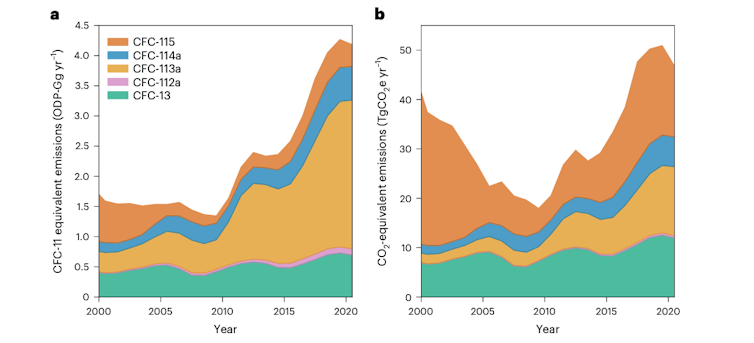
These observations, combined with additional knowledge about atmospheric circulation and how CFCs are removed from the atmosphere through chemical reactions, allowed us to estimate the global emissions of these five gases. Their damage to the ozone layer can be expressed through their ozone depletion potential, which states how much ozone would be destroyed compared to the same quantity of CFC-11, which is different for each CFC.
The result is a relief. Emissions between 2010 and 2020 only resulted in a very small loss of around 0.002% of global stratospheric ozone.
There is no time to relax, though, for two reasons. All five CFCs are also potent greenhouse gases and, once emitted, will remain in the atmosphere for decades to centuries. Their warming effect in 2020 was already approximately that of Switzerland’s total CO₂ emissions. And if those emissions continue on their upwards trajectory, their contribution to climate change will expand too. The persistence of these gases in the atmosphere must be taken seriously: all emissions are a legacy for future generations to contend with.
Tracking Down The Sources
The first step towards avoiding future emissions is to find out where the current ones are coming from. There were already some hints in previous studies, which we gathered and combined with our own information, such as on the exact timing of when emissions started accelerating.
We found that three of the five CFCs (CFC-113a, CFC-114a and CFC-115) can be produced during the manufacture of other chemicals, which is allowed under the Montreal protocol, most notably hydrofluorocarbons or HFCs. HFCs have replaced CFCs for many applications as an ozone-friendly alternative. However, like CFCs, they are greenhouse gases and their production is now being reduced in many countries under the 2016 Kigali Amendment to the Montreal Protocol, which could reduce climate-related warming by 0.5°C.
It’s likely that the CFCs are leaking out during the production process, where they are either used as a feedstock (a chemical ingredient to make another chemical) or as a result of incomplete conversion of the feedstock to the target chemical. The production of HFCs really took off in developing countries after CFCs were banned in 2010, which is around the same time as the increase in emissions of these five CFCs.
The production of HFCs is predicted to further increase over the next few years, which could result in increasing emissions of these CFCs. CFC-113a is used to make at least one hydrofluoroolefin or HFO, which are alternatives to HFCs that don’t heat the climate and may be used long into the future. Despite HFCs and HFOs being more benign alternatives to CFCs, there may still be some cost to ozone during their production if CFCs continue to leak into the atmosphere.
We were unable to find a plausible source for the other two CFCs, CFC-13 and CFC-112a. The fact that their emissions are increasing and we don’t know why is a concern in itself.
Time To Revisit Montreal?
The Montreal protocol has been a huge success in mitigating emissions of ozone-depleting substances. Total CFC emissions are now only around 5% of their peak in the late 1980s. Yet an increase in the atmospheric abundance of some CFCs is still at odds with the treaty’s goals – and their elimination, by clogging leaks in industrial processes, could present an easy win to reduce these country-sized emissions of ozone-depleting and climate-warming gases.
It will take careful consideration by countries signed up to the protocol to find the necessary controls for quashing these trend-bucking emissions. In the meantime, we will continue to use our eyes in the sky to monitor the progress of a whole host of Earth-damaging gases.

Don’t have time to read about climate change as much as you’d like?
Get a weekly roundup in your inbox instead. Every Wednesday, The Conversation’s environment editor writes Imagine, a short email that goes a little deeper into just one climate issue. Join the 10,000+ readers who’ve subscribed so far.![]()
Luke Western, Research Associate in Atmospheric Science, University of Bristol and Johannes Laube, Honorary Lecturer, Centre for Ocean and Atmospheric Sciences, University of East Anglia
This article is republished from The Conversation under a Creative Commons license. Read the original article.
Batteries won’t cut it – we need solar thermal technology to get us through the night

Australia’s transition to renewables is gathering speed, but there’s a looming problem with storage. We will need much more long-duration storage to get us through the night, once coal and fossil gas exit the system.
We also need to find new and better ways to create heat for industrial processes. Renewables can supply much of that heat during the day, but energy storage will be required to meet industry’s night-time heat needs.
Solar thermal technology has the potential to provide both long-duration storage and industrial heat, yet it has been largely overlooked in the Australian context. That is about to change.
The CSIRO Renewable Energy Storage Roadmap identifies a mix of technologies will be required, across sectors, to meet Australia’s energy storage needs, particularly at night. Solar thermal will be an important part of the mix.
Batteries alone won’t cut it. They’re good for short-duration storage, ranging from mere minutes to an hour or two. But you’d need an awful lot of them, at enormous cost, to cover 8-12 hours. Solar thermal becomes cost-effective for long-duration storage at scale, and brings other benefits too.
Introducing Thermal Energy Storage
The Australian Energy Market Operator (AEMO) identified storage of four to 12 hours’ duration as “the most pressing utility-scale need in the next decade”. That’s what’s required “to manage stronger daily variations in solar and wind output, and to meet consumer demand, also during more extreme days, as coal capacity declines”.
Most people know about lithium-ion battery (chemical) storage and pumped hydro (mechanical) storage. However, thermal energy storage is not well understood or recognised. This is partly due to perceived costs and engineering challenges. However, as concentrated solar thermal plants are built all over the world - 30 are being developed in China alone – the knowledge base is growing.
More than 80% of Australia’s total energy use involves a thermal process:
- combustion of coal and gas for electricity
- combustion of fuels for transport
- combustion of fuels for industrial process heat.
A large proportion of these existing fossil-fuel thermal processes can be met with renewable thermal energy storage.

The CSIRO Roadmap found thermal energy storage was a relatively low-cost solution with multiple applications, including utility-scale power generation, renewable fuel production and industrial process heat.
For utility-scale power generation, the lowest cost technology for eight-hour storage in 2050 is thermal energy storage using concentrated solar thermal power. The cost in 2050 was slightly over A$100/MWh, compared with lithium-ion battery at A$140/MWh and pumped hydro at around A$155/MWh.
For 24-hour storage technologies in 2050, thermal energy storage was again the lowest cost at A$99/MWh, compared with pumped hydro at A$145/MWh or grid-charged electrical (using solar photovoltaics and wind) thermal energy storage at A$150/MWh.
Short-duration storage is likely to remain the domain of lithium-ion battery for at least up to two hours duration, and perhaps as high as four hours.
Here’s How It Works
Concentrated solar thermal power uses mirrors to convert sunlight into heat energy. This heat energy is typically stored.
The stored thermal energy can then be used, at any time of day or night, on demand, to produce steam for electricity production, or heat/steam for industrial processes.
The system typically provides for six to 24 hours of operations. What this means is concentrated solar thermal can provide continuous, on demand power and/or process heat 24/7. It can also simultaneously generate power and store heat at the same time.
The stored thermal energy is typically used at night. Concentrated solar thermal systems deployed in China, Spain, the United States, South America, Africa and the Middle East generally have over ten hours of storage, which allows for the overnight generation of renewable power and heat.
Concentrated solar thermal is also a synchronous technology because it uses a traditional spinning turbine (identical to those used in coal-fired power plants). This creates much-needed system-strength and frequency services to the grid. In essence, when coal fired power stations close, concentrated solar thermal is a technology that could continue to provide essential system services.
While more than 100 concentrated solar thermal plants, generating 7GWh of power, have been deployed around the world, the technology has not yet been deployed at scale in Australia. This will soon change with the construction by Vast Solar of a 30MW concentrated solar thermal plant in Port Augusta, supported in part by the federal government. The project will have ten hours of thermal energy storage to generate power for supply to the grid, primarily at night. The project will also provide renewable heat and power to produce more than 7,000 tonnes of green (renewable) methanol each year. (Methanol is an essential chemical building block for hundreds of consumer and industrial products such as paints, carpets, fabrics, building materials and liquid fuels).
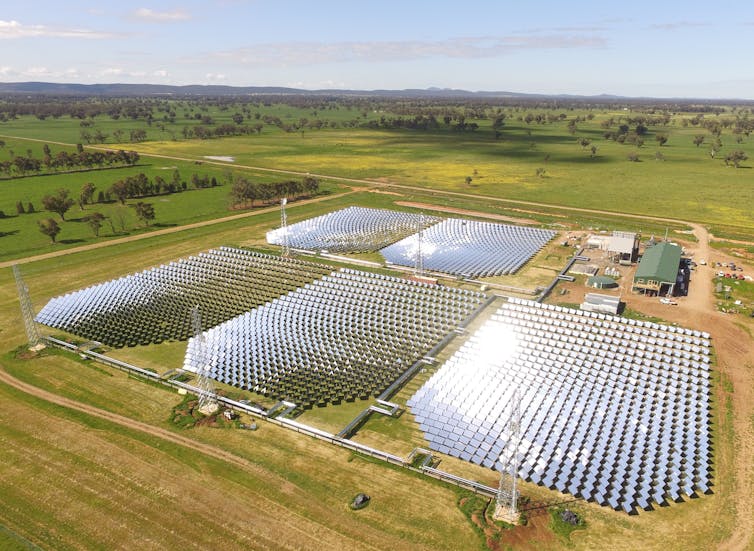
Heed The Warning
We need to start building long-duration energy storage systems now, so we have secure and reliable power when the sun doesn’t shine and the wind doesn’t blow. We also need to replace fossil fuels used to create industrial process heat.
Sectors such as mining, industry, transport, agriculture, and households all require secure, reliable, and affordable renewable energy. For many sectors, this need occurs at night, and that necessitates storage.
Editor’s note: Dominic Zaal contributed to the CSIRO Renewable Energy Storage Roadmap as one of a number of internal and external technical advisers.![]()
Dominic Zaal, Director, Australian Solar Thermal Research Institute (ASTRI), CSIRO
This article is republished from The Conversation under a Creative Commons license. Read the original article.
At The End Of The Dry Season: CO2 Pulses Over Australia
End-of-dry-season CO2 pulses recur each year in the atmosphere above the Australian continent, a discovery made by an international research team led by environmental physicist Prof. Dr André Butz of Heidelberg University. To investigate the carbon fluxes over Australia, the researchers studied atmospheric CO2 measurements. Their analyses show that CO2 emissions spike when heavy rain falls on dried-out soil, thus activating microorganisms in that soil. The findings suggest that dry regions have a greater influence on the variations in the global carbon cycle than previously thought.
The Australian continent is dominated by dry ecosystems and widely varying precipitation patterns. Generally, at the end of the dry season -- when the first rains begin to fall -- CO2 emissions over Australia rise sharply. "This effect is well-known at the local level, but it was never observed at the continental level," states Eva-Marie Metz, a doctoral candidate in Prof. Butz's working group at the Institute of Environmental Physics at Heidelberg University. Data on the atmospheric CO2 concentrations obtained from the Greenhouse Gases Observing Satellite (GOSAT) were analysed. Using the satellite data from 2009 to 2018, the scientists found that the seasonal pattern of CO2 concentrations over Australia was much more dynamic than previously assumed.
Until now, the lack of measurement data on ground hampered uncovering the mechanisms that cause these variations. The research team fed the GOSAT satellite data into an atmospheric inversion model, which is used to estimate the CO2 flux at the ground level. It became clear that there must be an undiscovered mechanism of CO2 release in Australian terrestrial ecosystems, according to Dr Sanam Vardag, whose group also conducts research at the Institute of Environmental Physics of Heidelberg University.
Further studies showed that the concentrations of CO2 always rise when dry soils are rewetted by heavy rainfall. This causes the so-called "Birch Effect," reports Dr Vardag. Soil microbes that are inactive when dry are reactivated by the moisture and multiply, causing the soil to "breathe" and release CO2. Plant photosynthesis does not begin until later, so carbon dioxide is not bound at the end of the dry season, thus causing the seasonally rapid rise in CO2 that the international team of researchers was able to discern on the continental level.
Their investigations have provided an explanation on how the variations in the carbon fluxes from land to atmosphere occur. According to Prof. Butz, these results are significant because they suggest that dry regions -- such as are dominant in Australia -- have a greater influence on the variations of the global carbon cycle than previously believed.
"Our findings, the first on a continental scale, can be used for climate modelling and thus contribute to a better understanding of the global climate-carbon feedbacks," explains the Heidelberg researcher.
The research results were published in the journal "Science." In addition to the environmental physicists from Heidelberg, researchers from the Max Planck Institute for Biogeochemistry in Jena and from the Max Planck Institute for Meteorology in Hamburg as well as from Australia, Canada, China, France, Japan, the United Kingdom, and the USA participated in the research. Funding was provided by the German Research Foundation, among others.
Eva-Marie Metz, Sanam N. Vardag, Sourish Basu, Martin Jung, Bernhard Ahrens, Tarek El-Madany, Stephen Sitch, Vivek K. Arora, Peter R. Briggs, Pierre Friedlingstein, Daniel S. Goll, Atul K. Jain, Etsushi Kato, Danica Lombardozzi, Julia E. M. S. Nabel, Benjamin Poulter, Roland Séférian, Hanqin Tian, Andrew Wiltshire, Wenping Yuan, Xu Yue, Sönke Zaehle, Nicholas M. Deutscher, David W. T. Griffith, André Butz. Soil respiration–driven CO 2 pulses dominate Australia’s flux variability. Science, 2023; 379 (6639): 1332 DOI: 10.1126/science.add7833
Pittwater Reserves: Histories + Notes + Pictorial Walks
A History Of The Campaign For Preservation Of The Warriewood Escarpment by David Palmer OAM and Angus Gordon OAM
A Stroll Through Warriewood Wetlands by Joe Mills February 2023
A Walk Around The Cromer Side Of Narrabeen Lake by Joe Mills
America Bay Track Walk - photos by Joe Mills
An Aquatic June: North Narrabeen - Turimetta - Collaroy photos by Joe Mills
Angophora Reserve Angophora Reserve Flowers Grand Old Tree Of Angophora Reserve Falls Back To The Earth - History page
Annie Wyatt Reserve - A Pictorial
Avalon's Village Green: Avalon Park Becomes Dunbar Park - Some History + Toongari Reserve and Catalpa Reserve
Bairne Walking Track Ku-Ring-Gai Chase NP by Kevin Murray
Bangalley Headland Bangalley Mid Winter
Banksias of Pittwater
Barrenjoey Boathouse In Governor Phillip Park Part Of Our Community For 75 Years: Photos From The Collection Of Russell Walton, Son Of Victor Walton
Barrenjoey Headland: Spring flowers
Barrenjoey Headland after fire
Bayview Baths
Bayview Wetlands
Beeby Park
Bilgola Beach
Botham Beach by Barbara Davies
Bungan Beach Bush Care
Careel Bay Saltmarsh plants
Careel Bay Birds
Careel Bay Clean Up day
Careel Bay Playing Fields History and Current
Careel Creek
Careel Creek - If you rebuild it they will come
Centre trail in Ku-ring-gai Chase National Park
Chiltern Track- Ingleside by Marita Macrae
Clareville Beach
Clareville/Long Beach Reserve + some History
Coastal Stability Series: Cabbage Tree Bay To Barrenjoey To Observation Point by John Illingsworth, Pittwater Pathways, and Dr. Peter Mitchell OAM
Cowan Track by Kevin Murray
Curl Curl To Freshwater Walk: October 2021 by Kevin Murray and Joe Mills
Currawong and Palm Beach Views - Winter 2018
Currawong-Mackerel-The Basin A Stroll In Early November 2021 - photos by Selena Griffith
Currawong State Park Currawong Beach + Currawong Creek
Deep Creek To Warriewood Walk photos by Joe Mills
Drone Gives A New View On Coastal Stability; Bungan: Bungan Headland To Newport Beach + Bilgola: North Newport Beach To Avalon + Bangalley: Avalon Headland To Palm Beach
Duck Holes: McCarrs Creek by Joe Mills
Dunbar Park - Some History + Toongari Reserve and Catalpa Reserve
Dundundra Falls Reserve: August 2020 photos by Selena Griffith - Listed in 1935
Elsie Track, Scotland Island
Elvina Track in Late Winter 2019 by Penny Gleen
Elvina Bay Walking Track: Spring 2020 photos by Joe Mills
Elvina Bay-Lovett Bay Loop Spring 2020 by Kevin Murray and Joe Mills
Fern Creek - Ingleside Escarpment To Warriewood Walk + Some History photos by Joe Mills
Iluka Park, Woorak Park, Pittwater Park, Sand Point Reserve, Snapperman Beach Reserve - Palm Beach: Some History
Ingleside
Ingleside Wildflowers August 2013
Irrawong - Ingleside Escarpment Trail Walk Spring 2020 photos by Joe Mills
Irrawong - Mullet Creek Restoration
Katandra Bushland Sanctuary - Ingleside
Lucinda Park, Palm Beach: Some History + 2022 Pictures
McCarrs Creek
McCarr's Creek to Church Point to Bayview Waterfront Path
McKay Reserve
Mona Vale Beach - A Stroll Along, Spring 2021 by Kevin Murray
Mona Vale Headland, Basin and Beach Restoration
Mona Vale Woolworths Front Entrance Gets Garden Upgrade: A Few Notes On The Site's History
Mount Murray Anderson Walking Track by Kevin Murray and Joe Mills
Mullet Creek
Narrabeen Creek
Narrabeen Lagoon Catchment: Past Notes Present Photos by Margaret Woods
Narrabeen Lagoon State Park
Narrabeen Lagoon State Park Expansion
Narrabeen Rockshelf Aquatic Reserve
Nerang Track, Terrey Hills by Bea Pierce
Newport Bushlink - the Crown of the Hill Linked Reserves
Newport Community Garden - Woolcott Reserve
Newport to Bilgola Bushlink 'From The Crown To The Sea' Paths: Founded In 1956 - A Tip and Quarry Becomes Green Space For People and Wildlife
Pittwater Reserves: The Green Ways; Bungan Beach and Bungan Head Reserves: A Headland Garden
Pittwater Reserves, The Green Ways: Clareville Wharf and Taylor's Point Jetty
Pittwater Reserves: The Green Ways; Hordern, Wilshire Parks, McKay Reserve: From Beach to Estuary
Pittwater Reserves - The Green Ways: Mona Vale's Village Greens a Map of the Historic Crown Lands Ethos Realised in The Village, Kitchener and Beeby Parks
Pittwater Reserves: The Green Ways Bilgola Beach - The Cabbage Tree Gardens and Camping Grounds - Includes Bilgola - The Story Of A Politician, A Pilot and An Epicure by Tony Dawson and Anne Spencer
Pittwater spring: waterbirds return to Wetlands
Pittwater's Lone Rangers - 120 Years of Ku-Ring-Gai Chase and the Men of Flowers Inspired by Eccleston Du Faur
Pittwater's Parallel Estuary - The Cowan 'Creek
Resolute Track at West Head by Kevin Murray
Resolute Track Stroll by Joe Mills
Riddle Reserve, Bayview
Salvation Loop Trail, Ku-Ring-Gai Chase National Park- Spring 2020 - by Selena Griffith
Seagull Pair At Turimetta Beach: Spring Is In The Air!
Stapleton Reserve
Stapleton Park Reserve In Spring 2020: An Urban Ark Of Plants Found Nowhere Else
Stony Range Regional Botanical Garden: Some History On How A Reserve Became An Australian Plant Park
The Chiltern Track
The Resolute Beach Loop Track At West Head In Ku-Ring-Gai Chase National Park by Kevin Murray
Topham Track Ku-Ring-Gai Chase NP, August 2022 by Joe Mills and Kevin Murray
Towlers Bay Walking Track by Joe Mills
Trafalgar Square, Newport: A 'Commons' Park Dedicated By Private Landholders - The Green Heart Of This Community
Tranquil Turimetta Beach, April 2022 by Joe Mills
Turimetta Beach Reserve by Joe Mills, Bea Pierce and Lesley
Turimetta Beach Reserve: Old & New Images (by Kevin Murray) + Some History
Turimetta Headland
Warriewood Wetlands - Creeks Deteriorating: How To Report Construction Site Breaches, Weed Infestations + The Long Campaign To Save The Warriewood Wetlands & Ingleside Escarpment March 2023
Warriewood Wetlands and Irrawong Reserve
Whale Beach Ocean Reserve: 'The Strand' - Some History On Another Great Protected Pittwater Reserve
Wilshire Park Palm Beach: Some History + Photos From May 2022
Winji Jimmi - Water Maze

Pittwater's Birds
Australian Predators of the Sky by Penny Olsen - published by National Library of Australia
Australian Raven Australian Wood Duck Family at Newport
A Week In Pittwater Issue 128 A Week In Pittwater - June 2014 Issue 168
Baby Birds Spring 2015 - Rainbow Lorikeets in our Yard - for Children Baby Birds by Lynleigh Greig, Southern Cross Wildlife Care - what do if being chased by a nesting magpie or if you find a baby bird on the ground
Baby Kookaburras in our Backyard: Aussie Bird Count 2016 - October
Balloons Are The Number 1 Marine Debris Risk Of Mortality For Our Seabirds - Feb 2019 Study
Bangalley Mid-Winter Barrenjoey Birds Bird Antics This Week: December 2016
Bird of the Month February 2019 by Michael Mannington
Birdland Above the Estuary - October 2012 Birds At Our Window Birds at our Window - Winter 2014 Birdland June 2016
Birdsong Is a Lovesong at This time of The Year - Brown Falcon, Little Wattle Bird, Australian Pied cormorant, Mangrove or Striated Heron, Great Egret, Grey Butcherbird, White-faced Heron
Bird Songs – poems about our birds by youngsters from yesterdays - for children Bird Week 2015: 19-25 October
Bird Songs For Spring 2016 For Children by Joanne Seve
Birds at Careel Creek this Week - November 2017: includes Bird Count 2017 for Local Birds - BirdLife Australia by postcode
Black Cockatoo photographed in the Narrabeen Catchment Reserves this week by Margaret G Woods - July 2019
Black-Necked Stork, Mycteria Australis, Now Endangered In NSW, Once Visited Pittwater: Breeding Pair shot in 1855
Black Swans on Narrabeen Lagoon - April 2013 Black Swans Pictorial
Endangered Little Tern Fishing at Mona Vale Beach
‘Feather Map of Australia’: Citizen scientists can support the future of Australia's wetland birds: for Birdwatchers, school students and everyone who loves our estuarine and lagoon and wetland birds
Fledgling Common Koel Adopted by Red Wattlebird -Summer Bird fest 2013 Flegdlings of Summer - January 2012
Flocks of Colour by Penny Olsen - beautiful new Bird Book Celebrates the 'Land of the Parrots'
Friendly Goose at Palm Beach Wharf - Pittwater's Own Mother Goose
Front Page Issue 177 Front Page Issue 185 Front Page Issue 193 - Discarded Fishing Tackle killing shorebirds Front Page Issue 203 - Juvenile Brush Turkey Front Page Issue 208 - Lyrebird by Marita Macrae Front Page Issue 219 Superb Fairy Wren Female Front Page Issue 234: National Bird Week October 19-25 and the 2015 the Aussie Back Yard Bird Count: Australia's First Bird Counts - a 115 Year Legacy - with a small insight into our first zoos Front Page Issue 236: Bird Week 2015 Front Page Issue 244: watebirds Front Page Issue 260: White-face Heron at Careel Creek Front Page Issue 283: Pittwater + more birds for Bird Week/Aussie Bird Count Front Page Issue 284: Pittwater + more birds for Bird Week/Aussie Bird Count Front Page Issue 285: Bird Week 2016 Front Page Issue 331: Spring Visitor Birds Return
G . E. Archer Russell (1881-1960) and His Passion For Avifauna From Narrabeen To Newport
Glossy Black-Cockatoo Returns To Pittwater by Paul Wheeler Glossy Cockatoos - 6 spotted at Careel Bay February 2018
Grey Butcher Birds of Pittwater
INGLESIDE LAND RELEASE ON AGAIN BUT MANY CHALLENGES AHEAD by David Palmer
Issue 60 May 2012 Birdland - Smiles- Beamings -Early -Winter - Blooms
Jayden Walsh’s Northern Beaches Big Year - courtesy Pittwater Natural Heritage Association
John Gould's Extinct and Endangered Mammals of Australia by Dr. Fred Ford - Between 1850 and 1950 as many mammals disappeared from the Australian continent as had disappeared from the rest of the world between 1600 and 2000! Zoologist Fred Ford provides fascinating, and often poignant, stories of European attitudes and behaviour towards Australia's native fauna and connects these to the animal's fate today in this beautiful new book - our interview with the author
July 2012 Pittwater Environment Snippets; Birds, Sea and Flowerings
Juvenile Sea Eagle at Church Point - for children
King Parrots in Our Front Yard
Kookaburra Turf Kookaburra Fledglings Summer 2013 Kookaburra Nesting Season by Ray Chappelow Kookaburra Nest – Babies at 1.5 and 2.5 weeks old by Ray Chappelow Kookaburra Nest – Babies at 3 and 4 weeks old by Ray Chappelow Kookaburra Nest – Babies at 5 weeks old by Ray Chappelow Kookaburra and Pittwater Fledglings February 2020 to April 2020
Lion Island's Little Penguins (Fairy Penguins) Get Fireproof Homes - thanks to NSW National Parks and Wildlife Service and the Fix it Sisters Shed
Lyre Bird Sings in Local National Park - Flock of Black Cockatoos spotted - June 2019
Magpie's Melodic Melodies - For Children (includes 'The Magpie's Song' by F S Williamson)
Masked Lapwing (Plover) - Reflected
May 2012 Birdland Smiles Beamings Early Winter Blooms
Musk Lorikeets In Pittwater: Pittwater Spotted Gum Flower Feast - May 2020
Nankeen Kestrel Feasting at Newport: May 2016
National Bird Week 2014 - Get Involved in the Aussie Backyard Bird Count: National Bird Week 2014 will take place between Monday 20 October and Sunday 26 October, 2014. BirdLife Australia and the Birds in Backyards team have come together to launch this year’s national Bird Week event the Aussie Backyard Bird Count! This is one the whole family can do together and become citizen scientists...
National Bird Week October 19-25 and the 2015 the Aussie Back Yard Bird Count: Australia's First Bird Counts - a 115 Year Legacy - with a small insight into our first zoos
Nature 2015 Review Earth Air Water Stone
New Family of Barking Owls Seen in Bayview - Church Point by Pittwater Council
Noisy Visitors by Marita Macrae of PNHA
Odes to Australia's Fairy-wrens by Douglas Brooke Wheelton Sladen and Constance Le Plastrier 1884 and 1926
Oystercatcher and Dollarbird Families - Summer visitors
Painted Button-Quail Rescued By Locals - Elanora-Ingleside escarpment-Warriewood wetlands birds
Palm Beach Protection Group Launch, Supporters Invited: Saturday Feb.16th - Residents Are Saying 'NO' To Off-Leash Dogs In Station Beach Eco-System - reports over 50 dogs a day on Station Beach throughout December-January (a No Dogs Beach) small children being jumped on, Native birds chased, dog faeces being left, families with toddlers leaving beach to get away from uncontrolled dogs and 'Failure of Process' in council 'consultation' open to February 28th
Pardalote, Scrub Wren and a Thornbill of Pittwater
Pecking Order by Robyn McWilliam
Pelican Lamps at Narrabeen Pelican Dreamsong - A Legend of the Great Flood - dreamtime legend for children
Pittwater Becalmed Pittwater Birds in Careel Creek Spring 2018 Pittwater Waterbirds Spring 2011 Pittwater Waterbirds - A Celebration for World Oceans Day 2015
Pittwater's Mother Nature for Mother's Day 2019
Plastic in 99 percent of seabirds by 2050 by CSIRO
Plover Appreciation Day September 16th 2015
Powerful and Precious by Lynleigh Grieg
Red Wattlebird Song - November 2012
Restoring The Diamond: every single drop. A Reason to Keep Dogs and Cats in at Night.
Sea Birds off the Pittwater Coast: Albatross, Gannet, Skau + Australian Poets 1849, 1898 and 1930, 1932
Sea Eagle Juvenile at Church Point
Seen but Not Heard: Lilian Medland's Birds - Christobel Mattingley - one of Australia's premier Ornithological illustrators was a Queenscliff lady - 53 of her previously unpublished works have now been made available through the auspices of the National Library of Australia in a beautiful new book
7 Little Ducklings: Just Keep Paddling - Australian Wood Duck family take over local pool by Peta Wise
Shag on a North Avalon Rock - Seabirds for World Oceans Day 2012
Short-tailed Shearwaters Spring Migration 2013
South-West North-East Issue 176 Pictorial
Spring 2012 - Birds are Splashing - Bees are Buzzing
Spring Becomes Summer 2014- Royal Spoonbill Pair at Careel Creek
Spring Notes 2018 - Royal Spoonbill in Careel Creek
Station Beach Off Leash Dog Area Proposal Ignores Current Uses Of Area, Environment, Long-Term Fauna Residents, Lack Of Safe Parking and Clearly Stated Intentions Of Proponents have your say until February 28, 2019
Summer 2013 BirdFest - Brown Thornbill Summer 2013 BirdFest- Canoodlers and getting Wet to Cool off Summer 2013 Bird Fest - Little Black Cormorant Summer 2013 BirdFest - Magpie Lark
New Shorebirds WingThing For Youngsters Available To Download
A Shorebirds WingThing educational brochure for kids (A5) helps children learn about shorebirds, their life and journey. The 2021 revised brochure version was published in February 2021 and is available now. You can download a file copy here.
If you would like a free print copy of this brochure, please send a self-addressed envelope with A$1.10 postage (or larger if you would like it unfolded) affixed to: BirdLife Australia, Shorebird WingThing Request, 2-05Shorebird WingThing/60 Leicester St, Carlton VIC 3053.

 Shorebird Identification Booklet
Shorebird Identification Booklet
The Migratory Shorebird Program has just released the third edition of its hugely popular Shorebird Identification Booklet. The team has thoroughly revised and updated this pocket-sized companion for all shorebird counters and interested birders, with lots of useful information on our most common shorebirds, key identification features, sighting distribution maps and short articles on some of BirdLife’s shorebird activities.
The booklet can be downloaded here in PDF file format: http://www.birdlife.org.au/documents/Shorebird_ID_Booklet_V3.pdf
Paper copies can be ordered as well, see http://www.birdlife.org.au/projects/shorebirds-2020/counter-resources for details.
Download BirdLife Australia's children’s education kit to help them learn more about our wading birdlife
Shorebirds are a group of wading birds that can be found feeding on swamps, tidal mudflats, estuaries, beaches and open country. For many people, shorebirds are just those brown birds feeding a long way out on the mud but they are actually a remarkably diverse collection of birds including stilts, sandpipers, snipe, curlews, godwits, plovers and oystercatchers. Each species is superbly adapted to suit its preferred habitat. The Red-necked Stint is as small as a sparrow, with relatively short legs and bill that it pecks food from the surface of the mud with, whereas the Eastern Curlew is over two feet long with a exceptionally long legs and a massively curved beak that it thrusts deep down into the mud to pull out crabs, worms and other creatures hidden below the surface.
Some shorebirds are fairly drab in plumage, especially when they are visiting Australia in their non-breeding season, but when they migrate to their Arctic nesting grounds, they develop a vibrant flush of bright colours to attract a mate. We have 37 types of shorebirds that annually migrate to Australia on some of the most lengthy and arduous journeys in the animal kingdom, but there are also 18 shorebirds that call Australia home all year round.
What all our shorebirds have in common—be they large or small, seasoned traveller or homebody, brightly coloured or in muted tones—is that each species needs adequate safe areas where they can successfully feed and breed.
The National Shorebird Monitoring Program is managed and supported by BirdLife Australia.
This project is supported by Glenelg Hopkins Catchment Management Authority and Hunter Local Land Services through funding from the Australian Government’s National Landcare Program. Funding from Helen Macpherson Smith Trust and Port Phillip Bay Fund is acknowledged.
The National Shorebird Monitoring Program is made possible with the help of over 1,600 volunteers working in coastal and inland habitats all over Australia.
The National Shorebird Monitoring program (started as the Shorebirds 2020 project initiated to re-invigorate monitoring around Australia) is raising awareness of how incredible shorebirds are, and actively engaging the community to participate in gathering information needed to conserve shorebirds.
In the short term, the destruction of tidal ecosystems will need to be stopped, and our program is designed to strengthen the case for protecting these important habitats.
In the long term, there will be a need to mitigate against the likely effects of climate change on a species that travels across the entire range of latitudes where impacts are likely.
The identification and protection of critical areas for shorebirds will need to continue in order to guard against the potential threats associated with habitats in close proximity to nearly half the human population.
Here in Australia, the place where these birds grow up and spend most of their lives, continued monitoring is necessary to inform the best management practice to maintain shorebird populations.
BirdLife Australia believe that we can help secure a brighter future for these remarkable birds by educating stakeholders, gathering information on how and why shorebird populations are changing, and working to grow the community of people who care about shorebirds.
To find out more visit: http://www.birdlife.org.au/projects/shorebirds-2020/shorebirds-2020-program
Aussie Bread Tags Collection Points

History Of The Suspension Bridge / Northbridge Tramline Of The Sydney Tramway System
Youth Week 2023
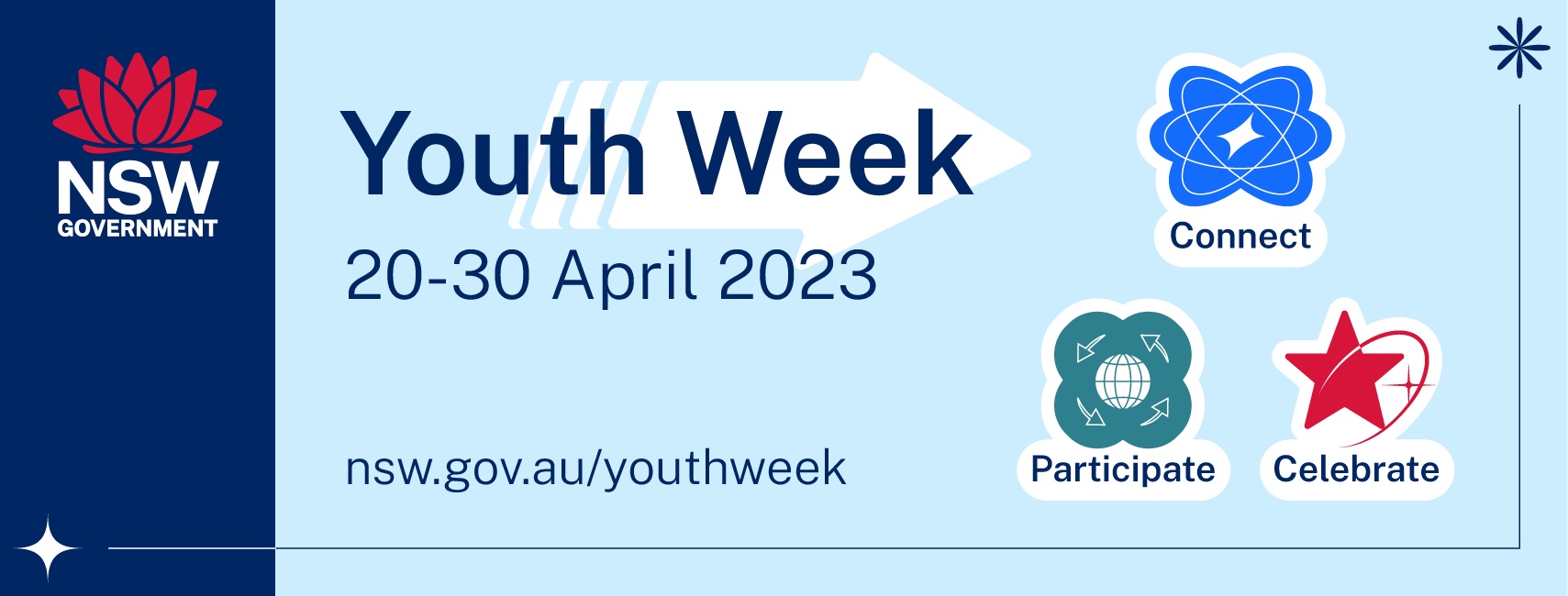
School Holidays Movie: Genius
Scouts Are Out & About
Over the past few months, all age groups in Scouting across Sydney North Region have been doing everything from canoe trips, hikes, and abseiling, to craft and community cleanups.
There's no better time to get into Scouting, with sections for ages 5-25, plus lots of satisfying leadership opportunities for adults.
Young people can have a four-week trial period, and Active Kids vouchers can be used towards membership fees.
Scouts are everywhere! Connect with your local Scout Group via sydneynorthscouts.com
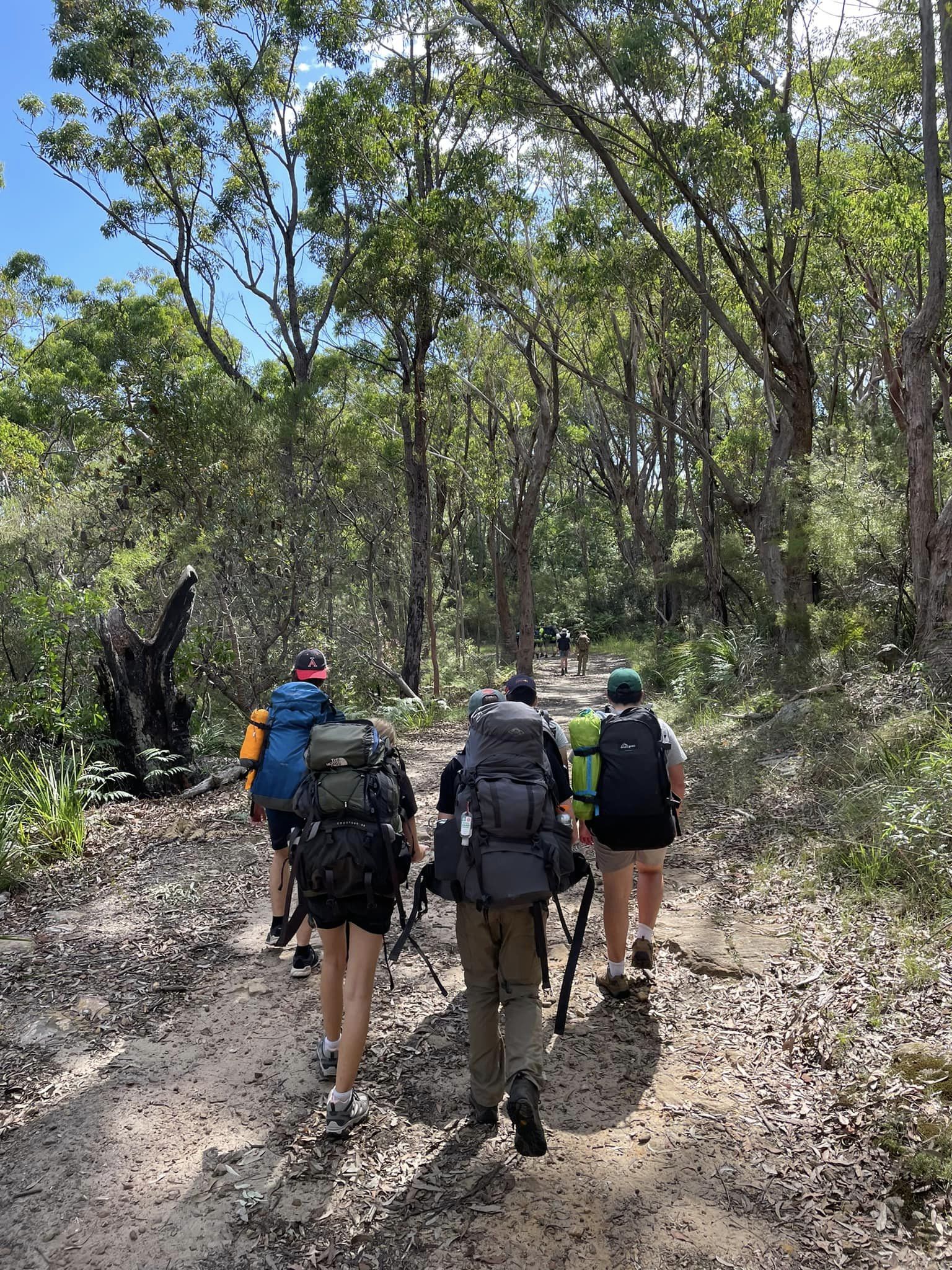
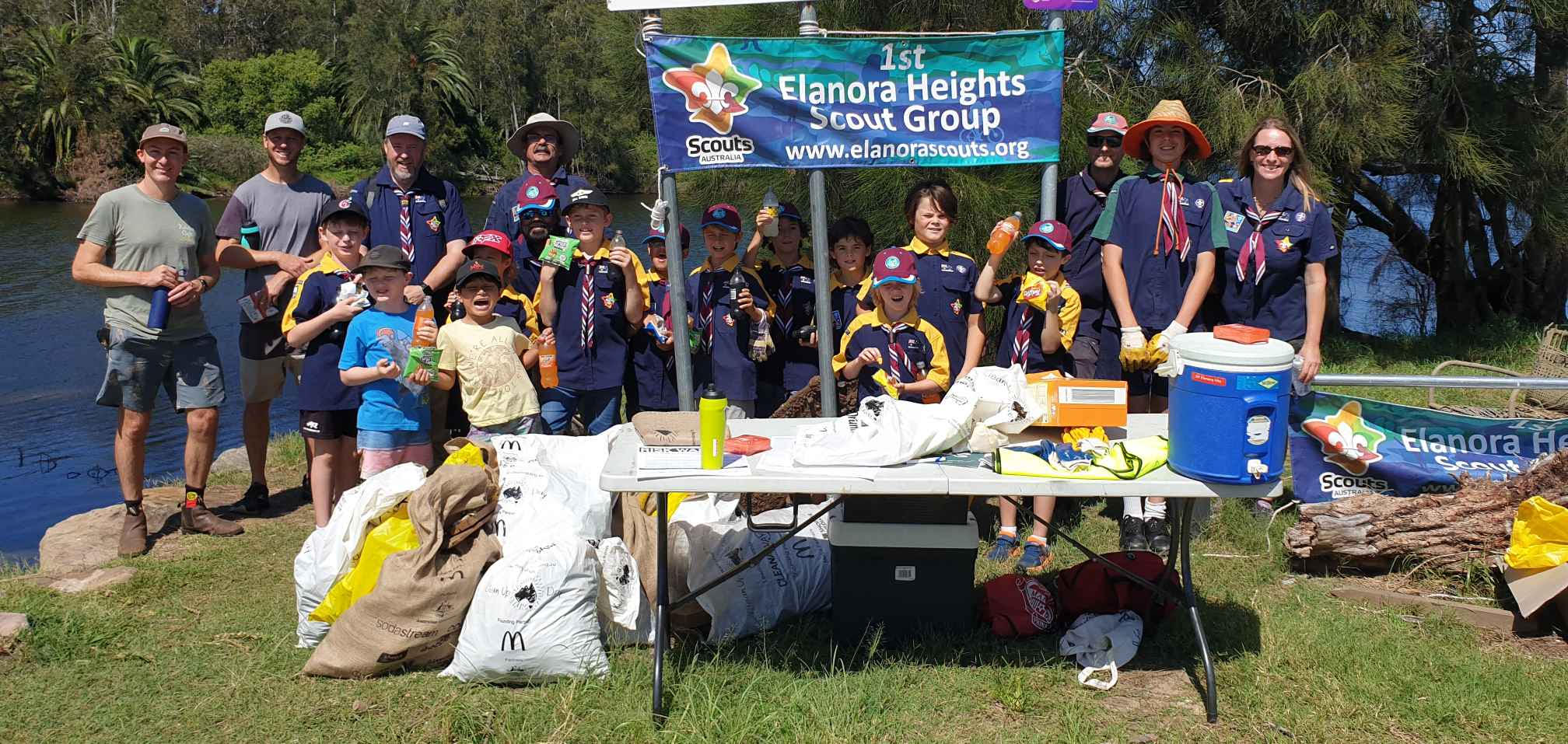
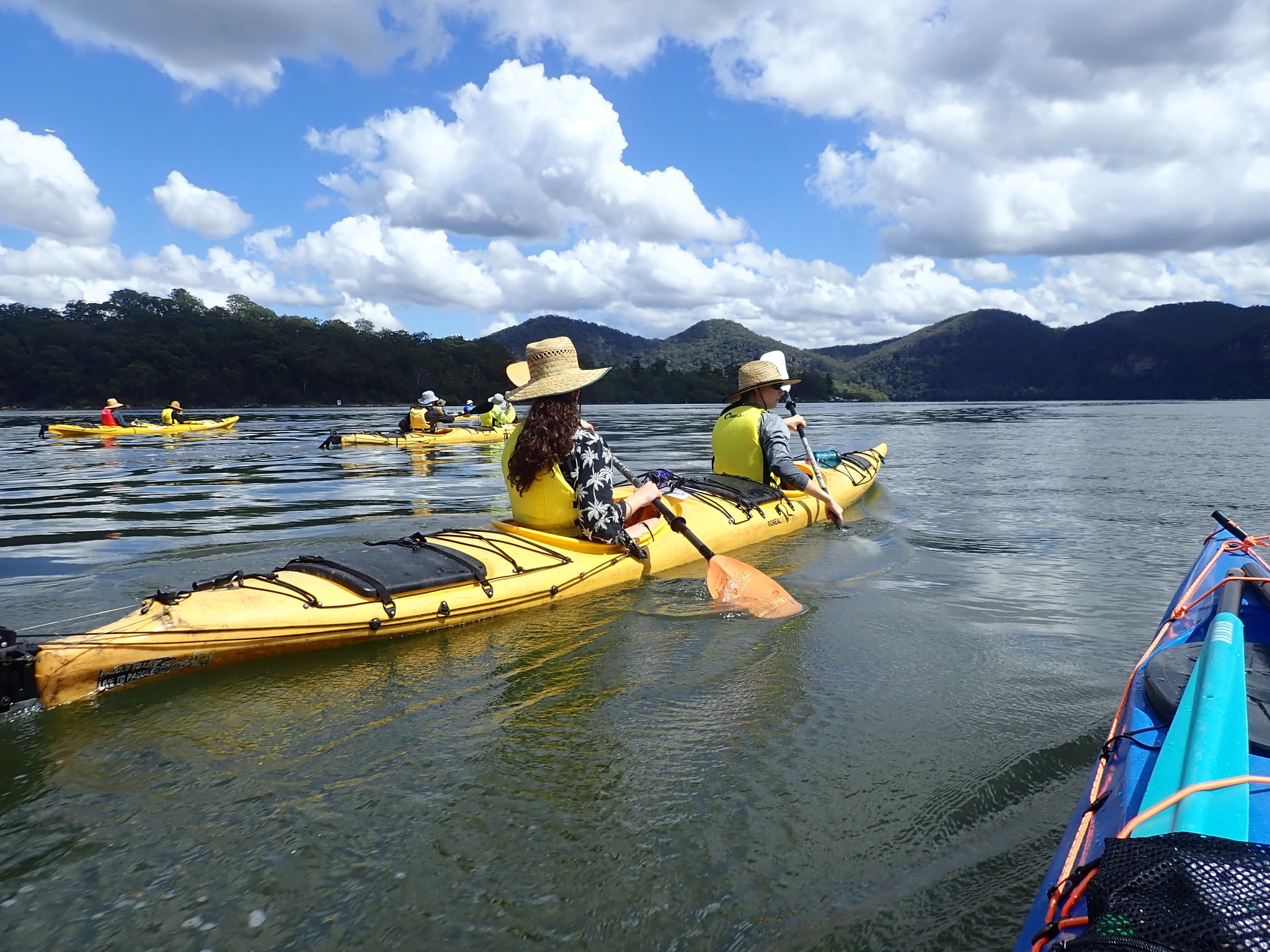

Narrabeen Lakes Sailing Club

Northern Composure Band Competition 2023
Due to the pandemic, Council have had the 20th anniversary on hold but pleased to say that the competition is open and running again.
Northern Composure is the largest and longest-running youth band competition in the area and offers musicians local exposure as well as invaluable stage experience. Bands compete in heats, semi finals and the grand final for a total prize pool of over $15,000.
Over the past 20 years we have had many success stories and now is your chance to join bands such as:
- Ocean Alley
- Lime Cordiale
- Dear Seattle
- What So Not
- The Rions
- Winston Surfshirt
- Crocodylus
And even a Triple J announcer plus a wide range of industry professionals
About the Competition
In 2023, the comp looks a little different.
All bands are invited to enter our heats which will be exclusively run online and voted on by your peers and community by registering below and uploading a video of one song of your choice. (if you are doing a cover, please make sure to credit the original band) We are counting on you to spread the word and get your friends, family, teachers voting for you!
The top 8-12 bands will move on through to our live semi finals with a winner from each moving on to the grand final held during National Youth Week. Not only that but we have raised the age range from 19 to 21 for all those musicians who may have missed out over the past two years.
Key dates
- Voting open for heats: Mon 13 Feb – Sun 26 Feb
- Band Briefing: Mon 6 March, Dee Why PCYC
- Semi 1: Sat 18 March Mona Vale Memorial Hall
- Semi 2: Sat 25 March, YOYOs, Frenchs Forest
- Grand Final: Fri 28 April, Dee Why PCYC
For more information contact Youth Development at youth@northernbeaches.nsw.gov.au or call 8495 5104
Stay in the loop and follow Northern Composure Unplugged on KALOF Facebook.
School Leavers Support
- Download or explore the SLIK here to help guide Your Career.
- School Leavers Information Kit (PDF 5.2MB).
- School Leavers Information Kit (DOCX 0.9MB).
- The SLIK has also been translated into additional languages.
- Download our information booklets if you are rural, regional and remote, Aboriginal or Torres Strait Islander, or living with disability.
- Support for Regional, Rural and Remote School Leavers (PDF 2MB).
- Support for Regional, Rural and Remote School Leavers (DOCX 0.9MB).
- Support for Aboriginal and/or Torres Strait Islander School Leavers (PDF 2MB).
- Support for Aboriginal and/or Torres Strait Islander School Leavers (DOCX 1.1MB).
- Support for School Leavers with Disability (PDF 2MB).
- Support for School Leavers with Disability (DOCX 0.9MB).
- Download the Parents and Guardian’s Guide for School Leavers, which summarises the resources and information available to help you explore all the education, training, and work options available to your young person.
School Leavers Information Service
- navigate the School Leavers Information Kit (SLIK),
- access and use the Your Career website and tools; and
- find relevant support services if needed.
Word Of The Week: Suffrage
noun
1. the right to vote in political elections. (in the Book of Common Prayer) the intercessory petitions pronounced by a priest in the Litany. Archaic; intercessory prayers, especially those for the dead.
From: derives from the Latin word “suffragium,” meaning the right or privilege to vote. From late Middle English (in the sense ‘intercessory prayers’, also ‘assistance’): from Latin suffragium, reinforced by French suffrage.
The basic qualifications for suffrage are similar everywhere, although there are minor variations from country to country. Usually only the adult citizens of a country are eligible to vote there, the minimum age varying from 18 to 25 years. Most governments insist also on the voter’s affiliation to a certain locality or constituency.
Before the evolution of universal suffrage, most countries required special qualifications of their voters. In 18th and 19th century Britain, for instance, there was a property or income qualification, the argument being that only those who had a stake in the country should be allowed a voice in its public affairs - so even adult men who did not own property or have an income above a certain amount could not vote. At one time, only landed property or those who were rich and men qualified for suffrage. Many newly independent countries of Asia and Africa, during the transition from colony to self-government, had a literacy qualification for the suffrage. Some countries limited it to certain racial or ethnic groups. For example, South Africa, at one time, and the Old South of the United States did not permit their Black populations to vote.
Compare suffragette - A suffragette was a member of an activist women's organisation in the early 20th century who, under the banner "Votes for Women", fought for the right to vote in public elections in the United Kingdom. The term refers in particular to members of the British Women's Social and Political Union (WSPU), a women-only movement founded in 1903 by Emmeline Pankhurst, which engaged in direct action and civil disobedience. In 1906, a reporter writing in the Daily Mail coined the term suffragette for the WSPU, derived from suffragistα (any person advocating for voting rights), in order to belittle the women advocating women's suffrage. The militants embraced the new name, even adopting it for use as the title of the newspaper published by the WSPU.
Women had won the right to vote in several countries by the end of the 19th century; in 1893, New Zealand became the first self-governing country to grant the vote to all women over the age of 21.
The Women's Franchise Act 1902 (NSW) gave women the right to vote, and by s4 provided that nothing in that Act should be taken to "enable or qualify a woman to be nominated as a candidate at any election or to be elected as a member" of the Legislative Assembly.
Due to the Legal Practitioners Act 1898 (NSW) which established a Board comprising the judges of the Supreme Court, the Attorney General and two barristers to approve "properly qualified persons" for admission as barristers, under which qualified women were not a "person" for the purposes of the that Act, women, although qualified, could not practice law or be admitted to the bar. The Acts Interpretation Act 1897 (NSW) provided that "[w]ords importing the masculine gender shall include females" but it was soon apparent that legislation was necessary to remove the disqualification to women's admission to the bar .

Maybanke - From November 4th, 1893 Article.
When by 1903 women in Britain had not been enfranchised, Pankhurst decided that women had to "do the work ourselves"; the WSPU motto became "deeds, not words". The suffragettes heckled politicians, tried to storm parliament, were attacked and sexually assaulted during battles with the police, chained themselves to railings, smashed windows, carried out a nationwide bombing and arson campaign, and faced anger and ridicule in the media. When imprisoned they went on hunger strike, not eating for days or even a week, to which the government responded by force-feeding them. The first suffragette to be force fed was Evaline Hilda Burkitt.
In 1903, the Australian suffragist Vida Goldstein adopted the WSPU colours for her campaign for the Senate in 1910 but got them slightly wrong since she thought that they were purple, green and lavender. Goldstein had visited England in 1911 at the behest of the WSPU. Her speeches around the country drew huge crowds and her tour was touted as "the biggest thing that has happened in the women movement for sometime in England". The correct colours were used for her campaign for Kooyong in 1913 and also for the flag of the Women's Peace Army, which she established during World War I to oppose conscription.
.svg.png?timestamp=1681259188211)
Colours of the suffragette movement. Purple represents loyalty and dignity, white for purity, and green for hope.
During International Women's Year in 1975 the BBC series about the suffragettes, Shoulder to Shoulder, was screened across Australia and Elizabeth Reid, Women's Adviser to Prime Minister Gough Whitlam directed that the WSPU colours be used for the International Women's Year symbol. They were also used for a first-day cover and postage stamp released by Australia Post in March 1975. The colours have since been adopted by government bodies such as the National Women's Advisory Council and organisations such as Women's Electoral Lobby and other women's services such as domestic violence refuges and are much in evidence each year on International Women's day.
The death of one suffragette, Emily Davison, when she ran in front of the king's horse at the 1913 Epsom Derby, made headlines around the world. The WSPU campaign had varying levels of support from within the suffragette movement; breakaway groups formed, and within the WSPU itself not all members supported the direct action.
The suffragette campaign in Britain was suspended when World War I broke out in 1914. After the war, the Representation of the People Act 1918 gave the vote to all British men, finally, and women over the age of 30 who met certain property qualifications. Ten years later, women gained electoral equality with men when the Representation of the People (Equal Franchise) Act 1928 gave all women the right to vote at age 21.
Australia was far more advanced in allowing all men the right to vote:
In 1856, under a new Constitution, the New South Wales Parliament became bicameral with a fully elected Legislative Assembly and a fully appointed Legislative Council with a Government taking over most of the legislative powers of the Governor. On 22 May 1856, the newly constituted New South Wales Parliament opened and sat for the first time. The right to vote for Legislative Assembly was extended to all adult males in 1858. However, women still could not - nor could they own property in their own right or seek divorce.
When the colonial constitutions of New South Wales, Victoria, South Australia and Tasmania were framed in the 1850s, voting rights were granted to all male British subjects over the age of 21, which included Aboriginal men. Western Australia and Queensland specifically barred indigenous people from voting. However, few Aborigines were aware of their rights and hence very few participated in elections.
All women in South Australia were granted the right to vote in South Australian elections in 1894, followed by women in Western Australia in 1899.
In 1901, the six Australian colonies united to form the federal Commonwealth of Australia. The first election for the Commonwealth Parliament in 1901 was based on the electoral laws at that time of the six colonies, so that those who had the right to vote and to stand for Parliament at state level had the same rights for the 1901 Australian federal election. Only in South Australia (since 1895) and Western Australia (since 1899) did women have a vote. Tasmania retained a small property qualification for voting, but in the other states all male British subjects over 21 could vote. Only in South Australia (which included the Northern Territory) and Tasmania were indigenous Australians entitled to vote. In some areas of South Australia the Aboriginal vote may have influenced the poll outcome. Western Australia and Queensland specifically barred indigenous people from voting.
In 1902, the Commonwealth Parliament passed the Commonwealth Franchise Act 1902, which established a uniform franchise law for the federal Parliament. The Act declared that all British subjects over the age of 21 years who had been living in Australia for at least 6 months were entitled to a vote, whether male or female, and whether married or single. Besides granting Australian women the right to vote at a national level, it also allowed them to stand for election to federal Parliament.
This meant that Australia was the second country, after New Zealand, to grant women's suffrage at a national level, and the first country to allow women to stand for Parliament. However, the Act also disqualified Indigenous people from Australia, Asia, Africa and the Pacific Islands, with the exception of Māori, from voting, even though they were British subjects and otherwise entitled to a vote. By this provision, Indian people, for example, were disqualified to vote. The only exception was in relation to those who were entitled under Section 41 of the Australian Constitution to a vote. Section 41 states that any individual who has gained a right to vote at a state level, must also have the right to vote in federal elections. The then Solicitor-General, Robert Garran, interpreted the provision to mean that Commonwealth voting rights were granted by section 41 only to people who were already State voters in 1902. The effect was not to enable those who subsequently acquired the right to vote at a State level, but who were expressly excluded from the franchise by the 1902 Act, such as Indigenous Australians, to also vote at the federal level. Also, those otherwise entitled voters who are subject to a crime which carries a penalty of over one year in prison are disqualified to vote. There was also no representation for any of the territories of Australia.
In the meantime, State franchise laws continued in force until each one chose to amend them.
In 1897, in South Australia, Catherine Helen Spence was the first woman to stand as a political candidate. The restrictions on voting by indigenous Australians were relaxed after World War II, and removed by the Commonwealth Electoral Act in 1962. Senator Neville Bonner became the first Aboriginal Australian to sit in the federal Parliament in 1971. Julia Gillard became the first female Prime Minister of Australia in 2010.
For indiegenous people the situation became murkier when the Commonwealth Franchise Act was passed in 1902. The Act gave women a vote in federal elections but Aboriginal people and people from Asia, Africa or the Pacific Islands (except for Māori) were excluded unless entitled under Section 41 of the Australian Constitution. Section 41 states that any individual who has gained a right to vote at a state level, must also have the right to vote in federal elections. The Solicitor-General, Sir Robert Garran, interpreted it to mean that Commonwealth rights were granted only to people who were already State voters in 1902. What transpired was a situation where Aboriginals who had already enrolled to vote were able to continue to do so, whereas those who had not were denied the right. This interpretation was challenged in Victoria in 1924 by an Indian migrant, where the magistrate ruled that Section 2 meant that people who acquired State votes at any date were entitled to a Commonwealth vote. The Commonwealth government in 1925 changed the law to give natives of British India living in Australia the vote (there were only about 100 in Australia at the time), but continued to deny other non-white applicants.
Campaigns for indigenous civil rights in Australia gathered momentum from the 1930s. In 1938, with the participation of leading indigenous activists like Douglas Nicholls, the Australian Aborigines' League organised the "Day of Mourning", which marked in protest the 150th anniversary of the arrival of the First Fleet to the Australian continent and launched its campaign for full civil rights for all Aboriginal Australians. In the 1940s, the conditions of life for Aboriginals could be very poor. A permit system restricted movement and work opportunities for many Aboriginal people. In the 1950s, the government pursued a policy of "assimilation" which sought to achieve full civil rights for Aboriginal but also wanted them to adopt the mode of life of other Australians (which very often was assumed to require suppression of cultural identity).
In 1949, the right to vote in federal elections was extended to all Indigenous people who had served in the armed forces, or were enrolled to vote in state elections (Queensland and Western Australia still excluded indigenous people from the vote). Remaining federal restrictions were abolished in 1962, though enrolment was voluntary.
In the 1960s, reflecting the strong civil rights movements in the United States and South Africa, many changes in Aboriginals’ rights and treatment followed, including removal of restrictions on voting rights. The Menzies Government Commonwealth Electoral Act of 1962 confirmed the Commonwealth vote for all Aboriginals. Western Australia gave them State votes in the same year, and Queensland followed in 1965.
The 1967 referendum was held and electors overwhelmingly approved the amendment of the Constitution to remove discriminatory references and giving the national parliament the power to legislate specifically for Indigenous Australians. Contrary to frequently repeated mythology, this referendum did not cover citizenship for Indigenous people, nor did it give them the vote: they already had both. However, transferring this power away from the State parliaments did bring an end to the system of Indigenous Australian reserves which existed in each state, which allowed Indigenous people to move more freely, and exercise many of their citizenship rights for the first time.
The first MP for Mackellar, Bill Wentworth, who lived at Newport and married a Mona Vale girl, was also Minister in Charge of Aboriginal Affairs, the first Minister to hold this office, and who ensured the success of the 1967 Referendum - he had already spent decades campaigning for the rights of this land's first custodians.
More in: The Baird Family Of Mona Vale - The Wentworths Of Newport

(1950). Portrait of William Charles Wentworth, Liberal member for Mackellar, New South Wales, June 1950 Retrieved from http://nla.gov.au/nla.obj-138002864
3 reasons you feel hungrier and crave comfort foods when the weather turns cold

As we move through Autumn, parts of Australia are starting to see cooler weather. For some of us, that can mean increasing feelings of hunger and cravings for “comfort food” such as as pasta, stews and ramen.
But what’s happening in our body?
3 Things Change When It Gets Cold
1. Our body conserves heat
It sends this energy it conserves to our internal organs so they can maintain their temperature and work properly. The body can also perform heat-generating activities (such as shivering), which uses energy. The body will then look for additional energy through calories from eating food.
2. Our body warms up when eating
When we eat, the body needs to expend energy to digest, absorb, and metabolise the nutrients. This process requires the use of energy, which generates heat in the body, leading to an increase in body temperature termed “diet-induced thermogenesis”.
However, the amount of energy used to keep us warm is quite modest.
3. Some people experience a drop in the neurotransmitter called serotonin
This is partly because the rate our body produces serotonin is related to sunlight, which is lower in winter.
Serotonin helps to regulate mood, appetite, and sleep, among other things. When serotonin levels are low, it can lead to increased hunger and decreased satiety (feeling that you’ve had enough to eat), making us feel hungrier and less satisfied after meals.

Why We Love Comfort Food In Winter
Many of us struggle to eat salad in winter and crave mum’s chicken soup or a slow cooked, brothy ramen.
Research shows our brain detects the cold weather and looks for warm food. Warm food can provide a sense of comfort and cosiness, which is particularly appealing during the colder months when we spend more time indoors.
Comfort food can mean something different for everyone. They are foods we reach for in periods of stress, nostalgia, discomfort (like being cold), or emotional turmoil. For most of us, the foods we often over-indulge in are rich and carbohydrate heavy.
A drop in serotonin has also been shown to stimulate an urge to eat more carbohydrate-rich foods such as gnocchi, pasta, ragout, mashed potatoes.
What Happens To Those Extra Calories?
If you consume more energy in cooler weather, some of it will be used to keep you warm. Beyond keeping us warm, extra calories we consume are stored.
While most humans today have access to a year-round food supply, some research shows our bodies may still have some leftover instincts related to storing energy for the cooler months when food was harder to come by.
This behaviour may also be driven by biological factors, such as changes in hormone levels that regulate appetite and metabolism.
A fundamental principle of nutrition and metabolism is that the balance between the energy content of food eaten and energy expended to maintain life and to perform physical work affects body weight. This means any excess energy that we don’t use will be stored – usually as fat.
Using mathematical modelling, researchers have predicted weight gain is more likely when food is harder to find. Storing fat is an insurance against the risk of failing to find food, which for pre-industrial humans was most likely to happen in winter.

It Doesn’t Have To Be Unhealthy
No matter your cravings during cooler months, it’s important to remember your own personal health and wellbeing goals.
If you’re worried about excess energy intake, a change in season is a great time to rethink healthy food choices. Including lots of whole fresh vegetables is key: think soups, curries, casseroles, and so on.
Including protein (such as meat, fish, eggs, legumes) will keep you feeling fuller for longer.![]()
Lauren Ball, Professor of Community Health and Wellbeing, The University of Queensland and Emily Burch, Dietitian, Researcher & Lecturer, Southern Cross University
This article is republished from The Conversation under a Creative Commons license. Read the original article.
Seven tips for a healthier relationship with your phone

How long do you spend staring at a screen every day? According to one report, the average person spends about seven hours a day on screens connected to the internet. And that figure is going to be even higher if your job is mainly done in front of a computer.
Most of us over-use digital devices, spending too long either working or enjoying being distracted on phones, tablets, laptops or even VR headsets. We are accused of being addicted to tech and warned of the dangers to our physical and mental health.
One significant paradox here is that we often retreat into the digital world to escape the stresses of the physical world, but can end up simply collecting other kinds of digital and physical stress along the way.
As a parent, I became concerned a few years ago about the effect my digital life was having on my work and family. I did some research of my own, changed the way I used my devices and even wrote a book about the dangers of what I call the “digital inferno”.

It’s only in recent years that longer-term studies have been published on the issue. And taken together, these studies comprise a growing and significant body of knowledge, that is hard to dismiss or ignore: too much tech can cause issues for us humans.
To be clear, digital devices offer significant benefits – think connection, education, entertainment. The danger is when our overuse of them becomes toxic to our health.
From a personal perspective, eye strain, neck ache, poor sleep, stress, repetitive strain injuries of all kinds and impaired hand function are just a few of symptoms I’ve had over the years thanks to my overuse of screens and devices – and research shows I’m far from alone.
If any of these symptoms describe you (or anyone you know), or you just feel too much of your life is taken up with staring at a screen, then you might find my advice on how to regain control of your tech helpful.
How To Regain Control
1. Practice putting down your digital devices consciously
Keep them out of sight and put them away when you aren’t using them, especially at night. Banish them from the bedroom, get an alarm clock (so you aren’t using your phone alarm) and you’ll sleep better without the late-night scrolling. And get out of the habit of watching TV with your phone next to you. Just focus on one task at a time without the distraction of another screen.
2. Set yourself screen time limits
Too much screen time can give you headaches. Be mindful of the way your use your tech and make use of features like voice notes, which allow you to stay up-to-date with communication without staring at a screen for a long time.
3. Stop allowing digital distractions
Constant interruption can induce physical and mental stress. Turn off notifications and alerts when you want to fully focus on a task. And keep your phone off your desk. Research shows that having your phone nearby, even if it’s not buzzing or ringing and even if the power is off, can hurt your performance.
4. Schedule proper digital-free time
Depression and anxiety is one result of digital overload. So getting away from your digital world for a while is important. Take a walk in nature, read a book, go for a bike ride – anything that takes you away from the screens for a while.

5. Make screens easier on the eyes
Screen overuse can strain our eyes and affect our eyesight. Don’t squint at tiny screens to do work that would be better done on a larger-screen laptop. Reduce the blue light on devices and make use of all the other helpful accessibility features. Start with that screen glare. And also make sure the volume doesn’t burst your ear drums.
6. Take control of the chaos of information overload
Organise your phone, computer and tablet so you can use them more efficiently. Some apps really do help you take charge of your life and work more calmly and effectively. Time-tracking apps measure how much time you’re spending (wasting) on your screen – prepare to be horrified! We regain mastery over our digital devices when we become more proactive in their use.
7. Sit well when you are digitally engaged
Slouching over a phone or hunching over your laptop will harm your neck and your back. Sit upright, stretch regularly and exercise often – without your phone.
Be A Digital Decider
These seven tips should help you regain a sense of control over your digital life. For me, it’s all about sleeping and waking better after leaving my phone downstairs. It’s about having dedicated, planned digital time and specific times when the phone has no place in what I’m doing.
Yet it’s also about enjoying these tech miracles in a more satisfying way and using them more consciously. I like to think of myself now as a digital decider and not just another digital casualty.![]()
Paul Levy, Senior Lecturer and Researcher in Innovation and Digital Leadership, University of Brighton
This article is republished from The Conversation under a Creative Commons license. Read the original article.
As the global musical phenomenon turns 50, a hip-hop professor explains what the word ‘dope’ means to him

After I finished my Ph.D. in 2017, several newspaper reporters wrote about the job I’d accepted at the University of Virginia as an assistant professor of hip-hop.
“A.D. Carson just scored, arguably, the dopest job ever,” one journalist wrote.
The writer may not have meant it the way I read it, but the terminology was significant to me. Hip-hop’s early luminaries transformed the word’s original meanings, using it as a synonym for cool. In the 50 years since, it endures as an expression of respect and praise – and illegal substances.
In that context, dope has everything to do with my work.
In the year I graduated from college, one of my best friends was sent to federal prison for possession of crack cocaine with intent to distribute. He served nearly a decade and has been back in prison several times since.
But before he went to prison, he helped me finish school by paying off my tuition.
In a very real way, dope has as much to do with me finishing my studies and becoming a professor as it does with him serving time in a federal prison.
Academic Dope
For my Ph.D. dissertation in Rhetorics, Communications, and Information Design, I wrote a rap album titled “Owning My Masters: The Rhetorics of Rhymes & Revolutions.” A peer-reviewed, mastered version of the album is due out this summer from University of Michigan Press.
Part of my reasoning for writing it that way involved my ideas about dope. I want to question who gets to determine who and what are dope and whether any university can produce expertise on the people who created hip-hop.
While I was initially met with considerable resistance for my work at Clemson, the university eventually became supportive and touted “a dissertation with a beat.”
Clemson is not the only school to recognize hip-hop as dope.
In the 50 years since its start at a back-to-school party in the South Bronx, hip-hop, the culture and its art forms have come a long way to a place of relative prominence in educational institutions.
Since 2013, Harvard University has housed the Hiphop Archive & Research Institute and the Nasir Jones Hiphop Fellowship that funds scholars and artists who demonstrate “exceptional scholarship and creativity in the arts in connection with Hiphop.”
UCLA announced an ambitious Hip Hop Initiative to kick off the golden anniversary. The initiative includes artist residencies, community engagement programs, a book series and a digital archive project.
Perhaps my receiving tenure and promotion at the University of Virginia is part of the school’s attempt to help codify the existence of hip-hop scholarship.
When I write about “dope,” I’m thinking of Black people like drugs to which the U.S. is addicted.
Dope is a frame to help clarify the attempts, throughout American history, at outlawing and legalizing the presence of Black people and Black culture. As dope, Black people are America’s constant ailment and cure.
To me, dope is an aspiration and a methodology to acknowledge and resist America’s steady surveillance, scrutiny and criminalization of Blackness.
By this definition, dope is not only what we are, it’s also who we want to be and how we demonstrate our being.
Dope is about what we can make with what we are given.
Dope is a product of conditions created by America. It is also a product that helped create America.
Whenever Blackness has been seen as lucrative, businesses like record companies and institutions like colleges and universities have sought to capitalize. To remove the negative stigmas associated with dope, these institutions cast themselves in roles similar to a pharmacy.
Even though I don’t believe academia has the power or authority to bestow hip-hop credibility, a question remains – does having a Ph.D and producing rap music as peer-reviewed publications change my dopeness in some way?
Legalizing Dope
Though I earned a Ph.D by rapping, my own relationship to hip-hop in academic institutions remains fraught.
Part of the problem was noted in 2014 by Michelle Alexander, a legal scholar and author of “The New Jim Crow,” when she talked about her concerns about the legalization of marijuana in different U.S. states.
“In many ways the imagery doesn’t sit right,” she said. “Here are white men poised to run big marijuana businesses … after 40 years of impoverished black kids getting prison time for selling weed, and their families and futures destroyed. Now, white men are planning to get rich doing precisely the same thing?”
I feel the same way about dopeness in academia. Since hip-hop has emerged as a global phenomenon largely embraced by many of the “academically trained” music scholars who initially rejected it, how will those scholars and their schools now make way for the people they have historically excluded?
This is why that quote about me “scoring, arguably, the dopest job ever” has stuck with me.
I wonder if it’s fair to call what I do a form of legalized dope.
America’s Dope-Dealing History
In the late 1990s, I saw how fast hip-hop had become inescapable across the U.S., even in the small Midwestern town of Decatur, Illinois, where I grew up with my friend who is now serving federal prison time.
He and I have remained in contact. Among the things we discuss is how unlikely it is that I would be able to do what I do without his doing what he did.
Given the economic realities faced by people after leaving prison, we both know there are limitations to his opportunities if we choose to see our successes as shared accomplishments.
Depending on how dope is interpreted, prisons and universities serve as probable destinations for people who make their living with it. It has kept him in prison roughly the same amount of time as it has kept me in graduate school and in my profession.
This present reality has historical significance for how I think of dope, and what it means for people to have their existence authorized or legalized, and America’s relationship to Black people.
Many of the buildings at Clemson were built in the late 1880s using “laborers convicted of mostly petty crimes” that the state of South Carolina leased to the university.
Similarly, the University of Virginia was built by renting enslaved laborers. The University also is required by state law to purchase office furniture from a state-owned company that depends on imprisoned people for labor. The people who make the furniture are paid very little to do so.
The people in the federal prison where my friend who helped me pay for college is now housed work for paltry wages making towels and shirts for the U.S. Army.
Even with all of the time and distance between our pasts and present, our paths are still inextricably intertwined – along with all those others on or near the seemingly transient line that divides “legal” and “illegal” dope.![]()
A.D. Carson, Assistant Professor of Hip-Hop, University of Virginia
This article is republished from The Conversation under a Creative Commons license. Read the original article.
Why reading books is good for society, wellbeing and your career

TikTok allows video up to 10 minutes, but says surveys show almost half its users are stressed by anything longer than a minute. An Instagram video can be up to 90 seconds, but experts reckon the ideal time to maximise engagement is less than 15 seconds. Twitter doubled the length of tweets in 2017 to 280 characters, but the typical length is more like 33 characters.
It’s easy to get sucked into short and sensational content. But if you’re worried this may be harming your attention span, you should be. There’s solid evidence that so many demands on our attention make us more stressed, and that the endless social comparison makes us feel worse about ourselves.
For better mental health, read a book.
Studies show a range of psychological benefits from book-reading. Reading fiction can increase your capacity for empathy, through the process of seeing the world through a relatable character. Reading has been found to reduce stress as effectively as yoga. It is being prescribed for depression – a treatment known as bibliotherapy.
Book-reading is also a strong marker of curiosity – a quality prized by employers such as Google. Our research shows reading is as strongly associated with curiosity as interest in science, and more strongly than mathematical ability.
And it’s not just that curious minds are more likely to read because of a thirst for knowledge and understanding. That happens too, but our research has specifically been to investigate the role of reading in the development of curious minds.
Tracking Reading And Curiosity
Our findings come from analysing data from the Longitudinal Surveys of Australian Youth, which tracks the progress of young Australians from the age of 15 till 25.
Longitudinal surveys provide valuable insights by surveying the same people – in this case a group of about 10,000 young people. Every year for ten years they are asked about their achievements, aspirations, education, employment and life satisfaction.
There have been five survey cohorts since 1998, the most recent starting in 2016. We analysed three of them – those beginning in 2003, 2006 and 2009, looking at the data up to age 20, at which age most have a job or are looking for one.
The survey data is rich enough to develop proxy measures of reading and curiosity levels. It includes participants’ scores in the OECD Programme for International Student Assessment tests for reading, mathematics and science ability. There are survey questions about time spent reading for pleasure, time reading newspapers or magazines, and library use.
To measure curiosity, we used respondents’ answers to questions about their interest in the following:
- learning new things
- thinking about why the world is in the state it is
- finding out more about things you don’t understand
- finding out about a new idea
- finding out how something works.
We used statistical modelling to control for environmental and demographic variables and distinguish the effect of reading activity as a teenager on greater curiosity as a young adult. This modelling gives us confidence that reading is not just correlated with curiosity. Reading books helps build curiosity.

Gloom And Doom-Scrolling
Does this mean if you’re older that it’s too late to start reading? No. Our results relate to young people because the data was available. No matter what your age, deep reading has benefits over social-media scrolling.
The short-term dopamine rush of scrolling on a device is an elusive promise. It depletes rather than uplifts us. Our limbic brain – the part of the brain associated with our emotional and behavioural responses – remains trapped in a spiral of pleasure-seeking.
Studies show a high correlation between media multitasking and attention problems due to cognitive overload. The effect is most evident among young people, who have grown up with social media overexposure.
US social psychologist Jonathan Haidt is among the researchers warning that high social media use is a major contributor to declining mental health for teenage girls:
Boys are doing badly too, but their rates of depression and anxiety are not as high, and their increases since 2011 are smaller.
Why this “giant, obvious, international, and gendered cause”? Haidt writes:
Instagram was founded in 2010. The iPhone 4 was released then too — the first smartphone with a front-facing camera. In 2012 Facebook bought Instagram, and that’s the year that its user base exploded. By 2015, it was becoming normal for 12-year-old girls to spend hours each day taking selfies, editing selfies, and posting them for friends, enemies, and strangers to comment on, while also spending hours each day scrolling through photos of other girls and fabulously wealthy female celebrities with (seemingly) vastly superior bodies and lives.
In 2020 Haidt published research showing girls are more vulnerable to “fear of missing out” and the aggression that social media tends to amplify. Since then he’s become even more convinced of the correlation.
Social media, by design, is addictive.
With TikTok, for example, videos start automatically, based on what the algorithm already knows about you. But it doesn’t just validate your preferences and feed you opinions that confirm your biases. It also varies the content so you don’t know what is coming next. This is the same trick that keeps gamblers addicted.
Tips To Get Back Into Books
If you are having difficulty choosing between your phone and a book, here’s a simple tip proven by behavioural science. To change behaviour it also helps to change your environment.
Try the following:
Carry a book at all times, or leave books around the house in convenient places.
Schedule reading time into your day. 20 minutes is enough. This reinforces the habit and ensures regular immersion in the book world.
If you’re not enjoying a book, try another. Don’t force yourself.
You’ll feel better for it – and be prepared for a future employer asking you what books you’re reading.![]()
Meg Elkins, Senior Lecturer with School of Economics, Finance and Marketing and Behavioural Business Lab Member, RMIT University; Jane Fry, Postdoctoral research fellow, The University of Melbourne, and Lisa Farrell, Professor of Economics (Health Economist), RMIT University
This article is republished from The Conversation under a Creative Commons license. Read the original article.
Guide to the classics: steeped in the arboreal sublime, Thomas Hardy’s The Woodlanders carries a startling urgency
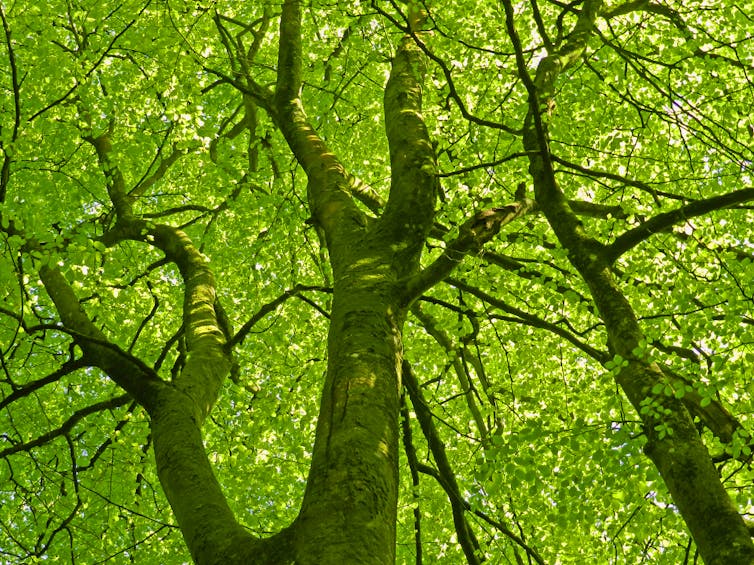
In Thomas Hardy’s The Woodlanders (1887), the trees sing.
Sometimes the sound is like a Gregorian chant, a threnody from the rustling leaves, the creaking boughs, the undulations of limbs heavy with leaves, swaying in the wind that rushes through the woods of Dorset’s Little Hintock.
At other times, it is a low moan, a cry of pain, voiced as if in sympathy with the tragic plight of the characters who wander through these woods, searching for something lost or never quite possessed – for a Hardyian character is always driven by a restive compulsion to move.
Even in stillness, Hardy limns the minute transformations of the body – of human limbs cicatriced with tree wounds, or the trunk of one of the forest’s oldest inhabitants – pulsing with life, desire, will.
These sylvan protagonists – English oaks, crab-apples, silver birches, willows, blackthorns, hazel trees, ash-trees, and elms – come into life with a sigh, an audible exhalation sounding from deep inside the trunk.
The Vocabulary Of Trees
The Woodlanders tells the story of a small community who live and work in the forest. They are woodcutters and spar-makers, fruit-pickers and timber dealers, busily industrious under the tree canopy that makes a second sky.
Human labour keeps time with the seasons in Little Hintock, the fictive hamlet that Hardy maps onto the topography of Dorset in the south of England: felling timber in the autumn and winter; pressing apples for cider in the spring and summer. Hardy’s tragic hero, Giles Winterborne, is continually evoked by the traces of labour that cling to his skin, hair and clothes: apple pips and pomace, the vestiges of pulpy matter on his hands.

The bodies of the novel’s characters are expressive, not so much of their individual personality as their contact with the forest. Their flesh is imprinted with a history of woodwork unique to each. The skin is an index of mishaps with elms, boles, rubbings of bark and brushings of twig. These afflictions become the means through which the body is known, to the self and to others. Mnemonic aches and resisting joints are evocative of the past.
One of Hardy’s great themes, and an element of his aesthetic accomplishment that astonishes us still, is his unsettling of the individual, understood as sovereign, private and unified. Hardy understands the self as constituted by and continuous with both human and non-human others.
In The Woodlanders, the pliancy and impressible feeling of consciousness cannot be uncoupled from the botanic. We can see this – and hear it too – in the vocabulary of trees, which structures characters’ speech patterns and ways of thinking and being. Desires and passions are formed by the sculpting hand of the natural environment.
At times, the words characters speak to one another are felled like wood: in many of the novel’s climactic scenes, speech is painfully constrained, an inadequacy that is camouflaged by physical activity.
Winterborne suffers most acutely from this linguistic affliction. He finds his words cleaved “into two pieces”. They respond not to his conscious intentions, but instead, for instance, to the arc of his arm in the act of woodcutting. In this way, language is an effect of the body’s primacy: like an echo, it continually reasserts the fact of embodiment.
In an epoch of environmental catastrophe, The Woodlanders carries a new and startling urgency. The cumulative effect of the pervasiveness of trees is to imply something about our notions of selfhood, something that philosopher Dalia Nassar and plant scientist Margaret Barbour have described as the lesson trees can teach us about embodiment and boundedness, of “our rootedness, relationality, dialogue, and responsiveness”.
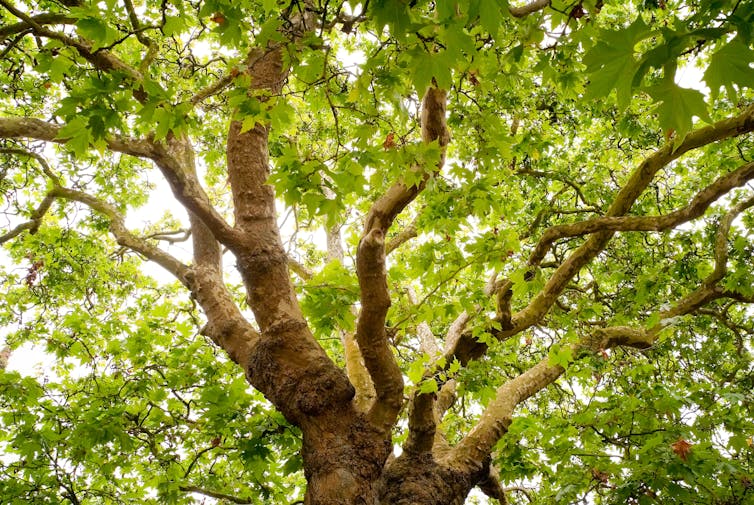
Attuned To The Forest
The trees’ expirations are recorded by the two characters most lovingly attuned to the forest: Marty South and Giles Winterborne. In one remarkable scene, the pair – not quite lovers, yet united in a complicity that springs from their possession of a unique affinity with the vegetal world – plant fir saplings early one winter’s morning.

Hardy’s affection for Winterborne is emphasised in the attention he pays to the young man’s movements. A skilled woodsman, Giles has a mystical ability. His fingers are “endowed with a gentle conjurer’s touch in spreading the roots of each little tree, resulting in a sort of caress, under which the delicate fibres all laid themselves out in their proper directions for growth”.
But it is the young woman Marty, barely more than a girl, with her hands roughened by the skin of trees, who can hear them “soughing”. Hardy lets us hear it, too, with that lovely word. Placing the plant in the cavity of soil Giles has made, Marty listens as “the soft musical breathing instantly set in, which was not to cease night or day till the grown tree should be felled”.
Marty’s percipience indicates her prophetic role in the story. She sees and hears the signs of imminent tragedy long before the other inhabitants of the village.
There is more to this relationship between humans and trees, something of ontological significance that Hardy realises about our embeddedness in the environment. Hardy does not think about people without reference to the natural world. Put another way, and somewhat awkwardly, there is no character without tree. There is no human voice, nor human love or pain, that is not articulated without this defining correspondence with fecund and fleshly matter.
The human drama that reaches such a fine pitch of poignancy in The Woodlanders arises from the moist soil and the branches burdened with gratuitous leaves “rubbing each other into wounds”. The diffuse vocabulary of nature, tender and violent, is absorbed into the representation of human emotion. When Grace realises that she is in love with Giles more deeply and irretrievably than she had first understood, her “heart [rises] from its sadness like a released bough”.

In Hardy’s radical cosmology, to be in love is to yearn for metamorphosis: a poetic and fantastical transposition of metaphysical desire into the earthy and sap-stained realm of the trees.
While Hardy’s prose vibrates with nature’s energies, a competing and, at times, antagonistic temporal order regulates social life. Obsessions with patriachal lineage and class define the elaborate marriage plot, which concerns five characters: Grace Melbury and Winterborne, natives of Hintock, who have been affianced since late childhood; Edred Fitzpiers, an urbane and brilliant doctor, who becomes Grace’s feckless husband; and Fitzpiers’ lover, Felice Charmond, a widowed woman, indulgent in her love, yet capricious in her affections.
The last is Marty South, who watches the romantic entanglements from afar, intervening when necessary, usually by recourse to a tool from the forest itself.
Arcadian Lovers
The skein of secrets, lies and betrayals that binds the characters is too complex to detail here, so I will concentrate on the couple who absorb Hardy’s and the reader’s interest: Grace and Giles, the Arcadian lovers, whose quietly magnificent passion for each other is inextricable from the brilliancy and pain of the forest. It is in his depiction of their acts of tenderness, culminating in a spirit of mutual worship that marks their love for one another, that Hardy most fully realises an arboreal sublime.
Hardy’s fiction is notorious for its tragic spirit, distilled so that it is almost unbearable. Suffering seams even the rare moments of bliss in his stories.
In The Woodlanders, this tragic spirit is depicted in the extraordinary encounter between Giles and Grace, staged as a slowly unfolding lovemaking, but of a very different kind. As the narrative draws ineluctably toward the despair that has been everywhere foretold, Grace and her lover descend into a Dantean underworld of dense plantations, a world so thick with foliage that it feels unmoored, belonging only to these two.
Eroticism takes place not by actual lovemaking, but through small gestures, touches of fingertips, the sharing of food, bare words spoken. As Grace realises Winterborne is dying, her transformation into woodland myth is complete. Dragging his feverish body on a barque of ferns and sticks, she brings him to a place of warmth. Sheltered from the incessant rain, she kisses and bathes his too-warm flesh, tending to him with all the solicitousness that she has until now feared to give.
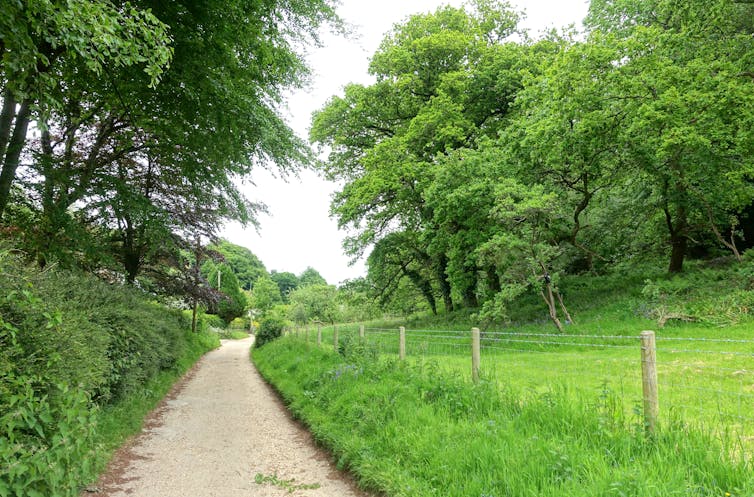
In these ritualised acts of love for a dying man, we see Hardy’s ideal of love. It is spiritual rather than carnal, but not a simple opposition. It is, rather, a dialectic between the ideal and the fleshy. The lovers “trouble each other’s souls”, but it is a yearning grounded in the material.
We see this when Winterborne dies, just hours after Grace’s desperate attempts to revive him, to keep him with her. Walking through the forest toward her father’s house, and toward her rueful husband, the world is changed. The trees mourn for Winterborne, weeping sap that is a phosphorescence, a milky substance that catches the weak light tenacious enough to penetrate the canopy. Giles has become “her wood-God, smeared with lichen”, the very milieu in which she moves.
The Woodlanders is as devastating as it is extraordinary in its beauty. One doesn’t so much read Hardy, in the sense of following the black marks upon the page, as experience the world he creates.![]()
Sophie Alexandra Frazer, Lecturer, the School of Liberal Arts, The University of Wollongong, University of Wollongong
This article is republished from The Conversation under a Creative Commons license. Read the original article.
‘Like blood, then turned into darkness’: how medieval manuscripts link lunar eclipses, volcanoes and climate change
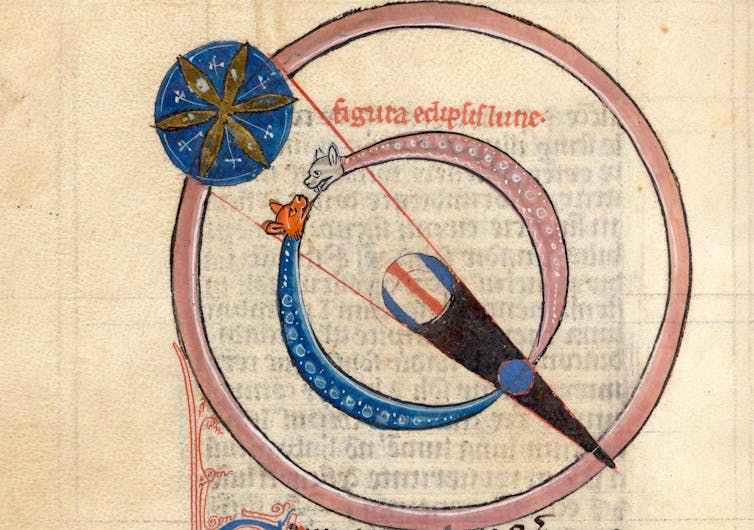
Before humans started heating the planet by burning fossil fuels in the 19th century, Earth had experienced centuries-long widespread cool period known as the Little Ice Age.
Scientists believe this cold spell may have been triggered, in part, by volcanic eruptions which made the atmosphere hazier, blocking some incoming sunlight.
Records of these eruptions are sparse, and much of our knowledge of them comes from the traces left behind in polar ice and tree rings, which are fragmentary and sometimes contradictory.
In a new study published in Nature, an international team of researchers led by Sébastien Guillet at the University of Geneva has found another way to learn about these historical eruptions: by studying descriptions of lunar eclipses in medieval manuscripts.
Dark Eclipses
The researchers compiled hundreds of records of lunar eclipses from across Europe, the Middle East, and Asia, documenting 187 eclipses between 1100 and 1300.
In particular, they searched for descriptions that provided information on the brightness and colour of the Moon during the eclipse. Most of these turned out to be from European monks or clerics, writing in Latin.
Based on these descriptions, the researchers ranked the colour and brightness of the Moon reported in each total eclipse. The brighter the eclipse, the clearer the atmosphere at the time: darker eclipses indicated a higher level of aerosol particles in the upper atmosphere – a marker of recent volcanic activity.

The next step was to put the eclipse data together with simulations of how aerosol particles behave in the atmosphere, modern satellite observations, and climatic evidence from historical tree ring records.
This allowed the researchers to estimate the timing of the culprit eruptions more precisely than from previous ice core records – and determine which eruptions reached the stratosphere and would be more likely to generate climatic cooling effects.
What Lunar Eclipses Tell Us About The State Of The Atmosphere
A total lunar eclipse is a beautiful sight. When the Sun, Earth and Moon align perfectly, our planet blocks direct sunlight from reaching the Moon’s surface.
However, Earth’s atmosphere bends sunlight around our planet. As a result, some sunlight reaches the Moon even during a total eclipse.
Earth’s atmosphere also scatters sunlight - acting as a giant colour filter. The bluer the light, the more it is scattered – which is why the sky is blue in the daytime, and why the Sun appears ruddy at dawn and dusk.
During a total lunar eclipse, the sunlight reaching the Moon has been filtered by Earth’s atmosphere, removing much of the blue and yellow light. The light that reaches the Moon is effectively the sum of all the dawns and all the dusks occurring at that time.
And the state of Earth’s atmosphere at that time controls just how much light is filtered.
How Volcanoes Affect Lunar Eclipses
If you’ve ever seen a sunset during a dust storm, or on a very smoky day, you know the extra particles clogging up the sky can produce deep, vibrant reds and oranges.
Imagine a total lunar eclipse occurring while wildfires rage overseas. The fires would pump smoke and dust into Earth’s atmosphere, making the Moon redder and darker during the eclipse.
Which brings us to the effect of volcanoes. The largest volcanic eruptions pump vast amounts of material into Earth’s stratosphere, where it can remain for many months.
The spectacular volcanic sunsets seen throughout Australia in the months following the Tongan volcanic eruption of January 2022 are a great example. And that material, once in the stratosphere, will spread around Earth.
What effect does this have on lunar eclipses? It turns out the brightness of the Moon during a lunar eclipse depends the amount of material in our stratosphere. In the months after a large eruption, any lunar eclipse would be markedly darker than normal.
How Volcanoes Affect The Climate
Volcanic eruptions can eject huge amounts of ash, sulphur dioxide, and other gases high into the atmosphere. Eruptions can cause either cooling or warming (both temporary). The effect depends on exactly what the volcano spews out, how high the plume reaches, and the volcano’s location.
Sulphur dioxide is particularly important. If it reaches the stratosphere, it reacts with water vapour to form a lingering veil of sulphate aerosols. These aerosols, along with the volcanic ash, block and scatter Solar radiation, often leading to cooling at the Earth’s surface.
Large volcanic eruptions, such as the 1991 Mount Pinatubo eruption in the Philippines and the infamous 1815 eruption of Tambora in Indonesia, slightly lowered global temperature in the years after the eruption. After Tambora, Europe and North America experienced a “year without a summer” in 1816.

On the other hand, water vapour and carbon dioxide from volcanic eruptions have a warming effect. It’s only small, as all present-day volcanic emissions produce less than 1% of the carbon dioxide released by human activities.
The Past And Future Of Volcanoes, Eclipses, And The Climate
Eyewitness accounts through historical reports and oral traditional knowledge are often overlooked in the study of volcanoes. However, the inclusion of broader sources of knowledge is incredibly valuable to help us understand past impacts of volcanic eruptions on people and the environment.
In this study, the combination of historical observations with ice records and climate reconstructions from tree rings has enabled more precise timing of those ancient eruptions. In turn, this has allowed us to better understand their potential impact on the climate during the European Middle Ages. Such information can help us to understand the role these eruptions may have played in the transition to the Little Ice Age.
In the future, volcanoes may have to work a little harder to create a “dark” eclipse. As the atmosphere warms, the altitude of the stratosphere will increase. As a result, it may take a bigger eruption to put significant amounts of aerosols into the upper layer where they will hang around to darken the Moon for future generations!![]()
Heather Handley, Associate Professor of Volcanology and Geoscience Communication, University of Twente and Adjunct Associate Professor, Monash University and Jonti Horner, Professor (Astrophysics), University of Southern Queensland
This article is republished from The Conversation under a Creative Commons license. Read the original article.
A ‘next-generation’ gamma-ray observatory is underway to probe the extreme Universe
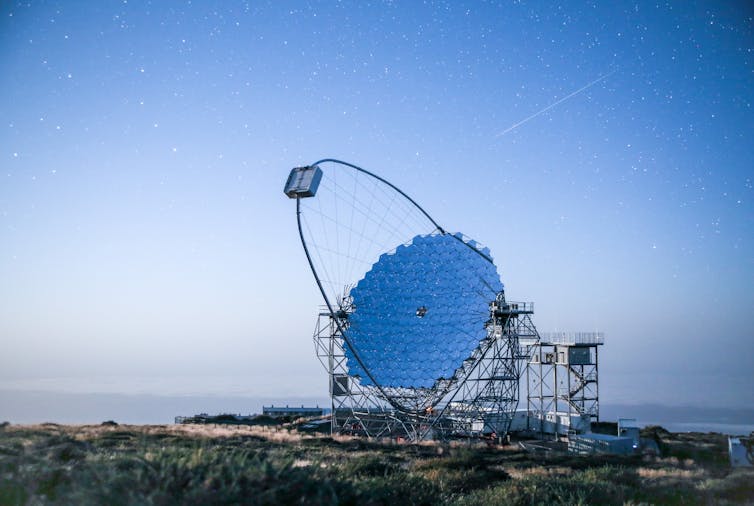
Long gone are the days when astronomers only studied the skies with simple optical telescopes. Today, unveiling the mysteries of the Universe involves ever-larger and more complex facilities that detect things like gravitational waves and different forms of electromagnetic radiation – the spectrum of energy that includes visible light and X-rays.
One particularly specialised branch of astronomy is gamma-ray astronomy. It does what is says on the tin, searching for gamma rays, which are the most energetic photons (light particles) on the electromagnetic spectrum. In fact, they are millions of times more energetic than the light we can see.
In astronomy, gamma rays are produced by some of the hottest, most energetic events in the universe, such as star explosions and black holes violently “feeding” on surrounding matter. While gamma rays are now linked to dozens of different types of sources, in many cases we still don’t know conclusively what kinds of energetic particles are creating these rays.
Excitingly, gamma-ray astronomy is due to get a massive leg up with a new facility. Once the globally distributed Cherenkov Telescope Array (CTA) is complete, it will view the gamma-ray sky with ten times more sensitivity than what’s currently possible.
With more than 60 telescopes, the CTA is expected to provide deep insight into the nature of dark matter – an invisible, hypothetical type of matter making up about 85% of the mass of the Universe. The array could also help solve one of the longest-running mysteries in astronomy: where cosmic ray particles (energetic nuclei and electrons in our galaxy and beyond) come from. Gamma rays are linked to these particles, providing a means to trace them.
Flashes From Outer Space
Gamma-ray astronomy was born in the early 1960s as space-based satellites were developed to look for energetic radiation from outer space.
NASA’s Fermi mission, launched in 2008 to a low-Earth orbit, has so far catalogued several thousand gamma-ray sources. The Fermi spacecraft continues to provide 24-hour live coverage of the sky, measuring gamma rays with energies reaching several 1,000 giga-electron volts in energy. That’s about one trillion times the energy of visible light.
To study gamma rays with even higher energies, we need to use ground-based methods. Although Earth’s atmosphere shields us against radiation from outer space, we can still detect the secondary effects of this shielding on the ground.
That’s because when a gamma ray interacts with Earth’s atmosphere, it sparks an electromagnetic cascade or “air shower” of more than a billion secondary particles. These particles are mostly electrons and their anti-matter partners, called positrons. These air showers contribute about 30-50% of the natural radiation we experience in our lives.
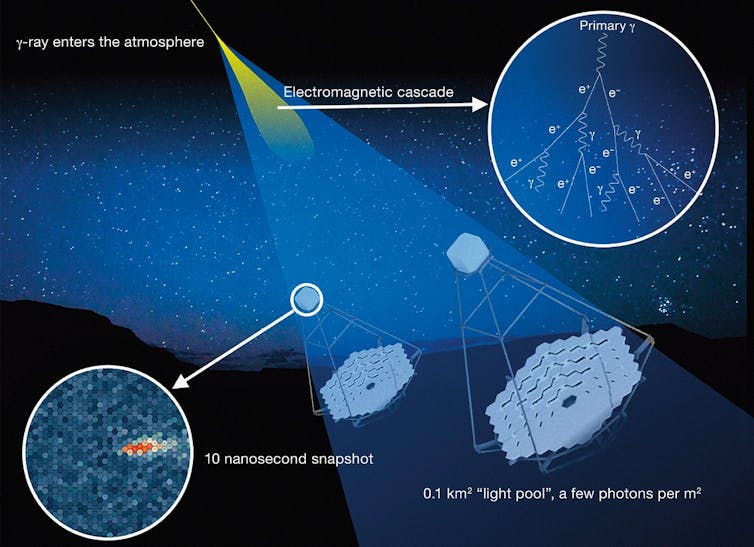
Making The Invisible Visible
While nothing can go faster than the speed of light in a vacuum, charged particles such as electrons and positrons (anti-electrons) can actually move faster than light when moving through air.
When this happens, a shockwave is created as a flash of blue and ultraviolet light. This flash, called Cherenkov radiation, is named after Soviet physicist Pavel Cherenkov who first detected the phenomenon in 1934 (and received the 1958 Nobel Prize in Physics for it alongside two colleagues). The blue glow of Cherenkov radiation can be seen in water cooling ponds surrounding nuclear power reactors.
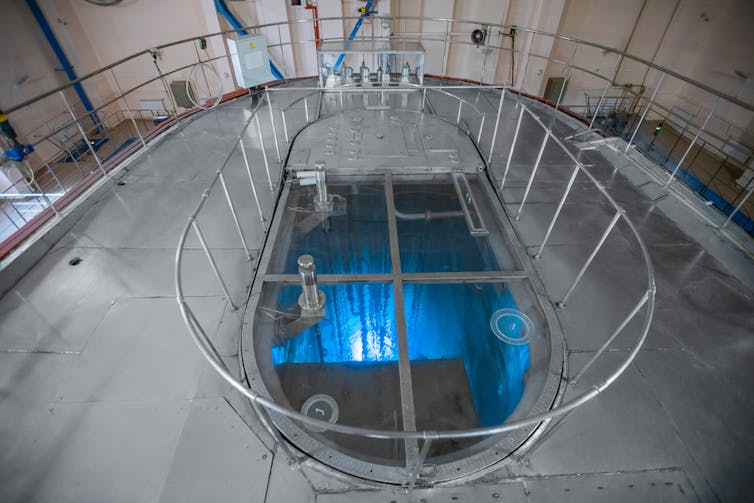
At ground level, telescopes with large mirrors and sensitive cameras can detect the Cherenkov light produced by a gamma ray striking our atmosphere. These cameras need just about ten nanoseconds to capture a Cherenkov flash against the bright background of starlight and moonlight.
The first Cherenkov telescopes were developed in the 1960s. After many variants, it was the Whipple Telescope in the United States that in 1989 discovered gamma-ray photons coming from the Crab Nebula.
This was the first time gamma rays with energies of more than 1,000 giga-electron volts (or 1 tera-electron-volt, TeV) were detected. Thus, tera-electron-volt gamma-ray astronomy was born.
Searching For The Extremes
Today, all three of the world’s best TeV gamma-ray facilities – HESS in Namibia, MAGIC in La Palma, Spain and VERITAS in Arizona – have discovered more than 200 TeV gamma-ray sources. These powerful rays are linked to cosmic regions of particle acceleration, such as pulsars, supernova remnants, massive star clusters, and supermassive black holes in the Milky Way and other galaxies.
HESS has shown our Milky Way galaxy is rich in TeV gamma-ray “light”, including in the centre of the galaxy.
TeV gamma-rays are also seen from mysterious gamma-ray bursts and other fleeting, transient events. These are now informing our understanding of the extreme conditions in which gamma rays are created.
The next-generation CTA will use the lessons learnt from HESS, VERITAS and MAGIC, by extending the number of telescopes deployed on the ground to over 60 telescopes. CTA will also use a combination of three different telescope sizes optimised for three gamma-ray energy bands, providing unprecedented performance and “sharpness”.
It will have arrays at two sites on the ground: one in Paranal, Chile (51 telescopes) in the Southern Hemisphere, and one in La Palma (13 telescopes) in the Northern Hemisphere.
CTA has attracted membership from more than 1,000 scientists, including Australian scientists from seven universities. It’s progressing well, with the first northern telescope already detecting gamma rays from the Crab Nebula and several gamma-ray flares from active galaxies powered by supermassive black holes.
Within a few years we expect to see the first southern telescopes also detecting gamma rays, yielding many more discoveries. With CTA, we will have new insights into where extreme particle acceleration is taking place in our Milky Way.![]()
Gavin Rowell, Professor in High Energy Astrophyics, University of Adelaide
This article is republished from The Conversation under a Creative Commons license. Read the original article.
Since the late 19th century, adventurous female ‘eclipse chasers’ have contributed to science in Australia
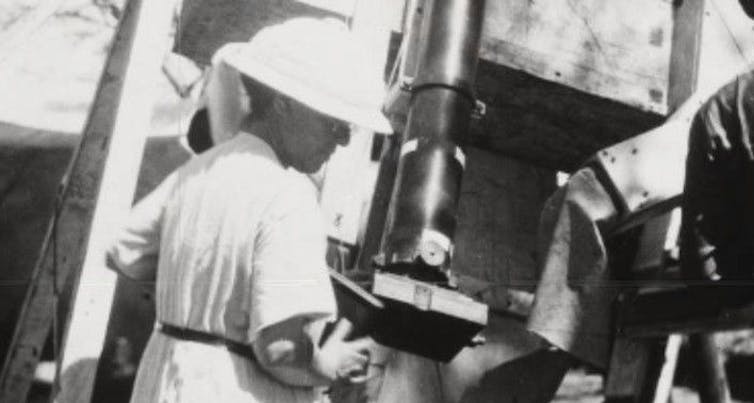
A total solar eclipse is a remarkable alignment of our Sun, Earth and the Moon, as the latter casts a perfect shadow across the former.
If you’re in the narrow path of the shadow of the Moon, at the moment of totality you are plunged into darkness. Stars and planets emerge in the sky, and the entire atmosphere changes. This immersion in a total solar eclipse is unforgettable.
As 21-year-old Australian Miriam Chisholm reported in 1922,
I looked up from the telescope just an instant before totality and thought I saw the Corona, a pale fringe around the Sun […] and then the light went out and we saw it in all its glory.

Historically, total solar eclipses were a unique opportunity to conduct scientific research about our Sun, the closest star. Using special instruments called spectroscopes, it was possible to decipher the chemical composition of the gases emitted by the Sun – but only during a total eclipse.
As I write in my recently co-authored book Eclipse Chasers, perhaps the best-known eclipse experiment was the proof of Albert Einstein’s general theory of relativity. In the early 20th century this theory could only be tested during the minutes of totality, requiring a clear sky around the covered Sun so you could photograph the stars.
Women In The Field
Accounts of well-known historic discoveries in astronomy might leave the impression this work was only undertaken by men. But in the late 19th and early 20th century, women in Australia already participated in astronomy as female “computers” and amateur astronomers. They were deeply involved in scientific expeditions to view total solar eclipses, but it was not easy.
The living conditions were rough, in tents with poor amenities open to the weather, and little or no privacy. The months needed to travel on solar eclipse expeditions meant leaving family responsibilities, one of the reasons it was unusual to find women in the field. When women did participate, they were usually the wives and daughters of male astronomers.

The first Australian woman whose total solar eclipse observations were officially reported was Annie Louisa Virginia Dodwell. She had a Bachelor of Science from the University of Adelaide and gained astronomy knowledge working with her husband George Dodwell, the South Australian Government Astronomer.
Together, they organised the Adelaide Observatory expedition to Bruny Island in Tasmania for the 1910 total solar eclipse. The party arrived by ship and for a month they camped in tents in almost constant rain to prepare. The eclipse day was clouded, nonetheless Annie successfully recorded the change in temperature, the only science of value that was achieved.
In the following years she presented talks about astronomy, published poems and participated in the inaugural International Astronomical Union assembly at the Vatican Observatory in 1922. She arranged the logistics for her husband’s total solar eclipse expedition later that year, during which she transcribed his observations to the newspapers.
Seasoned Eclipse Chasers In The 1920s
In 1922 an international team of astronomers, led by William Campbell, Director of Lick Observatory, and assisted by the Australian Navy, travelled to a remote location in Western Australia to confirm Einstein’s general theory of relativity during the September 21 total solar eclipse.
There were five women participating in this expedition: Elizabeth Campbell, Jean Chant with her daughter Elizabeth, Eleanor Adams and Mary Acworth Evershed.
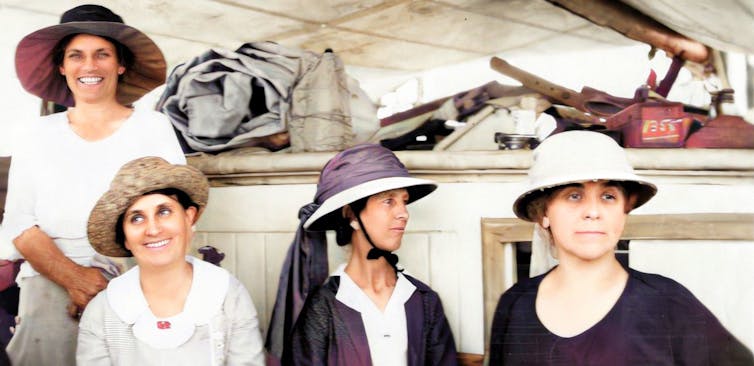
While they were the wives and daughter of respective male astronomers, each woman was a seasoned eclipse observer in her own right. They knew how to operate and use technical equipment and contributed substantially to reporting the scientific work.
Elizabeth Campbell organised the supplies and operated spectroscopic and photographic telescope equipment during the eclipse. Eleanor Adams worked with her husband on the large 12-metre eclipse camera. Jean Chant observed the shadow bands and changing brightness of the sky, and Elizabeth Chant operated a prism that polarised light.
Mary Acworth Evershed was an established expert in solar physics and worked alongside her husband, director of the Kodaikanal solar observatory in India. She photographed the spectra of the Sun’s corona. In 1896, on return to England, she published a pocket-sized Easy Guide to the Southern Stars with star maps of the constellations visible from the southern hemisphere.

A Long Drive Across The Country
On the other side of the continent, a very different eclipse expedition was organised by 21-year-old Miriam Chisholm with her school friend Frida Tindal. Chisholm’s father, Frank, drove them over 950 kilometres from Goulburn to southern Queensland.
They lost four days when their car was bogged in mud and almost didn’t make it to the line of totality. Thankfully, due to excellent time-keeping and navigation they had a successful eclipse. They drew the Sun’s corona, measured the temperature, observed how animals and birds became quiet and timed the shadow bands. Their report is descriptive, inspiring and filled with detailed observations. It is still a useful guide on how to make the most of a total solar eclipse experience.

On April 20 2023 a total solar eclipse will be visible from Exmouth in Western Australia. This is the first total solar eclipse in Australia since 2012, when thousands of people flocked to northern Queensland. I was there, and for two minutes and five seconds of totality, I experienced a beautiful “diamond ring” effect as the Moon totally covered the Sun, revealing its misty corona.
There are four more total solar eclipses in the next 17 years. Following in the footsteps of early 20th century eclipse chasers, large numbers of Australians will soon be able to share a total solar eclipse experience they will treasure, record and retell throughout their lives.![]()
Toner Stevenson, Honorary history affiliate in the School of Humanities, Faculty of Arts and Social Sciences, University of Sydney
This article is republished from The Conversation under a Creative Commons license. Read the original article.
Jupiter’s moons hide giant subsurface oceans – two upcoming missions are sending spacecraft to see if these moons could support life
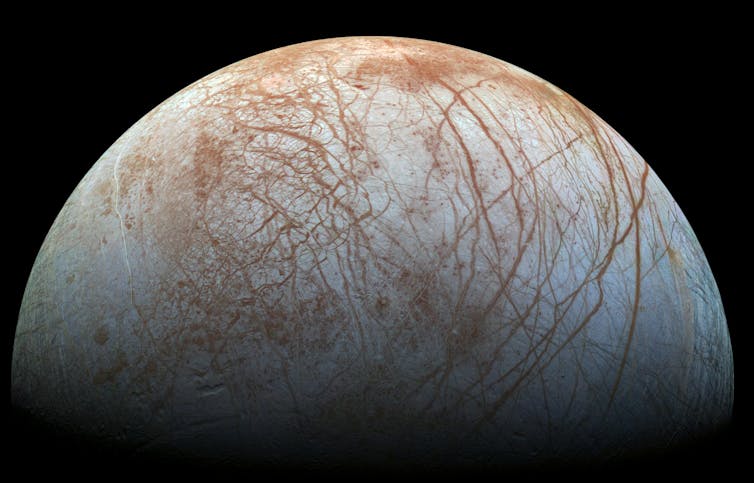
On April 13, 2023, the European Space Agency is scheduled to launch a rocket carrying a spacecraft destined for Jupiter. The Jupiter Icy Moons Explorer – or JUICE – will spend at least three years on Jupiter’s moons after it arrives in 2031. In October 2024, NASA is also planning to launch a robotic spacecraft named Europa Clipper to the Jovian moons, highlighting an increased interest in these distant, but fascinating, places in the solar system.
I’m a planetary scientist who studies the structure and evolution of solid planets and moons in the solar system.
There are many reasons my colleagues and I are looking forward to getting the data that JUICE and Europa Clipper will hopefully be sending back to Earth in the 2030s. But perhaps the most exciting information will have to do with water. Three of Jupiter’s moons – Europa, Ganymede and Callisto – are home to large, underground oceans of liquid water that could support life.
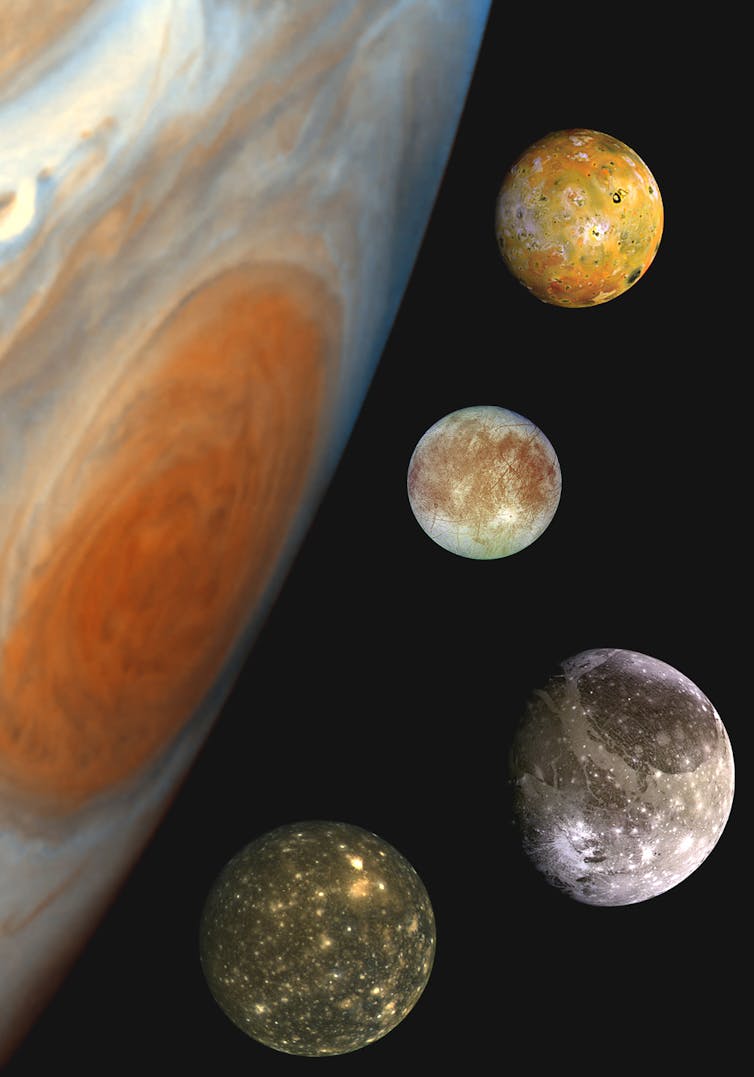
Meet Io, Europa, Ganymede And Callisto
Jupiter has dozens of moons. Four of them in particular are of interest to planetary scientists.
Io, Europa, Ganymede and Callisto are, like Earth’s Moon, relatively large, spherical complex worlds. Two previous NASA missions have sent spacecraft to orbit the Jupiter system and collected data on these moons. The Galileo mission orbited Jupiter from 1995 to 2003 and led to geological discoveries on all four large moons. The Juno mission is still orbiting Jupiter today and has provided scientists with an unprecedented view into Jupiter’s composition, structure and space environment.
These missions and other observations revealed that Io, the closest of the four to its host planet, is abuzz with geological activity, including lava lakes, volcanic eruptions and tectonically formed mountains. But it is not home to large amounts of water.
Europa, Ganymede and Callisto, in contrast, have icy landscapes. Europa’s surface is a frozen wonderland with a young but complex history, possibly including icy analogs of plate tectonics and volcanoes. Ganymede, the largest moon in the entire solar system, is bigger than Mercury and has its own magnetic field generated internally from a liquid metal core. Callisto appears somewhat inert compared to the others, but serves as a valuable time capsule of an ancient past that is no longer accessible on the youthful surfaces of Europa and Io.
Most exciting of all: Europa, Ganymede and Callisto all almost certainly possess underground oceans of liquid water.

Ocean Worlds
Europa, Ganymede and Callisto have chilly surfaces that are hundreds of degrees below zero. At these temperatures, ice behaves like solid rock.
But just like Earth, the deeper underground you go on these moons, the hotter it gets. Go down far enough and you eventually reach the temperature where ice melts into water. Exactly how far down this transition occurs on each of the moons is a subject of debate that scientists hope to resolve with JUICE and Europa Clipper. While the exact depths are still uncertain, scientists are confident that these oceans exist.
The best evidence of these oceans comes from Jupiter’s magnetic field. Saltwater is electrically conductive. So as these moons travel through Jupiter’s magnetic field, they generate a secondary, smaller magnetic field that signals to researchers the presence of an underground ocean. Using this technique, planetary scientists have been able to show that the three moons contain underground oceans. And these oceans are not small – Europa’s ocean alone might have more than double the water of all of Earth’s oceans combined.
An obvious and tantalizing next question is whether these oceans can support extraterrestrial life. Liquid water is an important piece of what makes for a habitable world, but far from the only requirement for life. Life also needs energy and certain chemical compounds in addition to water to flourish. Because these oceans are hidden beneath miles of solid ice, sunlight and photosynthesis are out. But it’s possible other sources could provide the needed ingredients.
On Europa, for example, the liquid water ocean overlays a rocky interior. That rocky seafloor could provide energy and chemicals through underwater volcanoes that could make Europa’s ocean habitable. But it is also possible that Europa’s ocean is a sterile, inhospitable place – scientists need more data to answer these questions.

Upcoming Missions From ESA And NASA
JUICE and Europa Clipper are set up to give scientists game-changing information about the potential habitability of Jupiter’s moons. While both missions will gather data on multiple moons, JUICE will spend time orbiting and focusing on Ganymede, and Europa Clipper will make dozens of close flybys of Europa.
Both of the spacecraft will carry a suite of scientific instruments built specifically to investigate the oceans. Onboard radar will allow JUICE and Europa Clipper to probe into the moons’ outer layers of solid ice. Radar could reveal any small pockets of liquid water in the ice, or, in the case of Europa, which has a thinner outer ice layer than Ganymede and Callisto, hopefully detect the larger ocean.
Magnetometers will also be on both missions. These tools will give scientists the opportunity to study the secondary magnetic fields produced by the interaction of conductive oceans with Jupiter’s field in great detail and will hopefully give researchers clues to salinity and volumes of the oceans.
Scientists will also observe small variations in the moons’ gravitational pulls by tracking subtle movements in both spacecrafts’ orbits, which could help determine if Europa’s seafloor has volcanoes that provide the needed energy and chemistry for the ocean to support life.
Finally, both craft will carry a host of cameras and light sensors that will provide unprecedented images of the geology and composition of the moons’ icy surfaces.
Maybe one day, a spacecraft will be able to drill through the miles of solid ice on Europa, Ganymede or Callisto and explore oceans directly. Until then, observations from spacecraft like JUICE and Europa Clipper are scientists’ best bet for learning about these ocean worlds.
When Galileo discovered these moons in 1609, they were the first objects known to directly orbit another planet. Their discovery was the final nail in the coffin of the theory that Earth – and humanity – resides at the center of the universe. Maybe these worlds have another humbling surprise in store.![]()
Mike Sori, Assistant Professor of Planetary Science, Purdue University
This article is republished from The Conversation under a Creative Commons license. Read the original article.
First near-complete sauropod dinosaur skull found in Australia hints at ancient links between continents
Stephen Poropat, Curtin UniversityIn May and June of 2018, Australia’s first near-complete skull of a sauropod – a group of long-tailed, long-necked, small-headed dinosaurs – was found on a sheep station northwest of Winton in Queensland.
I was part of the dig team from the Australian Age of Dinosaurs Museum that made the discovery, and subsequently had the privilege of leading the team that studied the skull. After years of work, our results are published today in Royal Society Open Science.
The skull belonged to a creature we have dubbed “Ann”: a member of the species Diamantinasaurus matildae which shows surprising similarities to fossils found halfway across the world, lending weight to the theory that dinosaurs once roamed between Australia and South America via an Antarctic land connection.
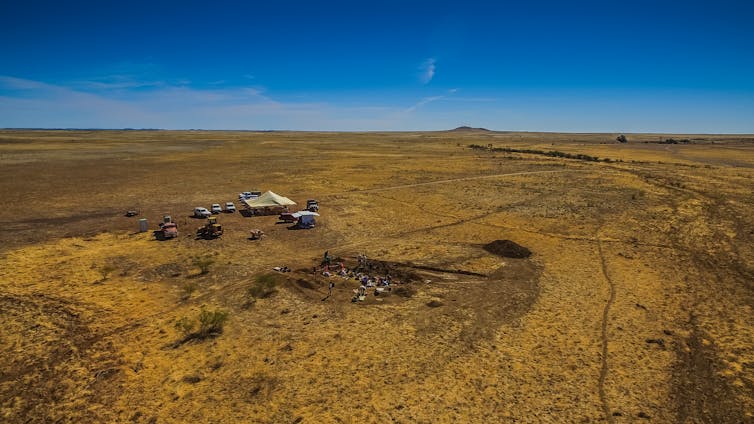
A Good Skull Is Hard To Find
The sauropod dinosaurs have been a source of lifelong fascination for me, and finding a sauropod skull was one of my childhood dreams. Sadly, the fossil record is biased towards preserving sauropod limbs, vertebrae and ribs, and heavily against skulls.
This makes sense when you consider the processes that act on an organism’s body after it dies, which palaeontologists call taphonomy.
Large, robust limb bones are resistant to decomposition, and if they are buried rapidly they might fossilise quite readily. Vertebrae and ribs comprise a significant proportion of a vertebrate skeleton, increasing their odds of preservation.
By contrast, sauropod skulls were relatively small, made up of many delicate bones that were only loosely held together by soft tissue, and seemingly easily detached from the end of the neck. They might also have been prime targets for carnivorous dinosaurs: the only previously described sauropod braincase from Australia preserves several bite marks from fierce theropods.
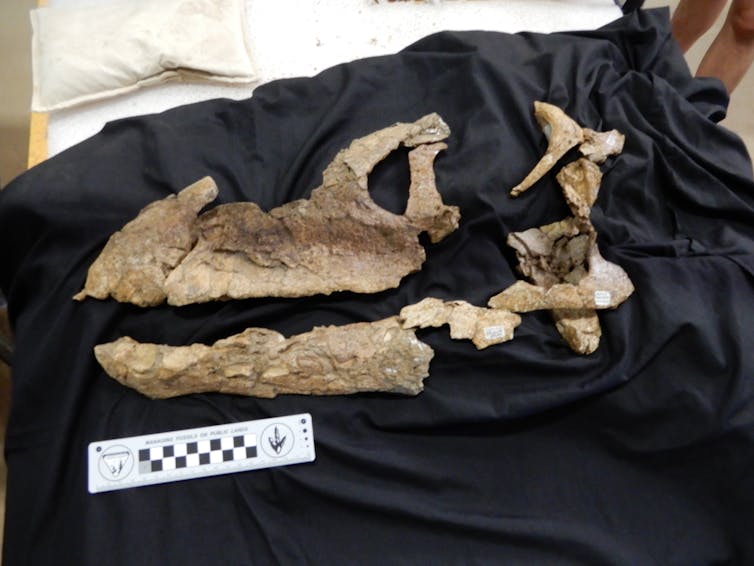
The bones of the skull were found around two metres beneath the surface, scattered over an area of about nine square metres. Much of the right side of the face is missing, but most of the left is present. Sadly, many of the bones show signs of distortion (presumably a result of post mortem scavenging or trampling), which makes physical reassembly of the skull a delicate process.
Modern Technology Recreates An Ancient Animal
This being the case, we set out to reconstruct the skull digitally. We CT scanned the bones at St Vincent’s Hospital in Melbourne. This enabled the internal features of each bone to be observed on a computer.
Inside one bone in the snout (which we also had scanned at the Australian Synchrotron), we found replacement teeth. It has long been known that sauropods, like crocodiles today, continually replaced their teeth throughout their lives.
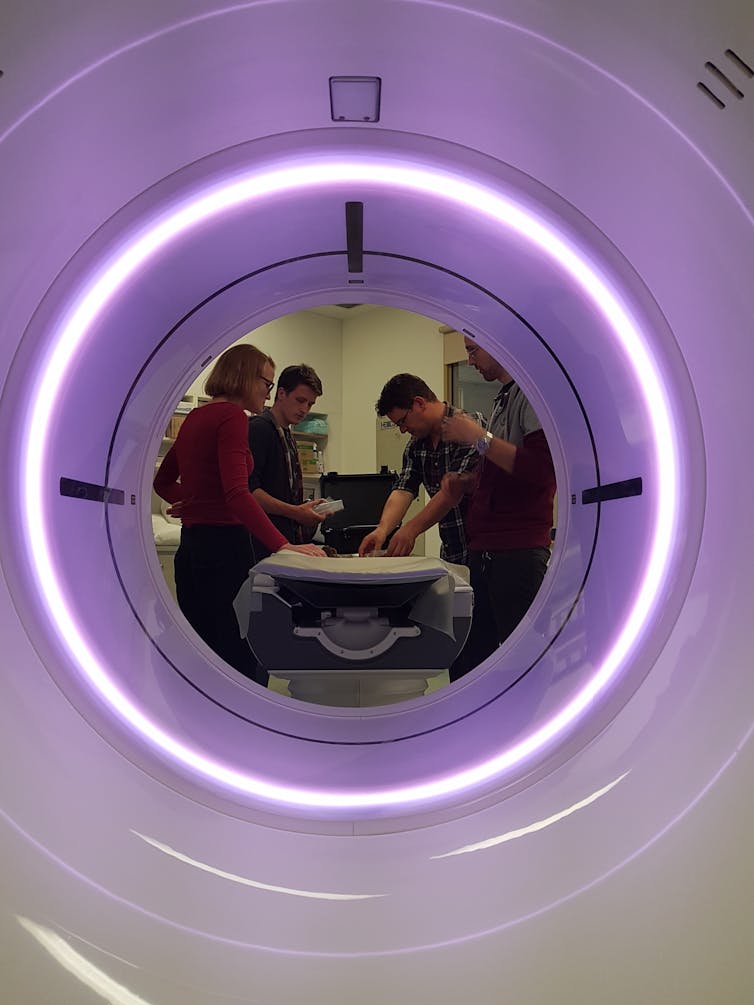
We also scanned all of the bones with a surface scanner, enabling detailed 3D models of each bone to be made on a computer. The skull could then be reassembled in a virtual space with no risk of damage to the fossils themselves.
The teeth in the new sauropod skull were very similar to those found at other sites in the Winton area. Comparisons with Australia’s only other fragmentary sauropod skull (also from Winton) revealed additional similarities.
Meet Diamantinasaurus Matildae
Our skull belongs to the species Diamantinasaurus matildae. Diamantinasaurus would have been about as long as a tennis court, as tall as basketball ring at the shoulder, and weighed ~25 tonnes – about as much as two fire engines.
Diamantinasaurus occupies a low branch on the family tree of a group of sauropods called titanosaurs. Other members of the titanosaur group (from higher branches on their family tree) include the largest land animals that ever lived, such as Patagotitan and Argentinosaurus, which exceeded 30 metres in length. Titanosaurs were the only sauropods to live right until the end of the Cretaceous Period (66 million years ago), when the age of dinosaurs came to a close.
Diamantinasaurus has a rounded snout, typical of medium- to high-level browsing sauropods. Its teeth are robustly constructed, but those from other sites show little sign of wear by soil or grit, reinforcing the idea Diamantinasaurus preferred to feed some distance above ground level.

Only two replacement teeth are present in each tooth socket, implying that Diamantinasaurus replaced its teeth relatively slowly. And finally, the teeth are restricted to the front of the snout, meaning that Diamantinasaurus, like all other sauropods, did not chew its food.
Family Resemblances
We compared our sauropod skull with others from around the world. The most similar skull was that of Sarmientosaurus musacchioi, which lived in southern South America. Diamantinasaurus and Sarmientosaurus lived at around the same time (about 95 million years ago), and at around the same latitude (50°S).
We had previously hypothesised that these two sauropods were close relatives, albeit on the basis of limited evidence. The new skull shores up that idea in a big way: bone for bone, the skulls of Diamantinasaurus and Sarmientosaurus are extremely similar. This might seem strange, given the great physical distance between South America and Australia today. However, back then each of those continents retained a lingering land connection with Antarctica.
Sauropods seemingly preferred warmer climates at low to medium latitudes. However, 95 million years ago the climate was extremely warm, even by the warm standards of the Cretaceous. With polar latitudes more amenable for sauropods, these scaly behemoths – and other landlubbing animals – could trundle through lush forests at the bottom of the world between South America and Antarctica.
It is a privilege to be able to finally put a face to the name Diamantinasaurus matildae. Future discoveries will hopefully help cement its status as one of the most completely understood titanosaurs worldwide.![]()
Stephen Poropat, Research associate, Curtin University
This article is republished from The Conversation under a Creative Commons license. Read the original article.
How the world’s oldest known meteorite impact structure changed the chemistry of Earth’s crust
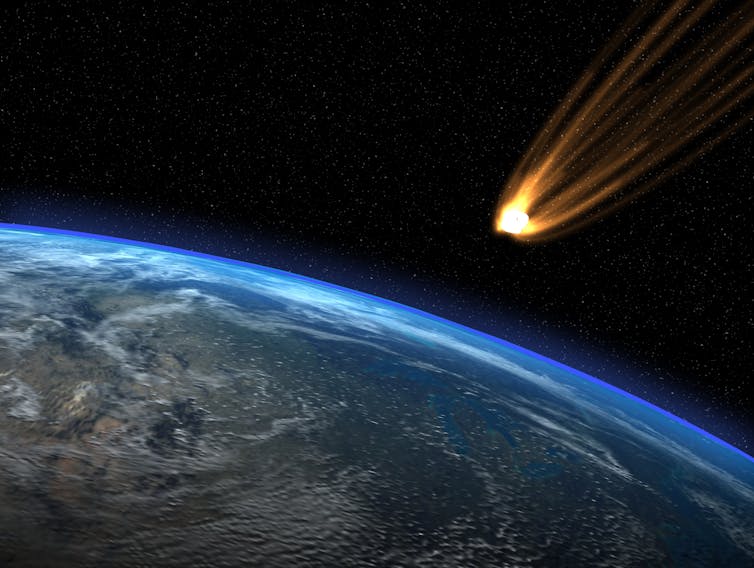
Meteorite impacts can be cataclysmic events in the history of a planet, melting rock, changing atmospheric chemistry, and wreaking general havoc.
However, impacts may also have created Earth’s continents, supported ecological niches that kick-started life, and even developed metal ores.
In a new study published in Earth and Planetary Science Letters, we examined what’s left of the world’s oldest known impact crater: the 2.29 billion-year-old site at Yarrabubba in Western Australia.
We found evidence hot water circulated in fractures in the rock after the impact, possibly because the impact melted some of the ice that covered much of the planet at that time. Hot water in fractured rock may have provided a niche for early life-forms, and its presence also has implications for our understanding of how deposits of metal ore form in Earth’s crust.
Space Rocks Have Been Key Players In Earth’s History
Meteorite impacts appear to come and go in a 200 million year cycle over the course of Earth’s history.
Across the planet, about 200 major impact sites have been documented. The oldest of these is at Yarrabubba in Western Australia.
More than two billion years ago, a space rock slammed into the continental crust at Yarrabubba. This ancient crust had formed some 2.65 billion years before the present and was intensely changed by the impact.
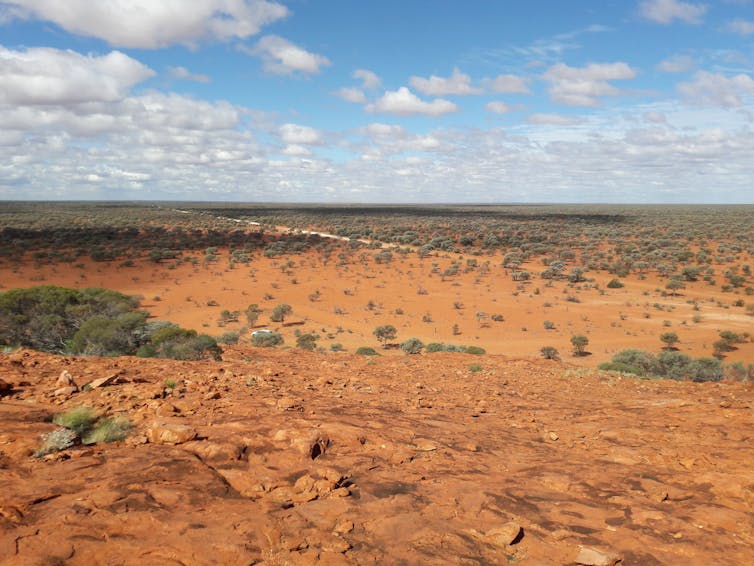
The result was a crater with an estimated diameter of about 70km, which is nowadays eroded to a mere pimple. The shock of the impact was so great it even melted parts of the surrounding crust, which is made of granite – a common type of rock you might see in fancy kitchen bench tops.
In our new research, we took a close look at what the impact did to the chemistry of the crust. The chemical effects of meteorite impacts are not often explored, but they may be important in understanding the full range of environmental consequences.
CSI: Rock
Geologists forensically study minerals trapped in rocks to investigate what happens inside Earth, in much the same way that crime scene investigators study materials at a scene to determine their origins.
One kind of clue geologists are particularly keen on is isotopes. These are different forms of a particular element.
Different isotopes of an element all behave the same in chemical reactions, but they contain different numbers of neutrons inside the atom. This makes some isotopes unstable: over time, they will radioactively decay into different elements.
We can make use of this radioactive decay. For example, we can determine the age of the Yarrabubba crater and its surrounding rocks by measuring the ratio of uranium to lead isotopes, which acts like a stopwatch counting the time since a mineral has grown.
This tells us the age because uranium decays into lead over time, and we know the rate at which this decay happens. So measuring the isotopes of both elements in a sample shows us how much decay has happened, allowing us to calculate the mineral’s age.
Another way to use isotopes is in certain minerals where these ratios remain fixed over time and do not change. The isotopic signatures then become a powerful tool to track where material has come from, in much the same way that a person’s surname can give a clue to their family’s origin.
Messengers In A Crystal Bottle
We analysed the isotopic compositions of lead in mineral grains from the crust surrounding the crater at Yarrabubba.
We looked at crystals of feldspar, typically the pink-coloured grains in our granite bench top example, as these naturally contain lead but no uranium.
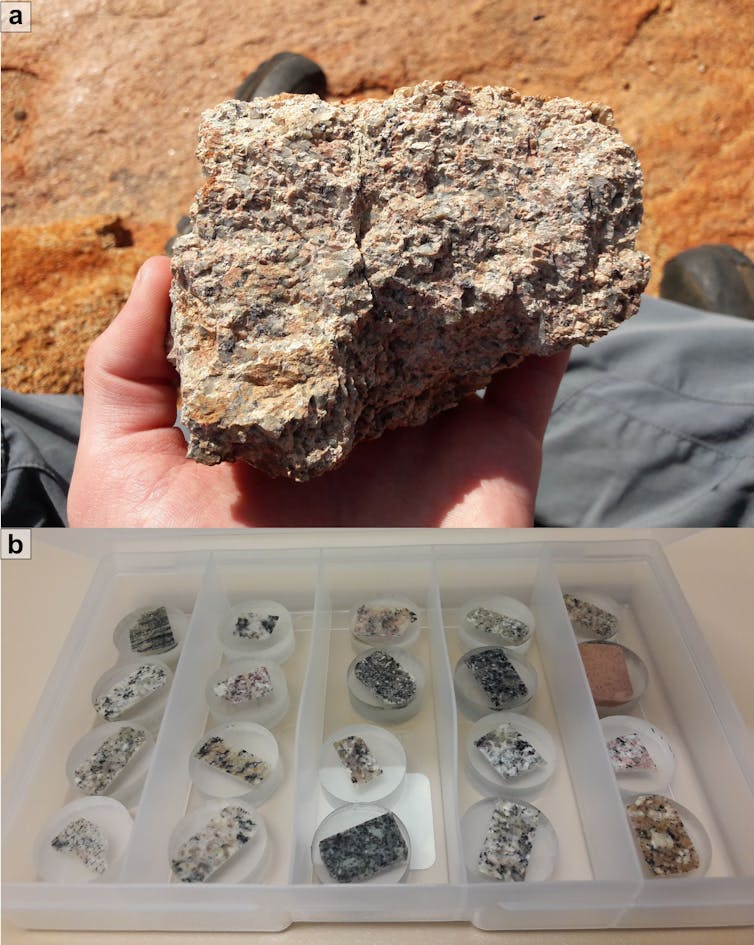
This is important as the lead isotopes trapped within this mineral reflect the composition of the liquid from which the mineral originally grew.
We found a wide range of lead isotopic compositions, as well as new uranium-bearing minerals that grew within fractures in the grains at the time of the impact, starting new stopwatches.
The only plausible explanation for these modifications of isotopic signatures is that the impact must have generated networks of circulating hot water that infiltrated damage zones throughout the rock. In the case of Yarrabubba, the water may well have come from the meteor hitting an ice sheet, as ice covered much of the world 2.29 billion years ago.
The Impacts Of Impacts
Our documentation of the circulation of heated water produced by an impact is important from two very different perspectives.
First, hot fluid systems may have nurtured early life. Impacts were much larger and more frequent on the early Earth, and in some ways these violent and disruptive events would have stood in the way of complex life evolving.
Yet researchers have demonstrated that microbial communities can blossom where heat, water and nutrients meet pulverised rock: exactly the conditions impacts can produce. Some have even suggested impacts are a fundamental part of planetary evolution and necessary for creating a habitable planet.
Second, seeing how impact-generated hot water can transport metals can help us understand how ore deposits are created. Some of the first sources of metal for early humans were meteorites, from which they chipped away bits of metal for tools and jewellery.
Yet impact sites can contain larger concentrations of metals than just from the meteorite itself, which is often vaporised. Ore deposits typically form when there is a geological structure, for example a fracture within a rock, into which metals can be moved by fluids.
Impacts clearly shatter the crust, but they also provide circulating hot water. If there is metal present in the target rocks to begin with, this hot water may carry and concentrate these metals into a richer deposit.![]()
Andreas Zametzer, PhD Candidate at Timescales of Mineral Systems Group, Curtin University and Chris Kirkland, Professor of Geochronology, Curtin University
This article is republished from The Conversation under a Creative Commons license. Read the original article.
Book Of The Month - April 2023: Poor Man's Orange by Ruth Park
Poor Man's Orange is a novel by New Zealand born Australian author Ruth Park. Published in 1949, the book is the sequel to The Harp in the South (1948) and continues the story of the Darcy family, living in the Surry Hills area of Sydney.
The title Poor Man's Orange refers to having to make do with second best.
The story has its beginnings in the awkward courtship of dreamily innocent Margaret Kilker and unwilling hero Hugh Darcy in the dusty country towns of rural Australia. After their marriage, the couple moves to Sydney and raises a family amid the brothels, grog shops and run-down boarding houses of inner-city Surry Hills, where money is scarce and life is not easy. Here their daughter Roie grows up all too quickly, while younger daughter Dolour tries to make sense of a world in which loss and love go hand in hand. Filled with beautifully drawn characters that will make you laugh as much as cry, Ruth Park's Australian classics take you from the barren landscapes of the outback to the colourful slums of Sydney with convincing depth, careful detail and great heart.
Continuing the history of the Irish Darcys begun in Missus and continued in The Harp in the South, this third instalment of a trilogy reacquaints readers with the vicissitudes of slum life in a Sydney suburb. An unforgettable family and a cast of unforgettable characters enliven a story that is sometimes tragic but often humorous in a time of poverty and destitution, hope and promise.
Covid Cases Increasing In Aged Care Homes
- reimburse providers for leave paid to directly permanent or casual aged care workers
- cover employees who cannot work due to Covid-19 and have no other leave entitlements.
Go-It-Alone Pharmacists’ Prescribing Not The Answer To GP Shortages: AMA
StewartBrown Aged Care Financial Performance Survey (December 2022)
AMA (NSW) Urges Newly Elected Labor Government To Step Up To Healthcare Challenges
Australia Post Keeps The Torch Burning For Legacy



Expanded Access To Subsidised Oral Antiviral Paxlovid And Other COVID-19 Supports

Don’t Lock Vulnerable Older Australians Out Of Banking: COTA
Priority Groups Urged To Book In For Free Influenza Vaccine
- Stay up to date with your recommended flu and COVID-19 vaccinations
- Stay home if you have cold or flu symptoms and get tested
- Wear a mask in crowded, indoor places
- Get together outdoors or in large, well-ventilated spaces with open doors and windows
- Wash or sanitise your hands often
- Talk with your doctor now if you are at higher risk of severe illness from COVID-19 or flu to make a plan about what to do if you get sick, including what test to take, and discussing if you are eligible for antiviral medicines
- Don’t visit people who are at higher risk of severe illness if you have cold or flu symptoms or have tested positive to COVID-19 or flu.
- Take a rapid antigen test to test for COVID-19 before visiting vulnerable loved ones.
Flu Season 2023: What You Need To Know
- Bed rest.
- Drinking plenty of fluids.
- Over-the-counter medication, taken only as directed to help relieve symptoms.
Australia Post At The Crossroads
'Nature Prescriptions' Can Improve Physical And Mental Health: Study
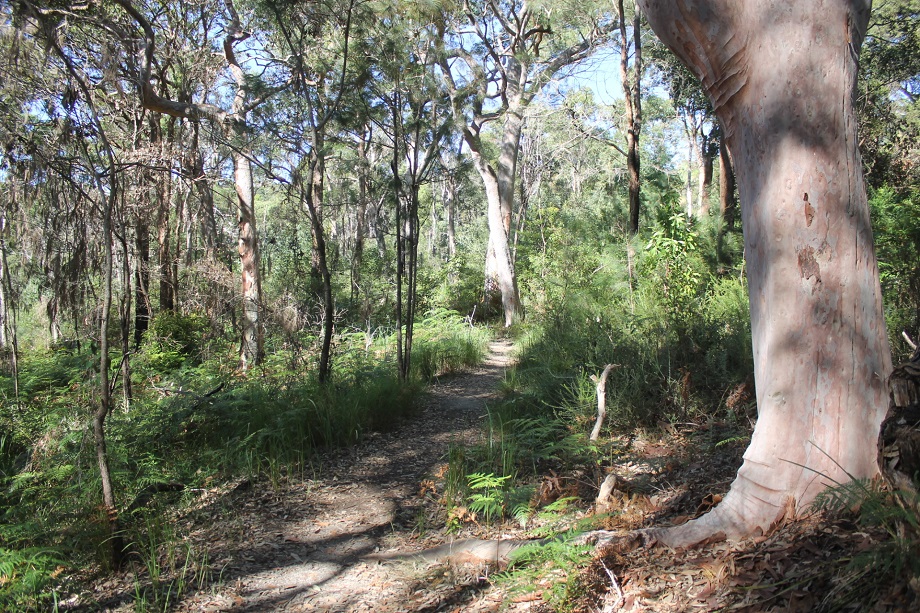
How can I help my teen quit vaping?

You’re driving your teen home from school when they open up to you about their vaping. What started off as an occasional puff of an e-cigarette has turned into something more serious.
“I was curious and just wanted to try it,” they say. “All my friends were doing it and I wanted to do it too.”
But now they are vaping more often and getting anxious when they can’t access their vape. They want to quit but they aren’t sure how.
Here are some practical tips to help your teen stop vaping.
I Don’t Want To Lecture. But What Can I Do?
You’ve seen the news and you know e-cigarettes are harmful.
You might want to reprimand your child, or say “If your friends jumped off a cliff, would you do it?”. But you know criticism and lecturing don’t work. So, what do you do?
First, acknowledge it’s a great sign your teen wants to quit and is asking for help. We know motivation is critical to behaviour change.
But if you’re a parent of a teen who isn’t ready to try quitting, you need to work on boosting their motivation to quit first.
Boost Their Motivation To Quit
Talk with your teen about their vaping. Ask them what led to them wanting to quit and their reasons for wanting to give up. You can both use those reasons to help motivate quitting.
Use that knowledge to balance the benefits of quitting with the costs of not quitting. You can do this using a practical exercise.
Discuss potential barriers that might get in the way of quitting. What is your teen worried will happen if they try to quit? Have they been using vaping to relax and are worried they will become more anxious? Are they worried about losing friends? Do they think they won’t be able to quit?
Once you have an idea of the costs and benefits your child perceives, you’ll be in a better position to help them. For example, if they have been using vapes to relax, help them find other ways of reducing stress.
It might also help to tap into their values and use these to highlight that their vaping isn’t aligned with who they want to be.
For example, if they are skipping class to vape but are usually a diligent student, discuss this discrepancy and the longer-term impact of their dependence (for example, not getting into uni).
Set A Goal
Once your child is motivated, it’s time to set a goal to quit. Work with your teen to develop a SMART goal that is Specific, Measurable, Achievable, Relevant, with a Timeframe.
That goal might be to quit vaping by a certain date. But your teen may need to set smaller goals first. This might mean “This week, I will only vape on Monday, Wednesday and Friday.”
Once achieved, these goals can be made more challenging until gradually, your teen has succeeded in quitting vaping.
Make sure you reward your teen or they reward themselves for achieving their goals, even the small ones.
Next, if your teen has been using nicotine vapes – and many vapes contain nicotine even if they are not labelled as such – they may be addicted.
Contact the Quitline (details below) or see your GP to discuss support for your teen. They may need extra help weaning off e-cigarettes. A nicotine tapering plan may help.
How To Handle The Setbacks
Your teen will likely have some trouble quitting. Remember those barriers from earlier? Create coping plans. What will your teen do if they are feeling stressed and want to reach for their vape? What will your teen do if they are at a party and are offered a puff?
These strategies may help your teen:
keeping busy by doing puzzles, drawing, or playing games on the phone
changing locations. Encourage your teen to get out and about. They can go to the gym, outside for a walk, or head to the footy
reminding your teen about the reasons they want to quit and the costs of not quitting
helping them practise saying “no” to a vape
having snacks or gum they can grab when they have the urge to vape.
Show Compassion
There are many reasons people vape. Among them is a vaping industry, with deep pockets, that’s expert at manipulating young people to start and continue vaping.
So be compassionate and try not to judge your teen. Lecturing, criticising and being punitive won’t help them quit. Position yourself as someone they can rely on.
More support and information about quitting vaping is available from Lung Foundation Australia and Quitline (ph: 13 7848).![]()
Michelle Jongenelis, Associate Professor, Melbourne Centre for Behaviour Change, The University of Melbourne
This article is republished from The Conversation under a Creative Commons license. Read the original article.
Fasting Diet Reduces Risk Markers Of Type 2 Diabetes
Predatory Dinosaurs Such As T. Rex Sported Lizard-Like Lips
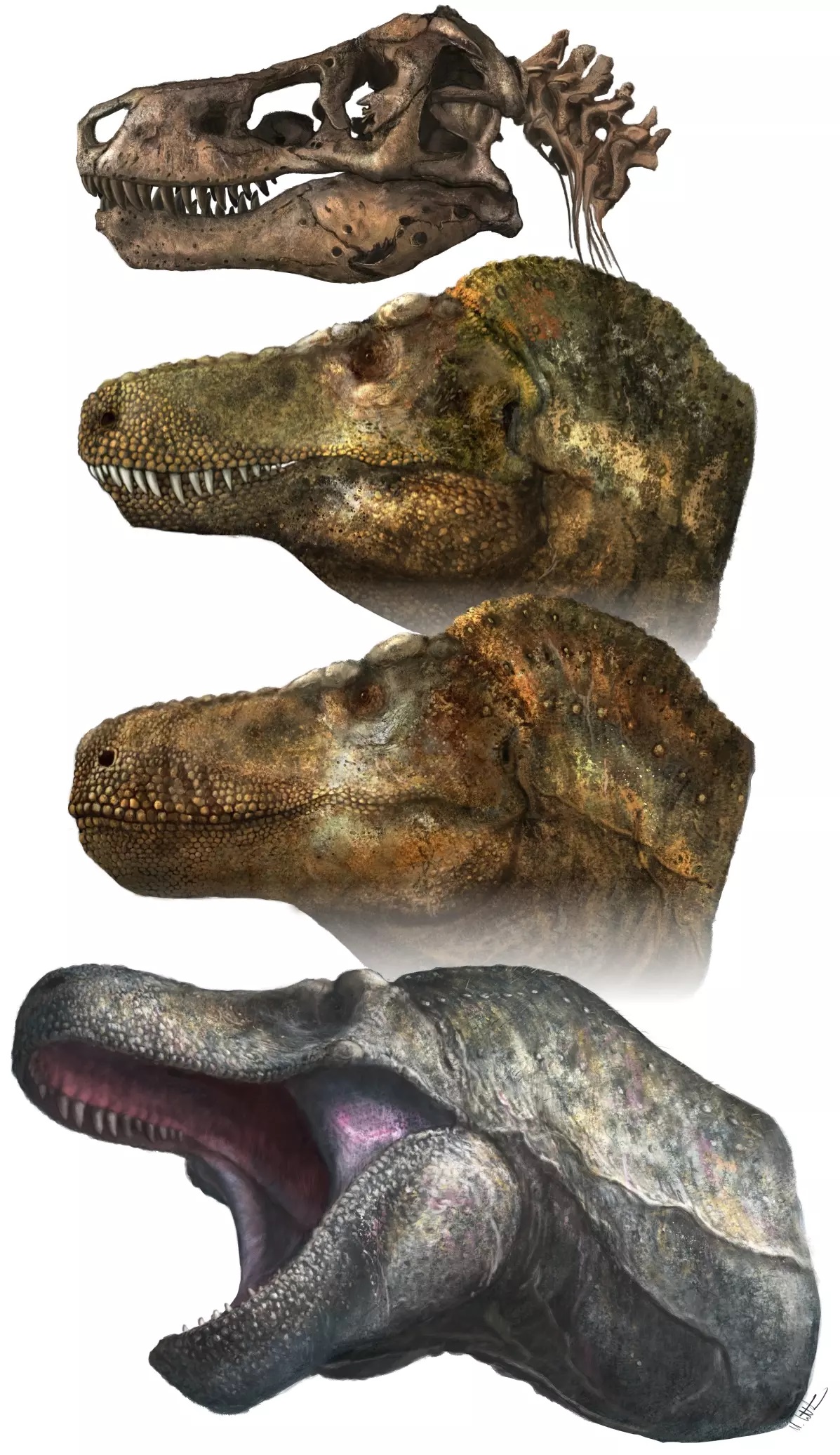
Corporate social responsibility: Why family businesses get more bang for their buck than non-family firms

When it comes to turning corporate social responsibility (CSR) into profit, research shows family businesses have the advantage. CSR is a form of self-regulation where businesses make concerted efforts to be socially and ethically accountable to themselves, their stakeholders and the public.
In our recent study on S&P 500 firms’ CSR strategies, we found that family businesses get more bang for their buck. While family owners can sometimes be bad for business — the desire for control can result in family-owned businesses under-investing in things like innovation and diversification — they can also be beneficial.
Family owners tend to focus on the long term because, unlike CEOs in non-family firms, they want their firm to benefit their children and grandchildren.
Because family owners think in terms of generations, they invest more in enhancing their company’s reputation and building deeper connections with employees, suppliers and communities.
Family firms are also able to dedicate the time needed for high quality CSR strategies, unlike non-family firms that might neglect CSR because of short-tenured leadership and concerns about quarterly earnings.
Symbolic CSR Distracts From Problems
There are two types of CSR strategies: symbolic and substantive. Symbolic CSR strategies are low-cost actions designed to garner media attention without solving underlying problems. They are reactive, self-serving and distract from current problems.
An extreme and tragic — but powerful — example of symbolic CSR comes from a study on a Malaysian forestry firm’s operations in Guyana. The researchers found that the company’s Forest Stewardship Council certification diverted attention away from the systemic rape of local women by employees of the company. It took years for global environmental groups and agencies to see through the company’s CSR deception and believe the accusations.

While the initial positive effect of symbolic CSR can distract from a company’s wrongdoings, the impact usually wears off once stakeholders see through its facade. This is what happened during BP’s massive Deepwater Horizon Oil Spill in the Gulf of Mexico in 2010.
Initially, stakeholders were impressed with BP’s reaction to the crisis, but once they realized the company had cut back on environmental protections — including equipment meant to prevent oil spills — they quickly withdrew their support.
Substantive CSR Solves Problems
Substantive CSR, in contrast to symbolic CSR, is long term and actually addresses pressing societal problems. It is backed by meaningful investment and implementation. Organizations engaged in substantive CSR will change processes, suppliers and their entire value chains.
Outdoor clothing company Patagonia is an example of an organization pursuing substantive CSR. On its website, Patagonia discusses climate change and the global rise of CO2 emissions. Such proclamations might seem symbolic, but Patagonia addresses environmental issues substantively and has committed to only using renewable energy across all its facilities by 2025.
Substantive CSR can detract from financial performance in the short term because it takes time and money to implement, but it can eventually lift the firm’s reputation and excite stakeholders about its products and services. A favourable reputation, in turn, improves customer loyalty, sales and profits.

CSR Has Long-Term Benefits
Our research found that CSR strategies at family-owned businesses significantly improved firm performance. This benefit wasn’t felt immediately, but in the third year after the initial CSR investment. Positive benefits endured throughout the fourth and fifth years of the strategies being implemented.
Our analysis found that a 20 per cent increase in substantive CSR improved the annual return on assets (a financial ratio that measures a company’s profitability in relation to its assets) to 5.78 per cent from 4.30 per cent within three years. This change equalled a 34 per cent return on assets increase.
When it came to stock market performance (the annual change in the price of the company’s shares on the stock market), the increase was 15.5 per cent.
Non-family firms, on average, did not benefit financially from substantive CSR. Their inability to sustain investments across CEOs and time might have reduced stakeholders’ enthusiasm in the company’s CSR efforts.
Non-family firms must work harder to convince stakeholders their intentions are real and sustainable before they are able to reap above-average financial benefits from substantive CSR.
CSR Has Short-Term Benefits
Family-owned businesses also benefited more than non-family firms when it came to using symbolic CSR strategies. We found that symbolic CSR improved firm performance immediately for family firms.
A 20 per cent increase in symbolic CSR increased their average return on assets within one year to 5.74 per cent from 4.30 per cent — an overall increase of 33 per cent. For stock market performance, the increase in the price of the company’s shares was 5.1 per cent.
Their favourable reputations and relationships with customers, suppliers and the local community gave family-owned firms a buffer if things went wrong.
In the event of a scandal — or a symbolic CSR strategy being exposed as surface-level and insufficient — stakeholders were more likely to trust family owners to address underlying issues and convert their symbolic claims into substantive actions.
Similar investments in symbolic CSR among non-family firms helped them keep up with peers, but not get ahead. Stakeholders were simply more skeptical of non-family firms’ symbolic CSR activities.
Though the average non-family firm may not see significant gains from CSR investments, some do. By building credibility around long-term CSR commitments, more businesses could overcome stakeholders’ skepticism and gain more bang for their CSR buck.
Profitable In More Than One Way
Research shows that the older generations of family business owners often under-invested in CSR. This has the potential to lead to considerable conflict with younger generations because for many millennials and Gen Zs, the environment, community and society can matter as much — or more — than profit.
Our research shows that investing in CSR can be about reaping financial gain while also making societal contributions. Aligning people, the planet and profits is not only worthwhile and laudable — it might also help the next generation identify more strongly with the family business and motivate them to become responsible owners for another generation.![]()
Peter Jaskiewicz, Professor and University Research Chair in Enduring Entrepreneurship, Academic Director Family Enterprise Legacy Institute, L’Université d’Ottawa/University of Ottawa; James G Combs, Della Phillips Martha Schenck Chair of American Private Enterprise, University of Central Florida, and Katrina Barclay, Executive Manager, Telfer Family Enterprise Legacy Institute (FELI), L’Université d’Ottawa/University of Ottawa
This article is republished from The Conversation under a Creative Commons license. Read the original article.
New Findings That Map The Universe's Cosmic Growth Support Einstein's Theory Of Gravity
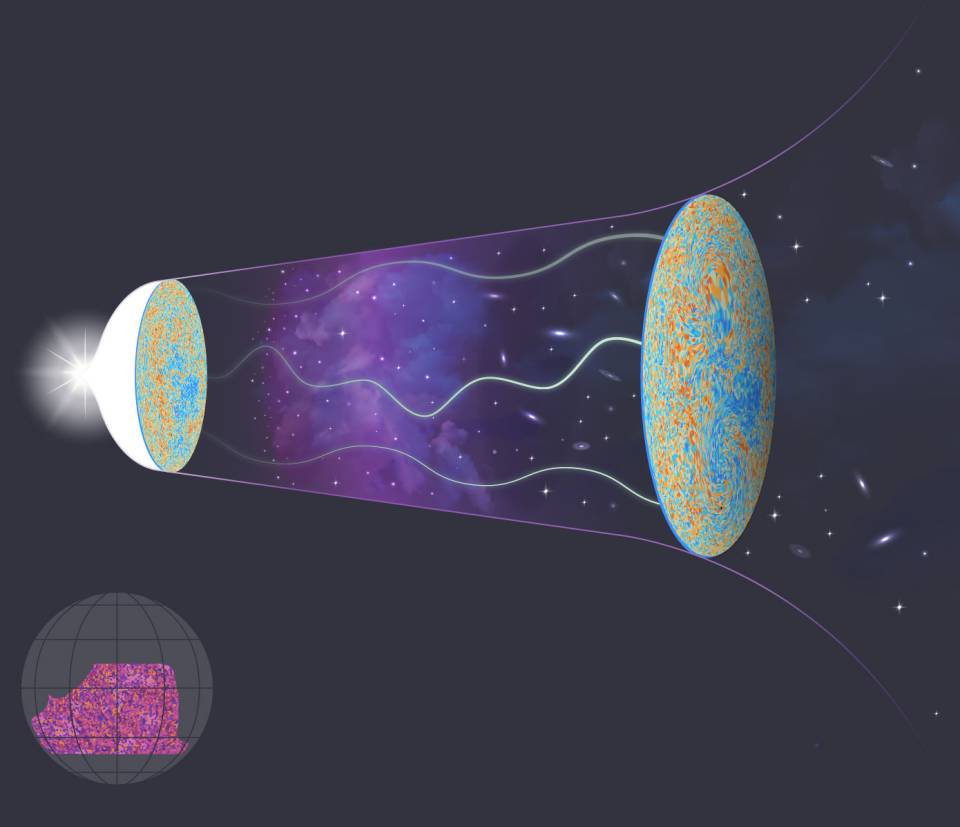
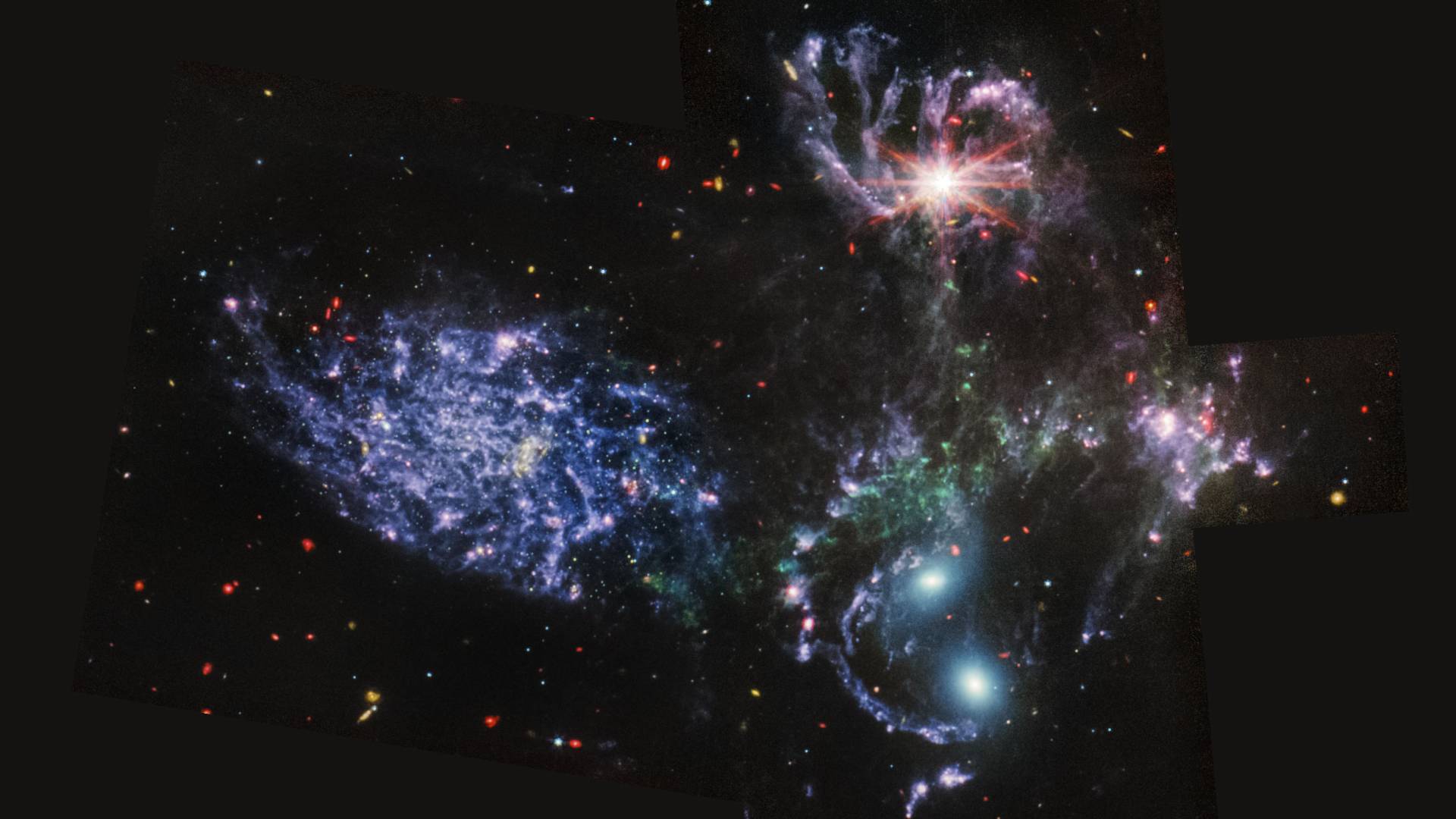
This Elephant's Self-Taught Banana Peeling Offers Glimpse Of Elephants' Broader Abilities
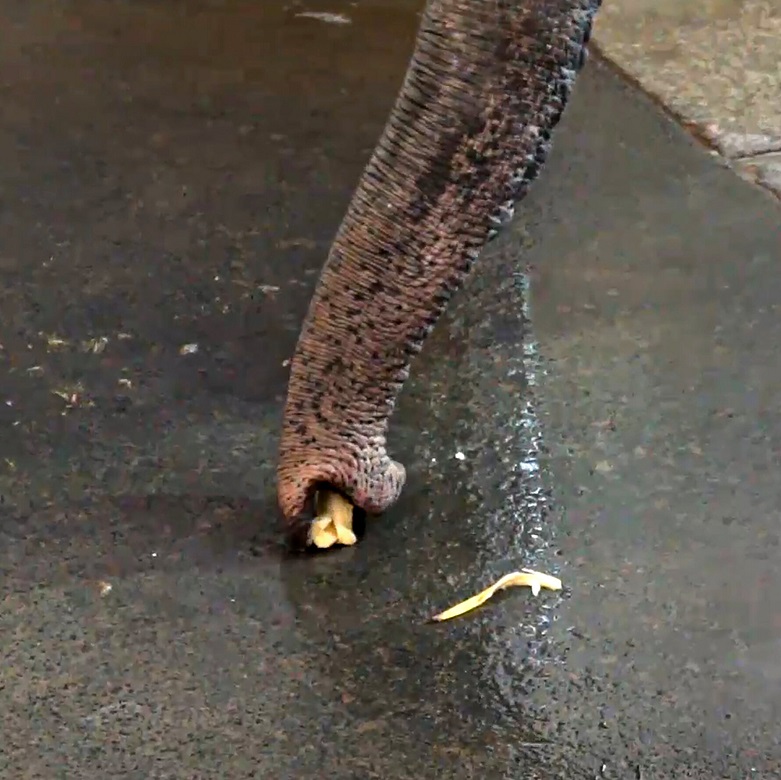 Elephants like to eat bananas, but they don't usually peel them first in the way humans do. A new report in the journal Current Biology on April 10, however, shows that one very special Asian elephant named Pang Pha picked up banana peeling all on her own while living at the Berlin Zoo. She reserves it for yellow-brown bananas, first breaking the banana before shaking out and collecting the pulp, leaving the thick peel behind.
Elephants like to eat bananas, but they don't usually peel them first in the way humans do. A new report in the journal Current Biology on April 10, however, shows that one very special Asian elephant named Pang Pha picked up banana peeling all on her own while living at the Berlin Zoo. She reserves it for yellow-brown bananas, first breaking the banana before shaking out and collecting the pulp, leaving the thick peel behind.A Miniature Heart In A Petri Dish: Organoid Emulates Development Of The Human Heart
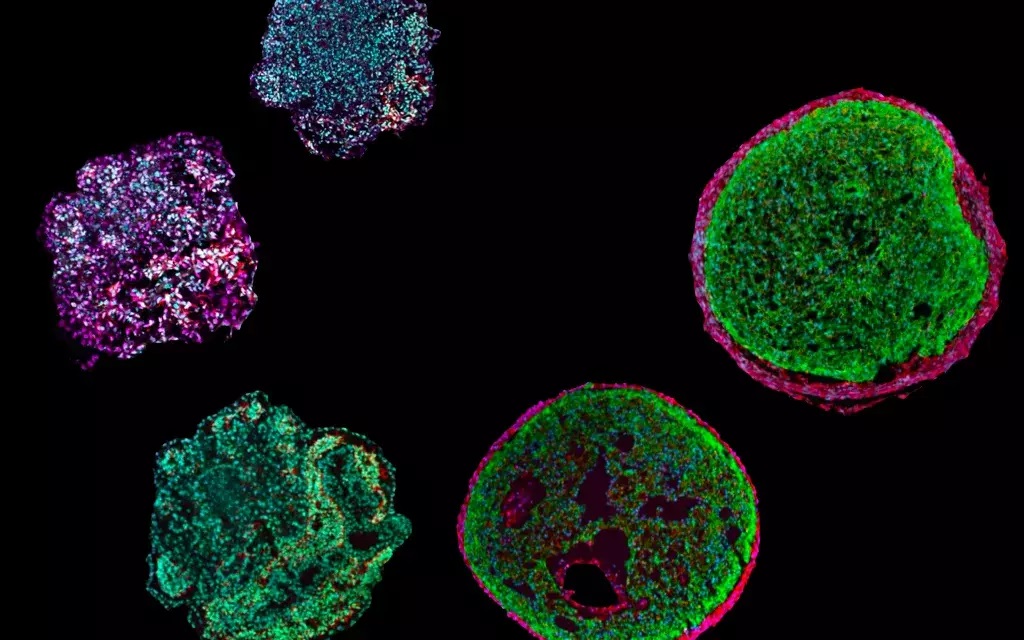
- Anna B. Meier, Dorota Zawada, Maria Teresa De Angelis, Laura D. Martens, Gianluca Santamaria, Sophie Zengerle, Monika Nowak-Imialek, Jessica Kornherr, Fangfang Zhang, Qinghai Tian, Cordula M. Wolf, Christian Kupatt, Makoto Sahara, Peter Lipp, Fabian J. Theis, Julien Gagneur, Alexander Goedel, Karl-Ludwig Laugwitz, Tatjana Dorn, Alessandra Moretti. Epicardioid single-cell genomics uncovers principles of human epicardium biology in heart development and disease. Nature Biotechnology, 2023; DOI: 10.1038/s41587-023-01718-7
- Dorota Zawada, Jessica Kornherr, Anna B. Meier, Gianluca Santamaria, Tatjana Dorn, Monika Nowak-Imialek, Daniel Ortmann, Fangfang Zhang, Mark Lachmann, Martina Dreßen, Mariaestela Ortiz, Victoria L. Mascetti, Stephen C. Harmer, Muriel Nobles, Andrew Tinker, Maria Teresa De Angelis, Roger A. Pedersen, Phillip Grote, Karl-Ludwig Laugwitz, Alessandra Moretti, Alexander Goedel. Retinoic acid signaling modulation guides in vitro specification of human heart field-specific progenitor pools. Nature Communications, 2023; 14 (1) DOI: 10.1038/s41467-023-36764-x
Resistance-Fighting Antimalarial Drug Candidate Enters The Clinic
- New antimalaria drug candidate discovered by WEHI and MSD researchers has entered into a first-in-human clinical trial.
- Pre-clinical studies have shown the candidate can inhibit growth of the malaria parasite and prevent transmission through the mosquito, reducing spread of the disease.
- Given the increasing incidence of resistance to current antimalarial drugs, new treatment options are badly needed to alleviate the global burden of disease.
 Malaria remains one of the largest killers of pregnant women and children under the age of five in most resource-poor countries. One child in Africa dies from malaria approximately every two minutes, according to the World Health Organization (WHO).
Malaria remains one of the largest killers of pregnant women and children under the age of five in most resource-poor countries. One child in Africa dies from malaria approximately every two minutes, according to the World Health Organization (WHO). Iron Link Offers New Treatment Hope For Incurable Blood Cancer
- Researchers discover new way to potentially treat polycythemia vera (PV), a rare form of blood cancer characterised by too many red blood cells.
- Study found raising hepcidin, a hormone that regulates how your body uses iron, reduces the production of red blood cells and complications from the disease in pre-clinical models.
- Recruitment for clinical trials based on this landmark research has begun, investigating the effect of a drug that has the potential to control iron regulation in patients with PV.
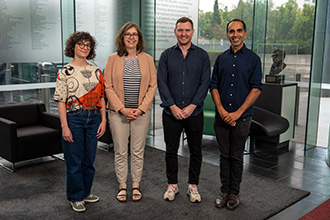 Without treatment, PV can be life-threatening as an overproduction of red blood cells causes thicker blood, elevating a patient's risk of developing blood clots and cardiovascular conditions like heart attacks and stroke.
Without treatment, PV can be life-threatening as an overproduction of red blood cells causes thicker blood, elevating a patient's risk of developing blood clots and cardiovascular conditions like heart attacks and stroke.Disclaimer: These articles are not intended to provide medical advice, diagnosis or treatment. Views expressed here do not necessarily reflect those of Pittwater Online News or its staff.